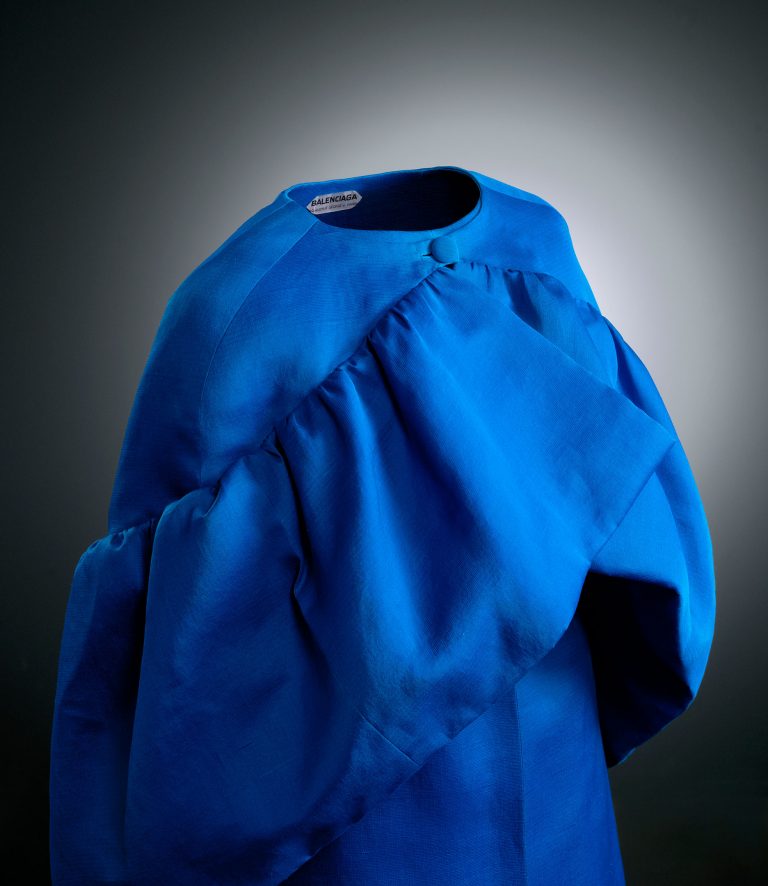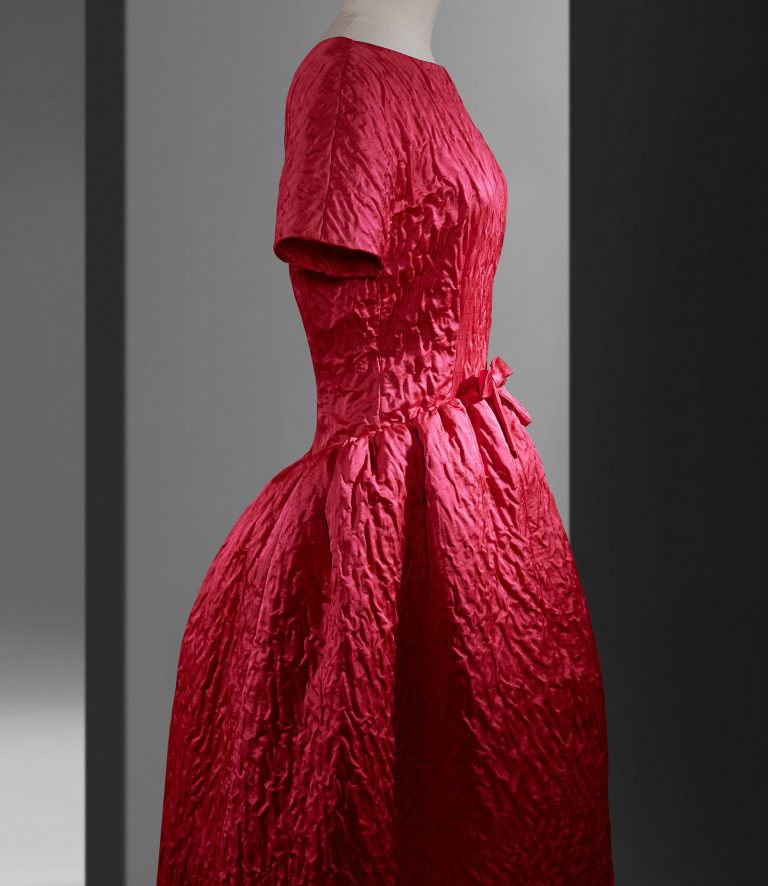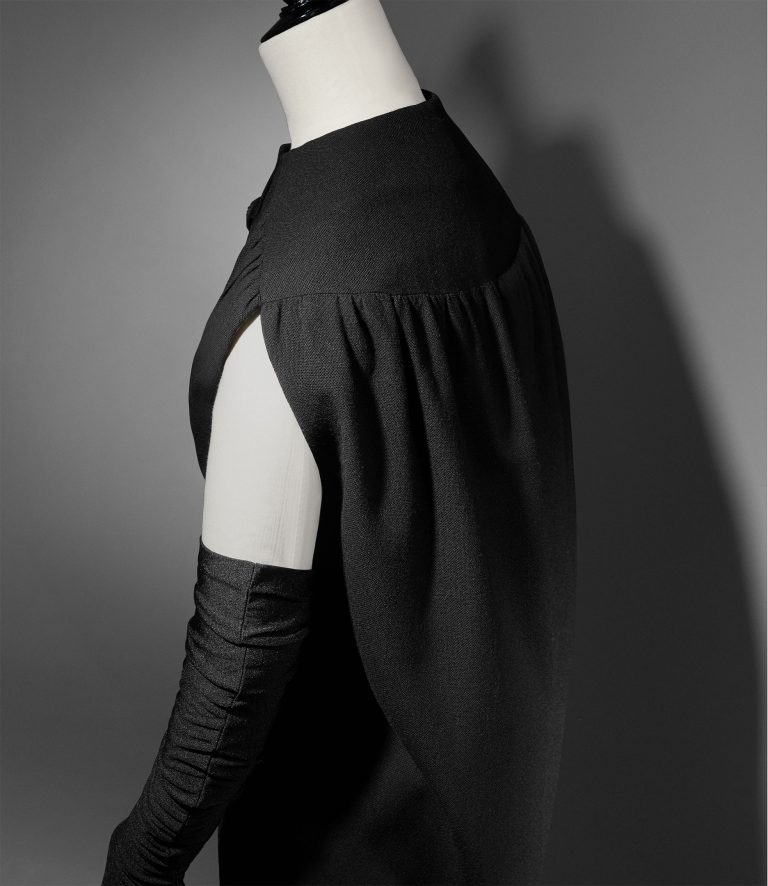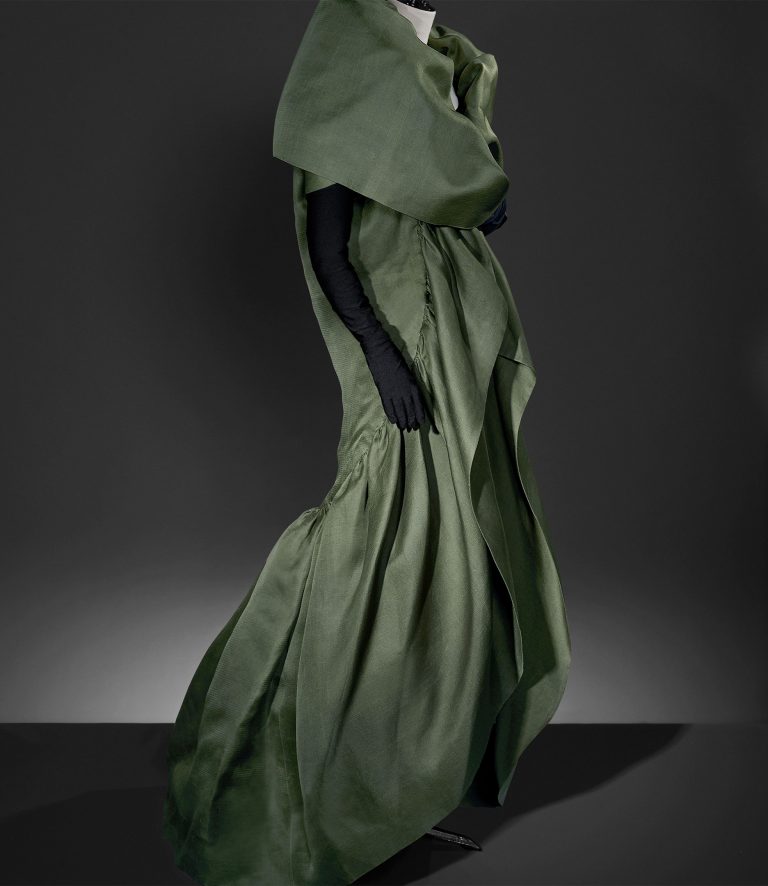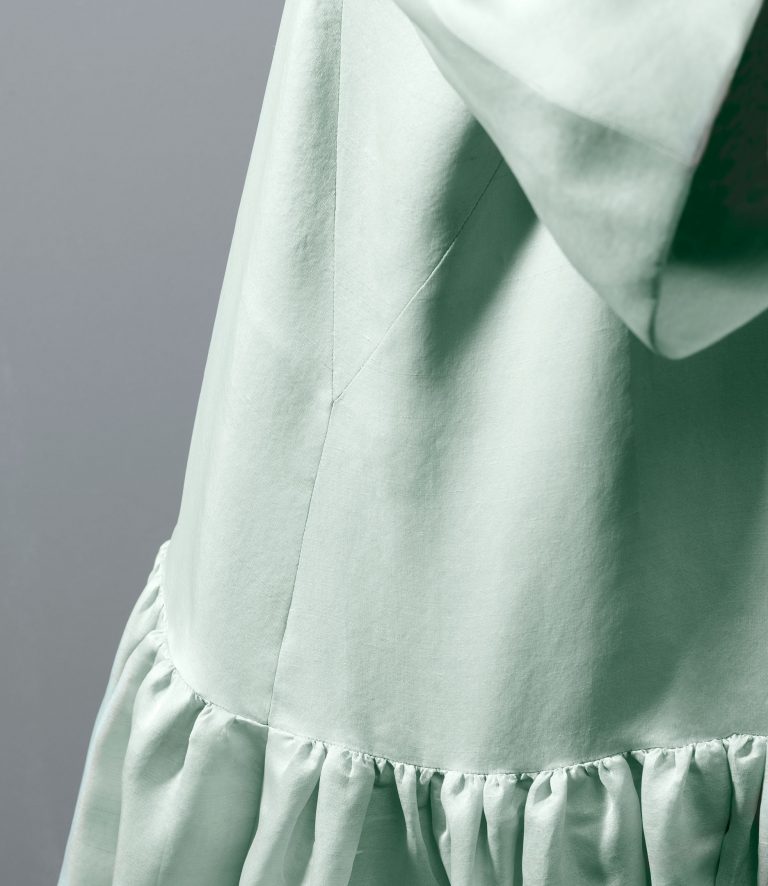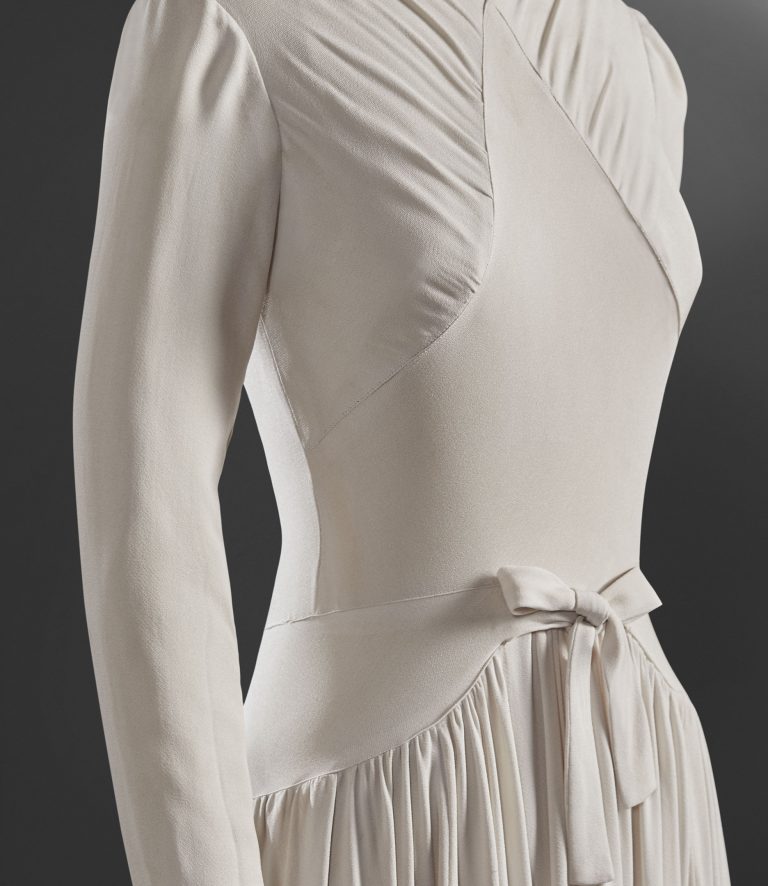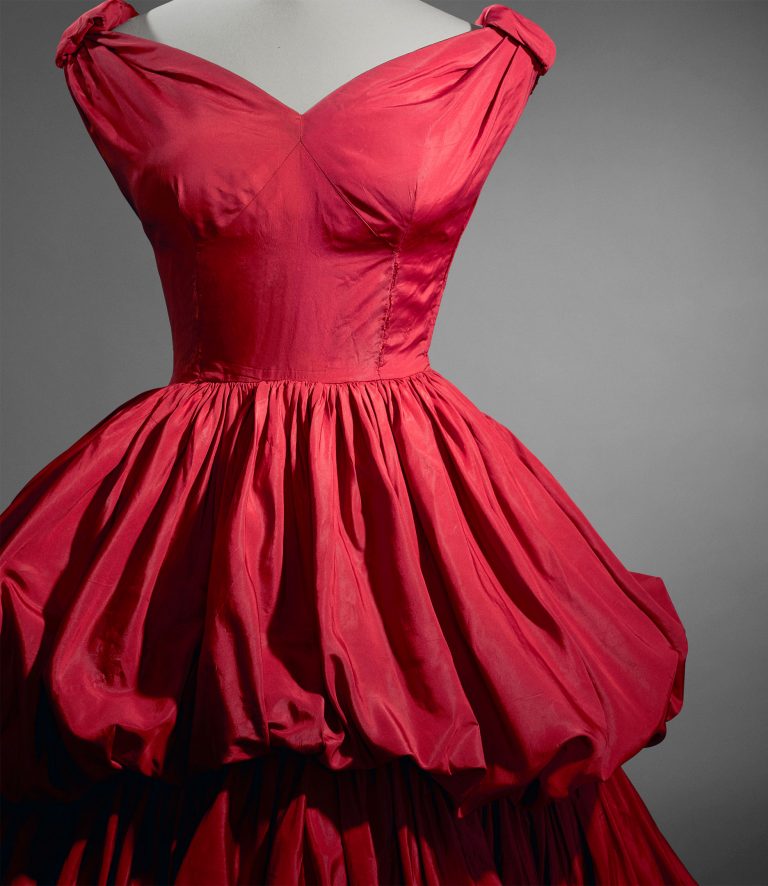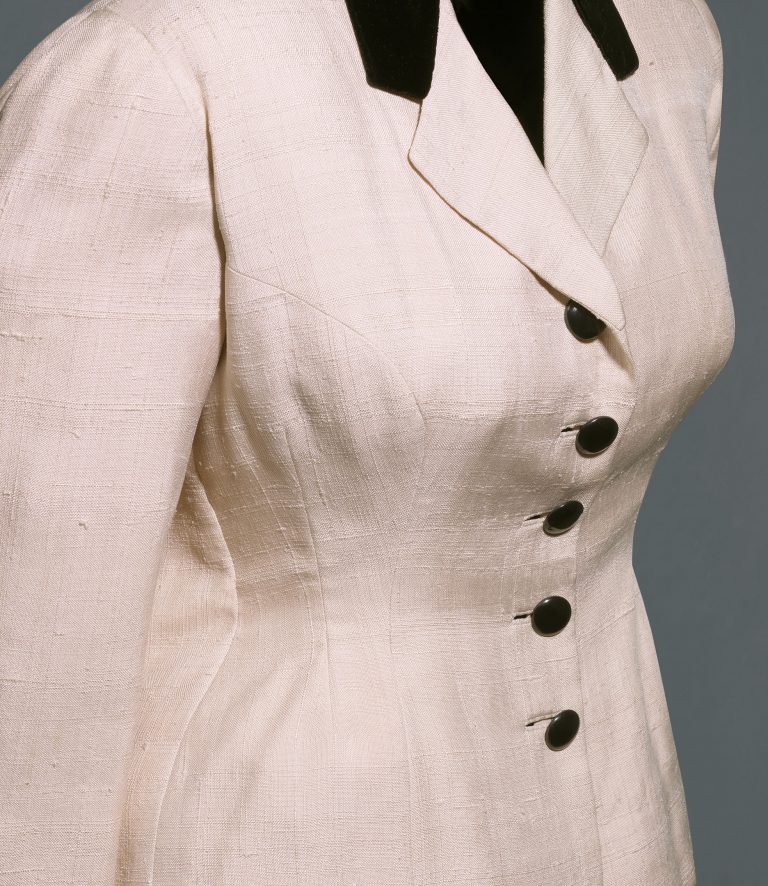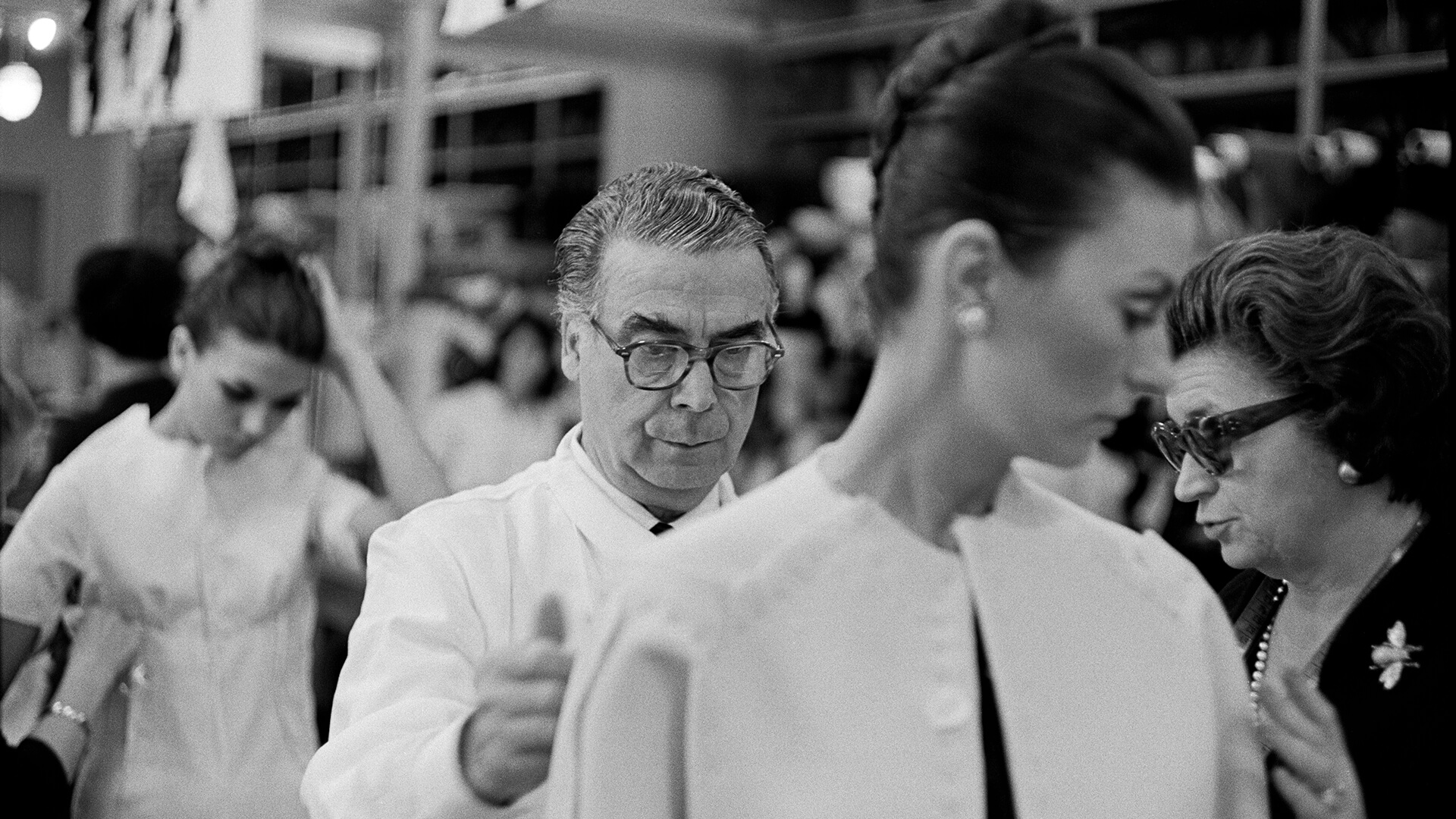
ES
2011—21
SHARING A LEGACY
2011 —
LEADERSHIP
Cristóbal Balenciaga is unanimously regarded as one of the most outstanding and influential fashion designers of the 20th century. Balenciaga was a tireless perfectionist who acquired total mastery of couture techniques and dedicated his life to perfecting his creations to the utmost. In a career spanning more than five decades, he earned the respect and admiration of his peers and the trade press.
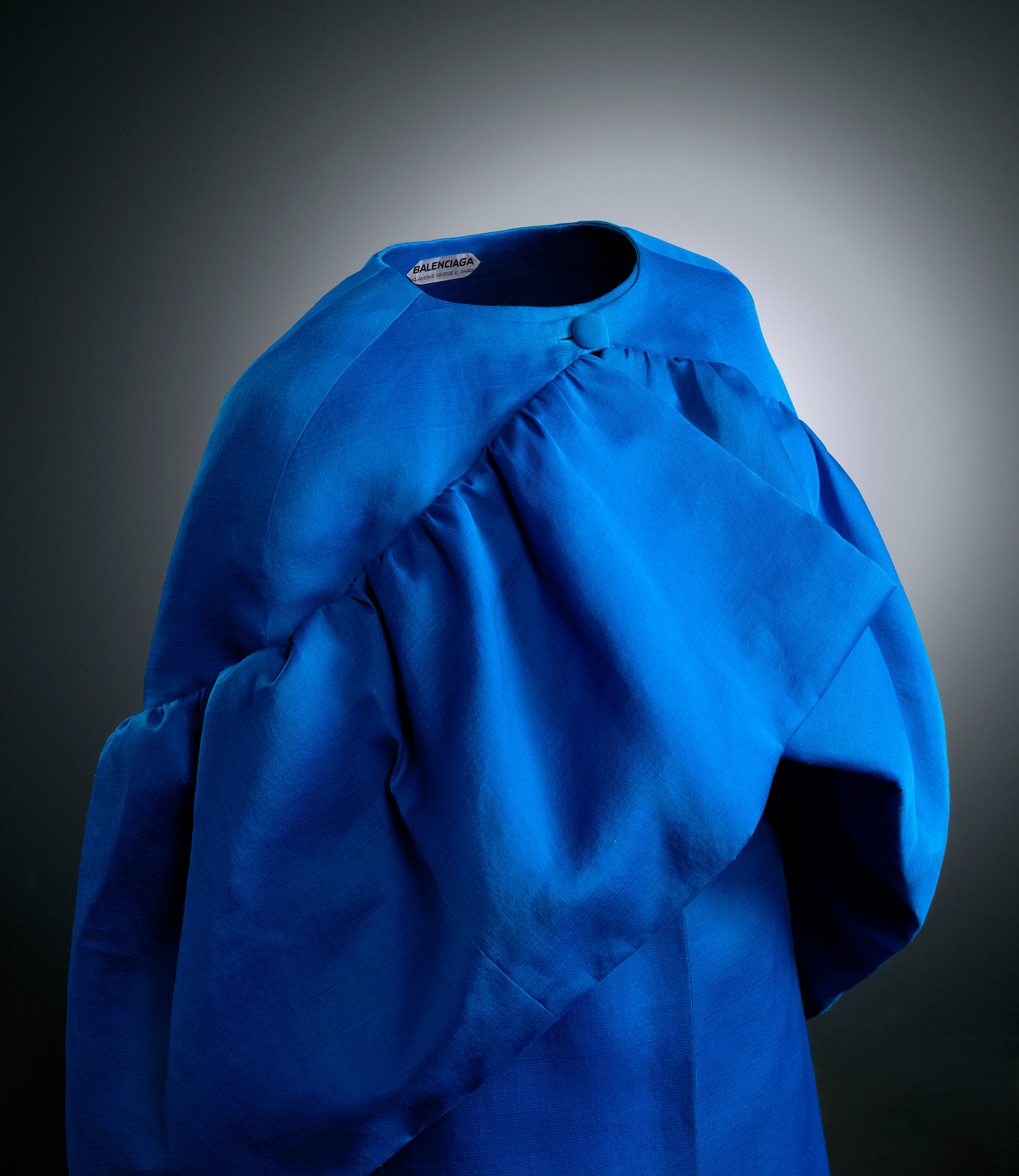
Museum of fashion, museum of the designer
The Cristóbal Balenciaga Museum is the first museum entirely dedicated to a fashion designer, and the only Museum that constantly researches, preserves and disseminates the legacy of the “Master” of haute couture. Its facilities include 6000 square metres that spread over two overlapping buildings, representing both the past and the present of the institution: the historic Aldámar Palace, the former home of the Marquises of Casa Torre, linked to the biography of Cristóbal Balenciaga, and an impressive glass extension of expansive, diaphanous space that houses the exhibition area, the didactic area, and the conservation area. In this same space, the Museum houses a unique collection; it boasts more than 5,500 pieces of clothing, accessories, and an ever-growing inventory of archives. Its material and chronological amplitude, that include even the earliest models made by the couturier, make it one of the most complete, coherent and interesting collections of its kind internationally.
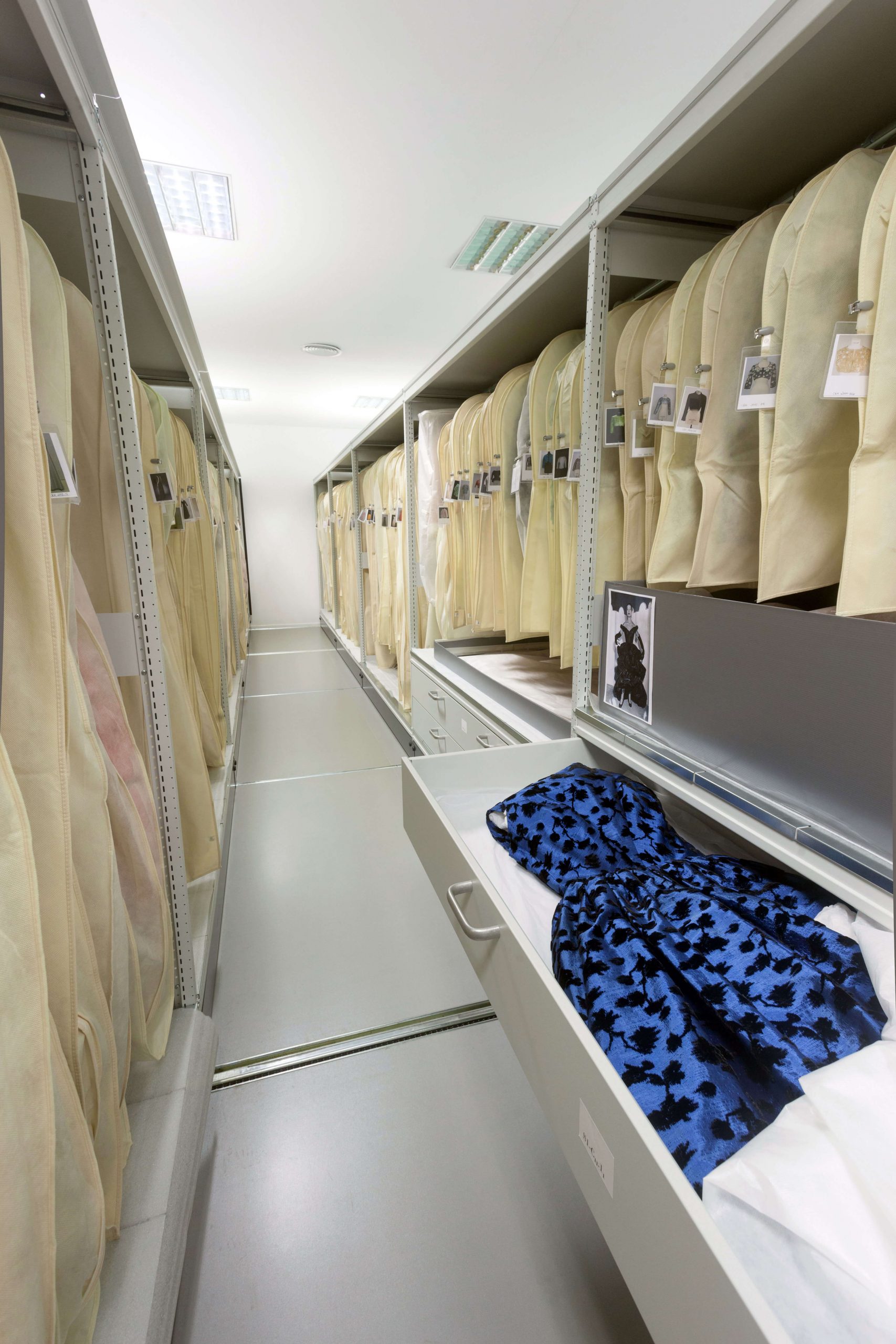
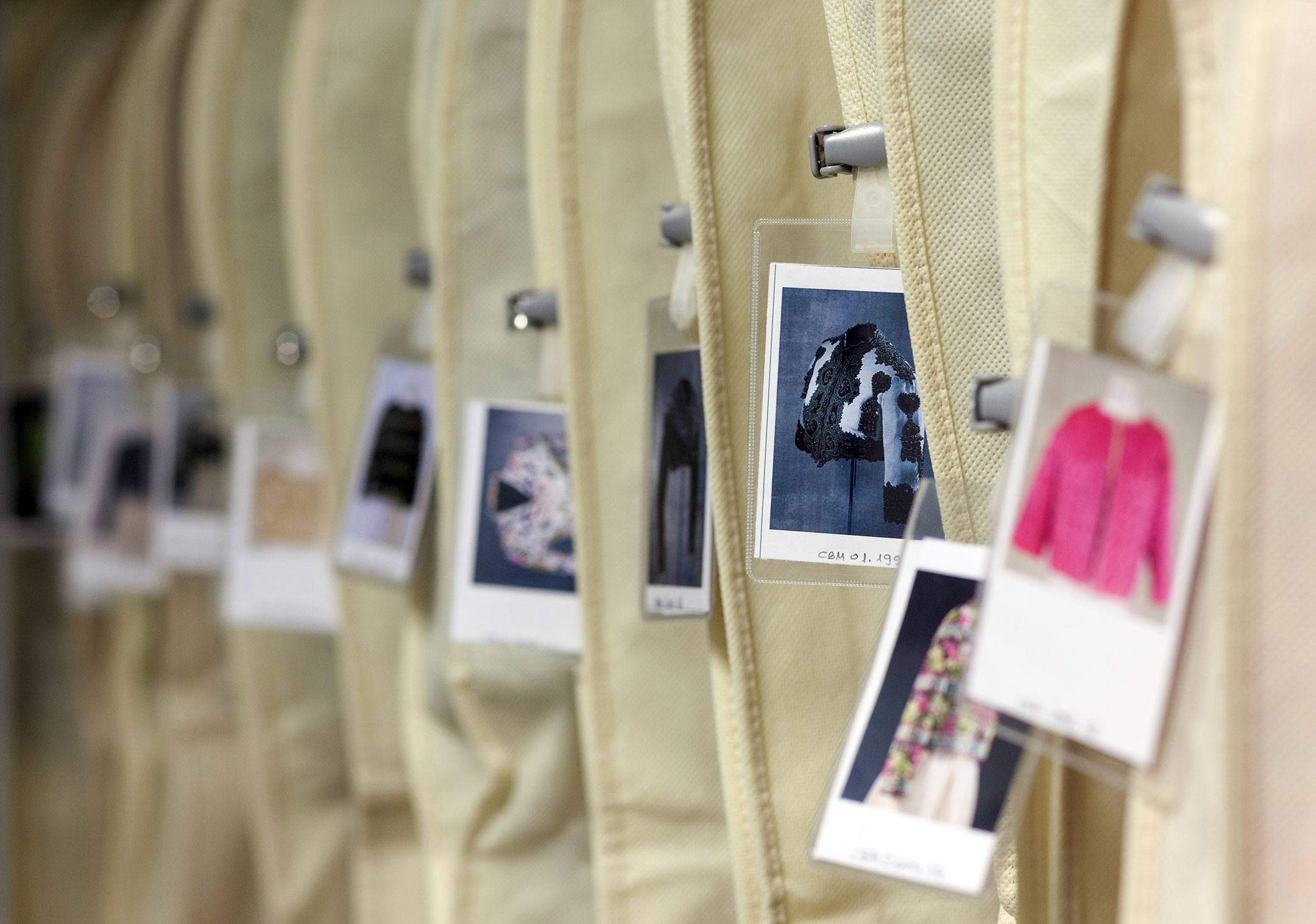
“Balenciaga made women feel free; there is no better praise”.
Hubert de Givenchy
Many of the pieces are milestones in the history of fashion and have made their way to the Museum’s archives thanks to generous donations from former clients of the Balenciaga Houses in Spain and Paris, and from other public and private donors. One of these great patrons was Hubert de Givenchy (1927-2018). As a friend and devotee of Balenciaga, Givenchy was a great supporter of the Museum’s project and honorary president of the Foundation that directs the museum. “Monsieur”, as he was known among us, managed to gather a significant collection of Balenciaga’s works through his circle of close friends and clients over the years which are now stored in the institution, just as he had wished.
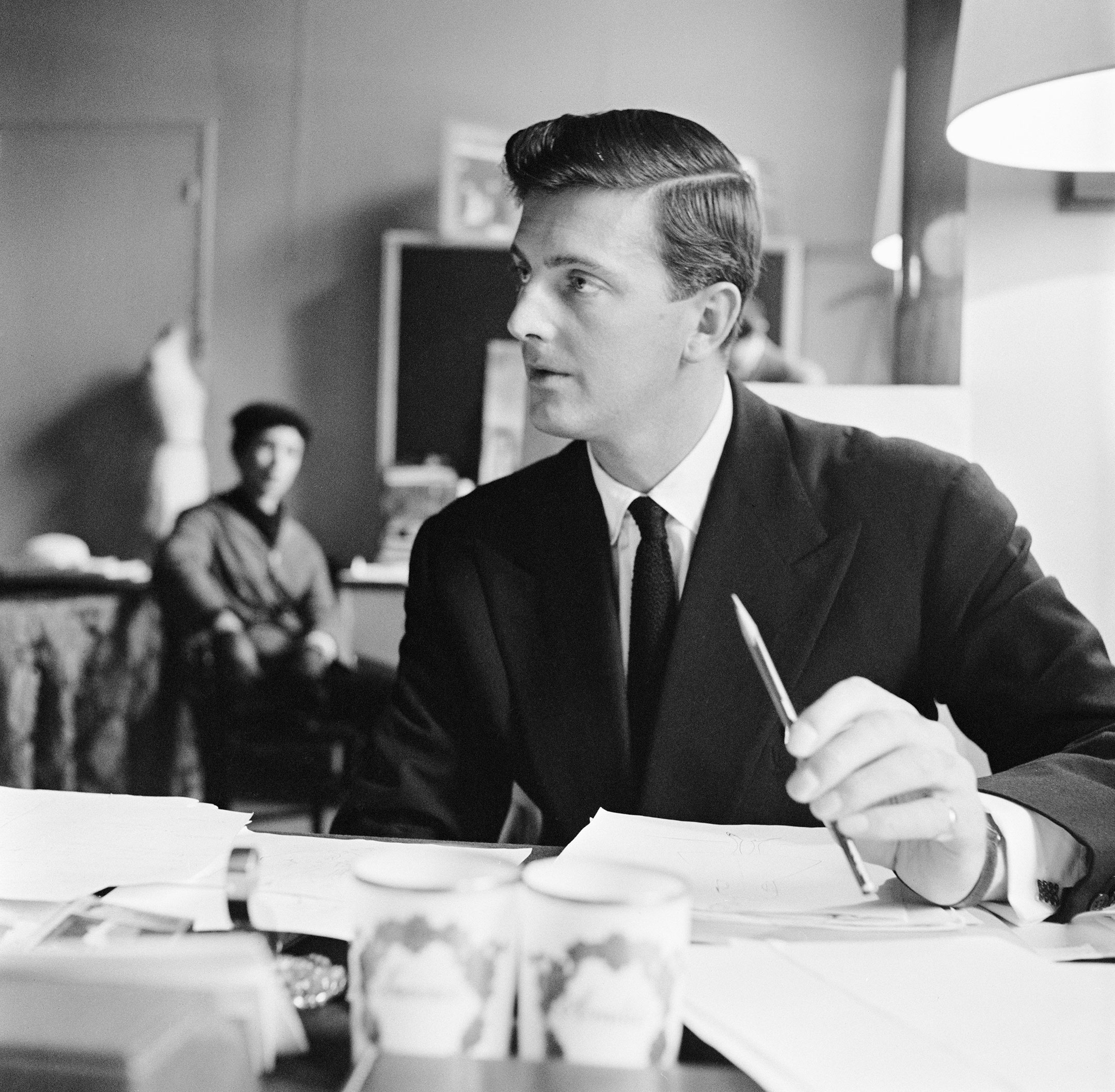
Evening ensemble in indigo blue silk gazar, 1965
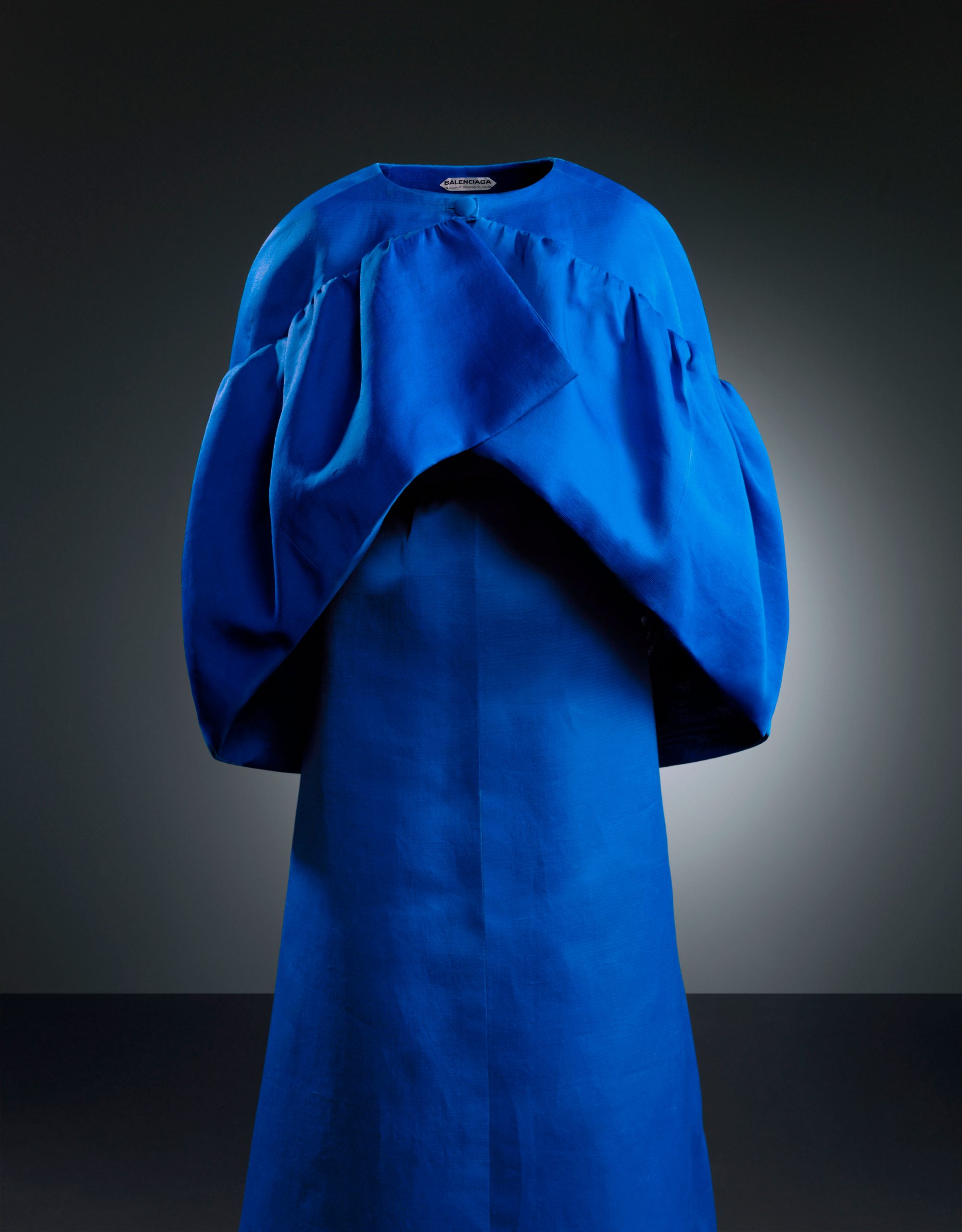
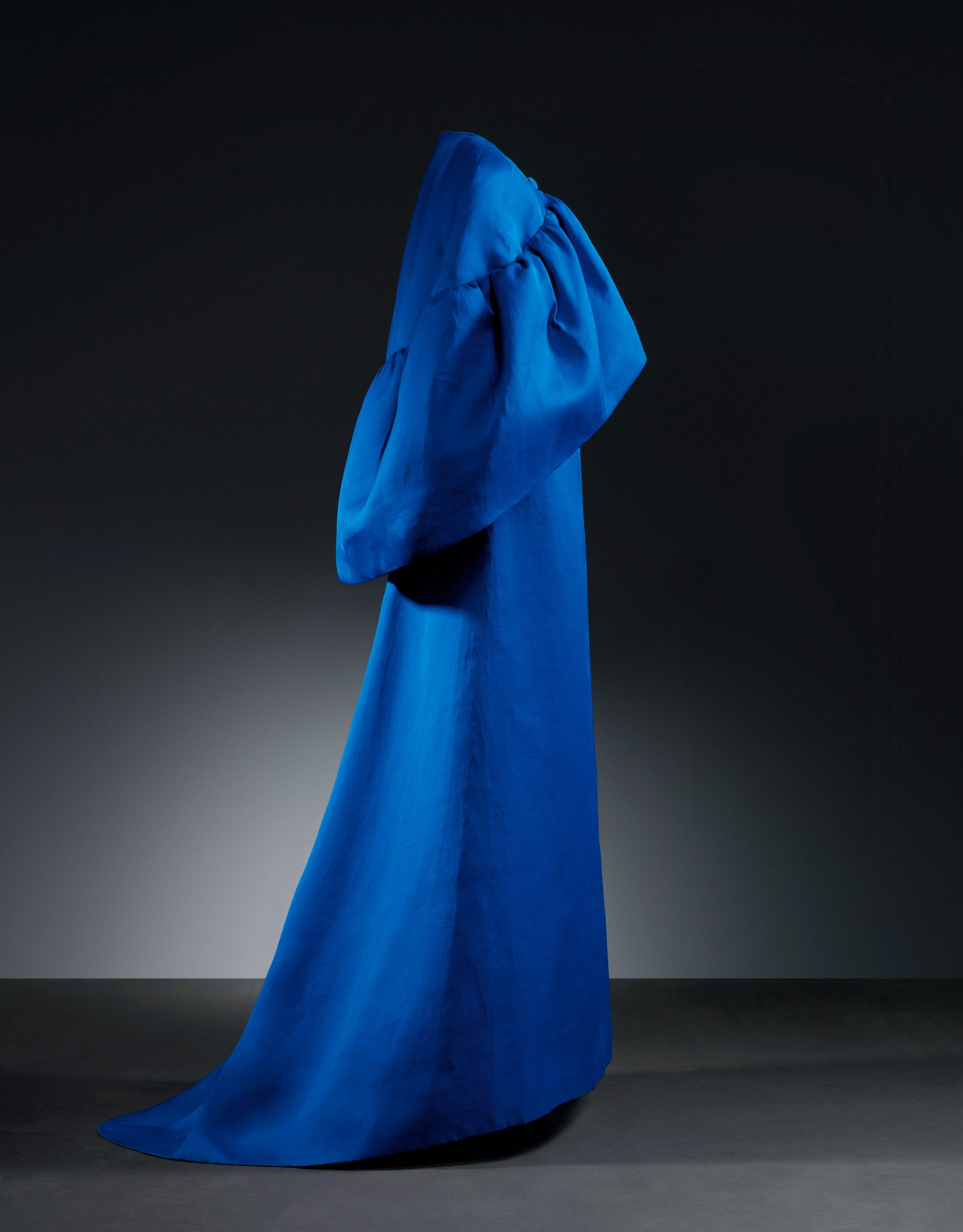
This marquisette dress and bonnet set, donated by Hubert de Givenchy, was presented at the Museum’s inaugural exhibition. This ensemble is characterised by its clean, minimalist lines and powerful colours. It is Model 125 from the summer collection of 1965, made at the Maison Balenciaga in Paris. The dress is long, with a slight train, a subtle low neckline at the front and a plunging back; it is sleeveless and fitted at the waist. The bodice is tailored with pleats, and it ties at the back with hook-and-eye fastenings down the centre. It is lined with the same colour silk organza. The yoke capelet has a scooped cut and a gathered ruffle that curves down towards the back. It is made of blue silk with a soft sheen, is fitted and closes on the left side with a zip.
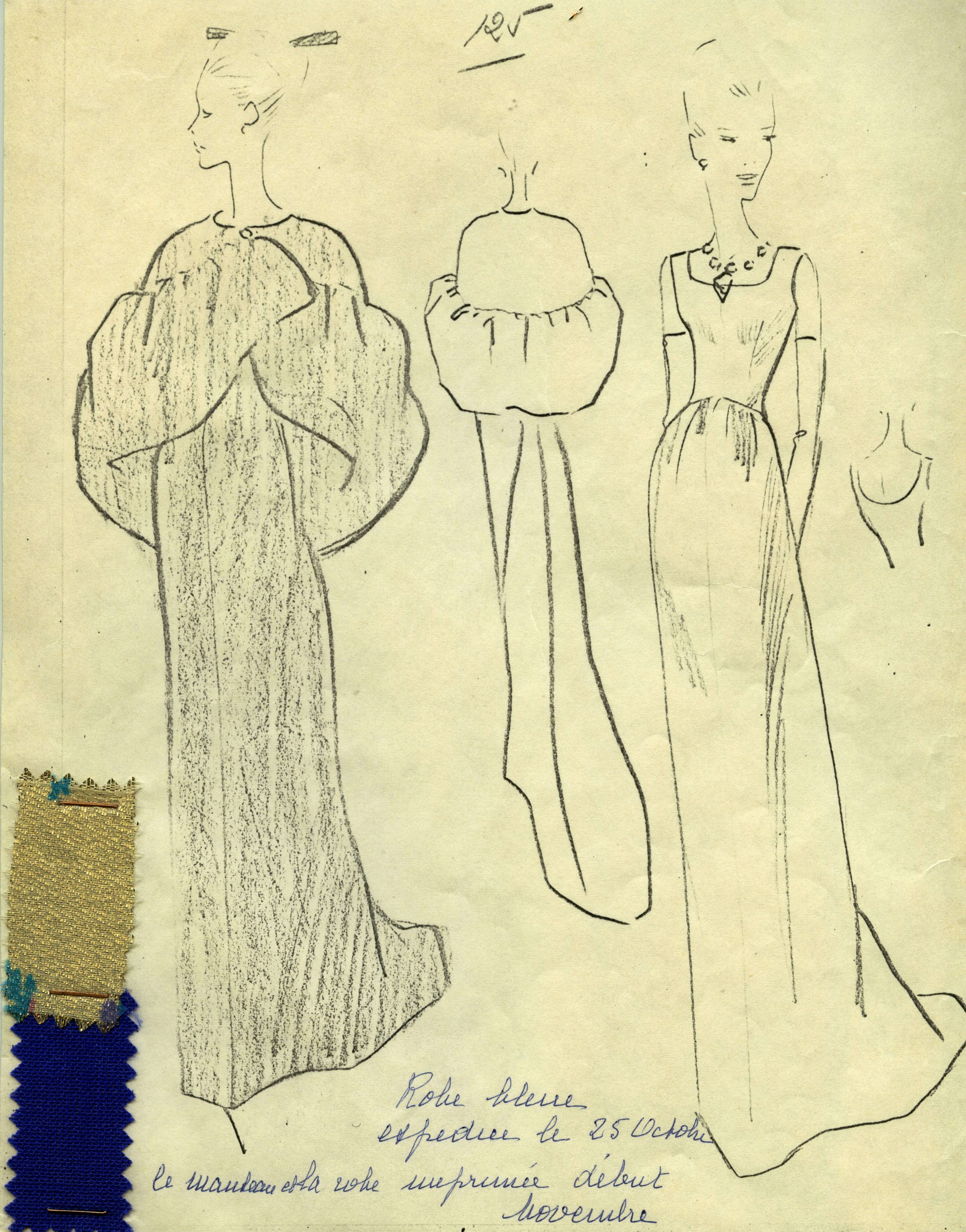
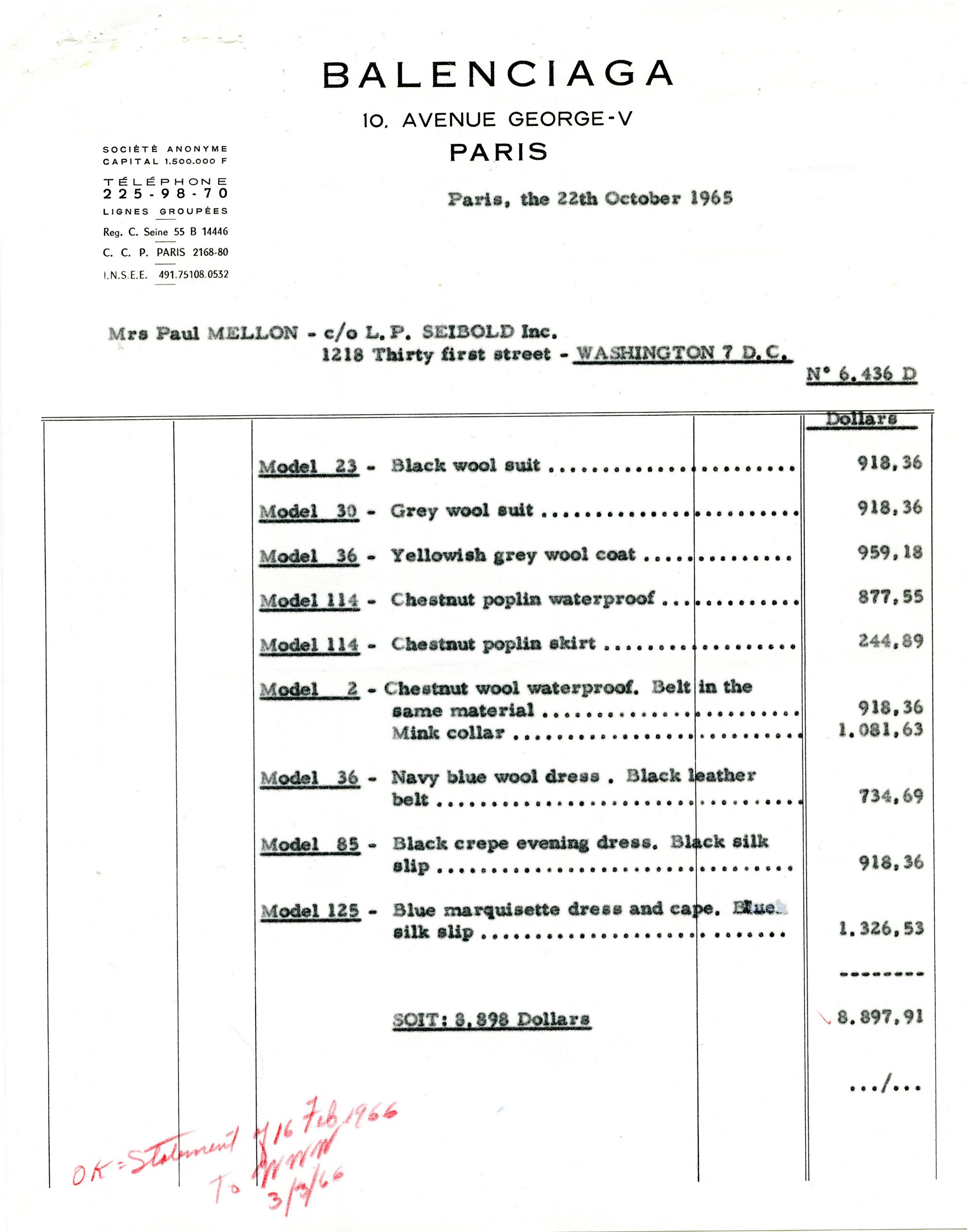
Preserving the legacy
Preventive conservation in the Museum’s storerooms
The works are carefully conserved under the strict protocols established by the Collections Department for the handling, transfer and exhibition of the pieces that complete the collection. The environmental conditions of the rooms in which the pieces are stored, moved and exhibited are sustained and stabilised to ensure the optimal conservation of each piece. The lighting conditions are also regulated and designed to protect from potentially harmful radiation. All pieces are exhibited under certain parameters of light (never more than 50 lux), humidity (below 50%) and temperature (at a constant 18 degrees celsius). Preventive conservation is one of the aspects on which most emphasis has been placed in order to mitigate both the natural deterioration of the materials as well as the deterioration caused over time before their arrival to the Museum.

EY, a global company for professional services, aims to build a world that works better. The firm fosters leadership and teamwork to help its clients, employees and society at whole generate long-term value. EY collaborates with the Cristóbal Balenciaga Museum to examine and shed light on these past ten years of work.
2013 —
TRUST
The haute couture clientele of the 20th century belonged to an elite who highly valued clothing as a symbol of personality, status and lifestyle. The Balenciagas, as the couturier’s clients were known, identified with his doctrine: “Every woman has her own style, and that style must be valued over trends”. With great fortunes, titles and artistic or diplomatic careers, these women stood out for their elegance and beauty.
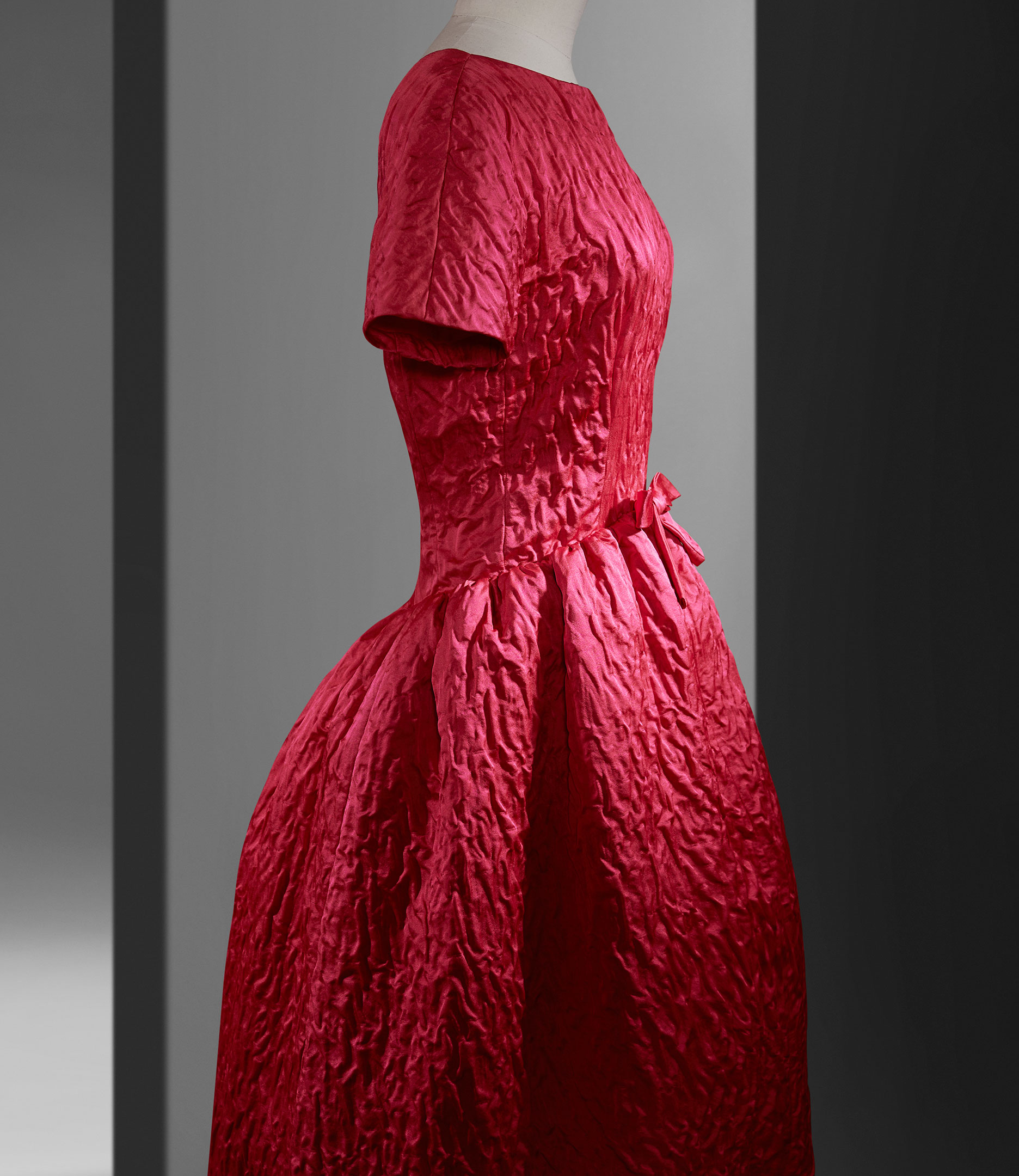
Rachel L. Mellon’s collection arrives at the Museum
One of these loyal customers was Rachel L. Mellon (1910-2014), known as Bunny, one of the great ladies of American high society. Heiress to a vast fortune, philanthropist, art collector, garden designer— including the famous Rose Garden at the White House—, personal friend of the Kennedys and wife of banking mogul and distinguished patron Paul Mellon, she was the archetype of a perfect client: wealthy, sensitive and exclusive. Rachel Mellon exclusively dressed in Balenciaga for twelve years, until the house closed. She became an icon of discretion, elegance and style. As well as a great client, Mellon was also a personal friend of the couturier: Their relationship reflected in the adjustments and special designs made for her at the fashion house, which Balenciaga himself passed on to Hubert de Givenchy after his retirement.
“One of the joys of my life was to have known Cristóbal Balenciaga. He understood luxury and simplicity with deep sensitivity”
Rachel L. Mellon
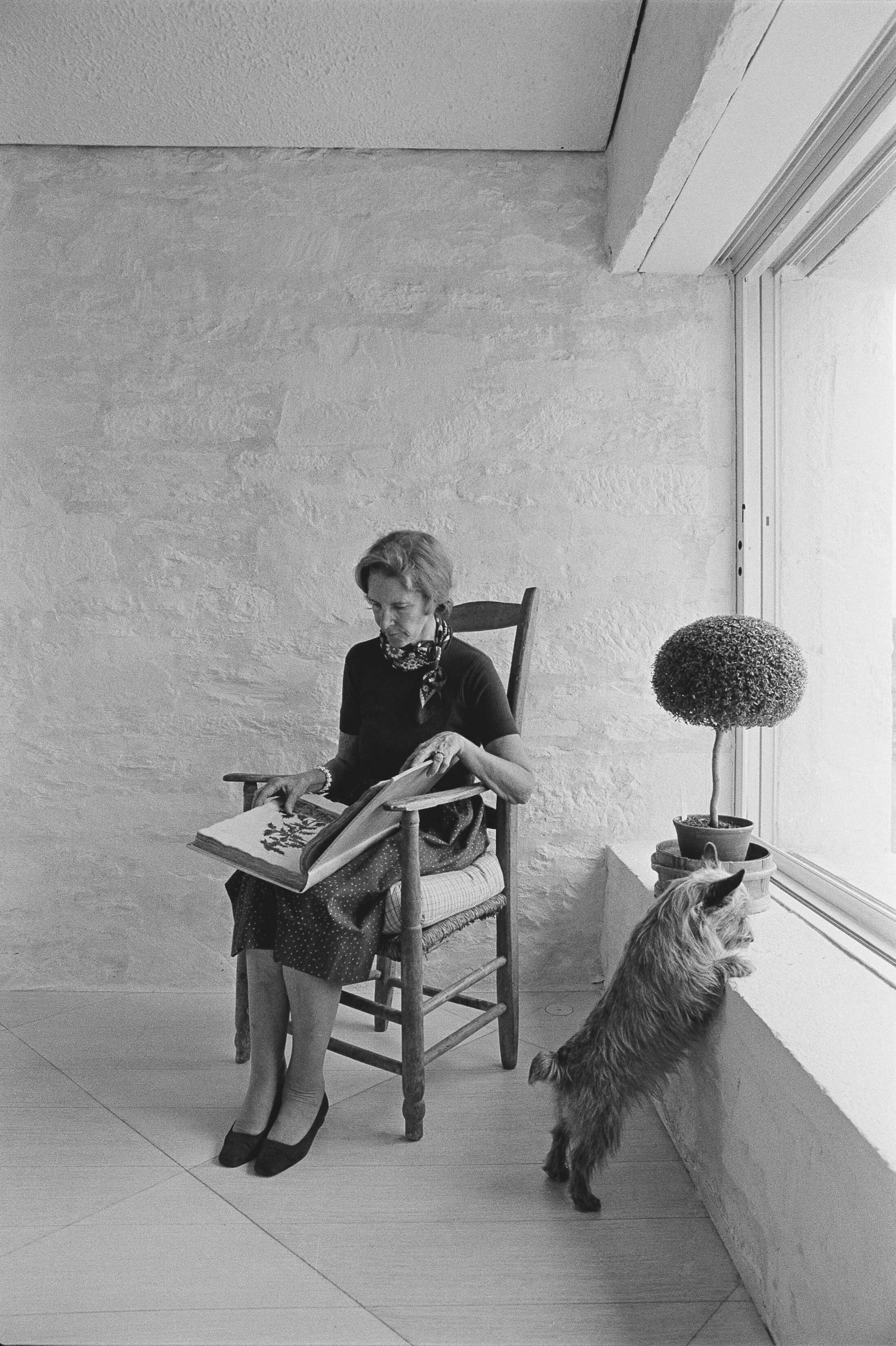
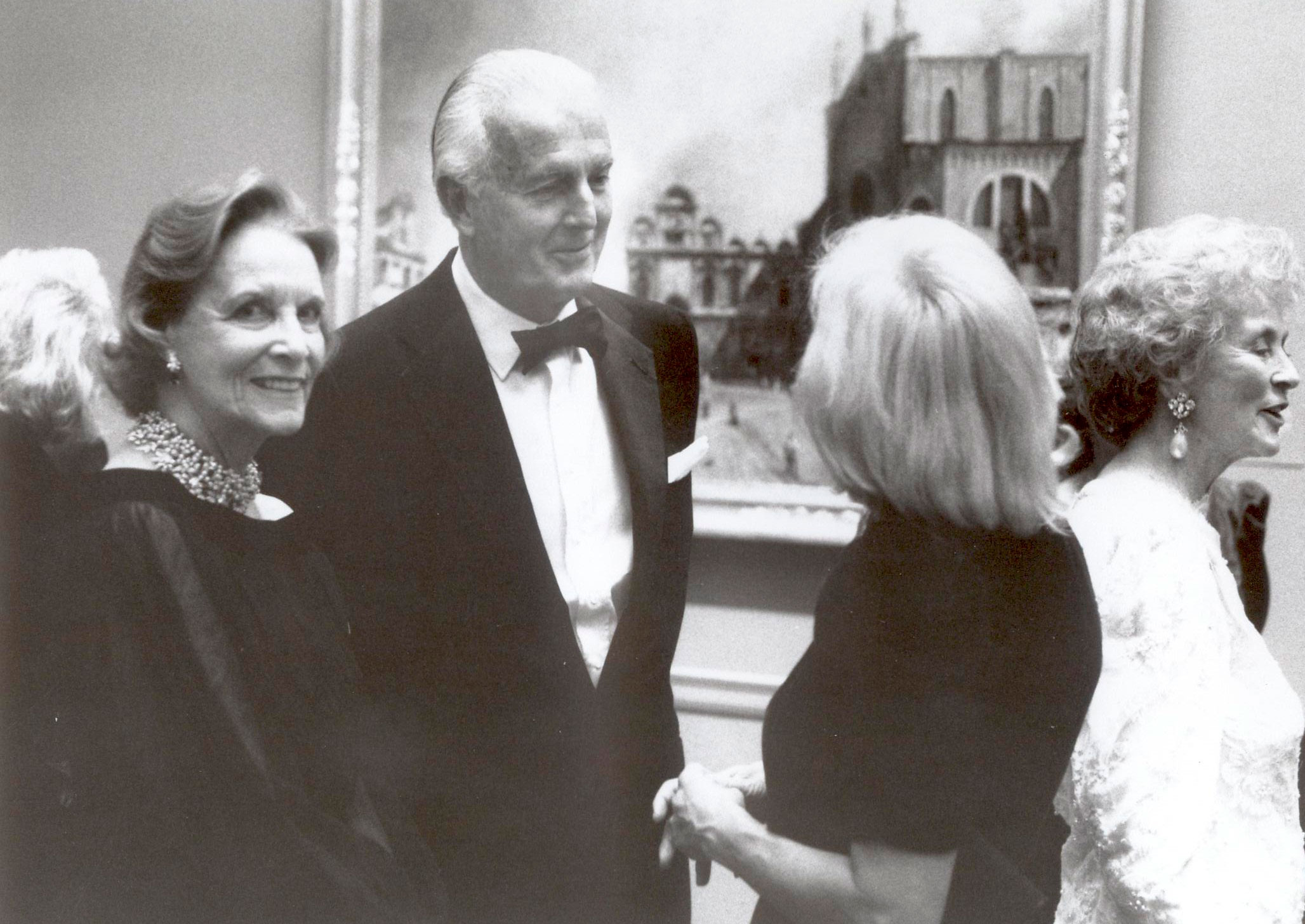
In honour of their friendship, and thanks to the trust that the Mellon family has placed in the Museum, since 2014 a considerable number of the creations made by Balenciaga for Mrs. Mellon have been conserved in Getaria, constituting the most substantial collection from a sole benefactor in the Museum’s archives. The collection consists of 660 pieces of clothing (representing day, cocktail, evening, garden, home and even night wear), 138 original sketches, and 250 archives.
Evening dress in raspberry cloqué, 1962
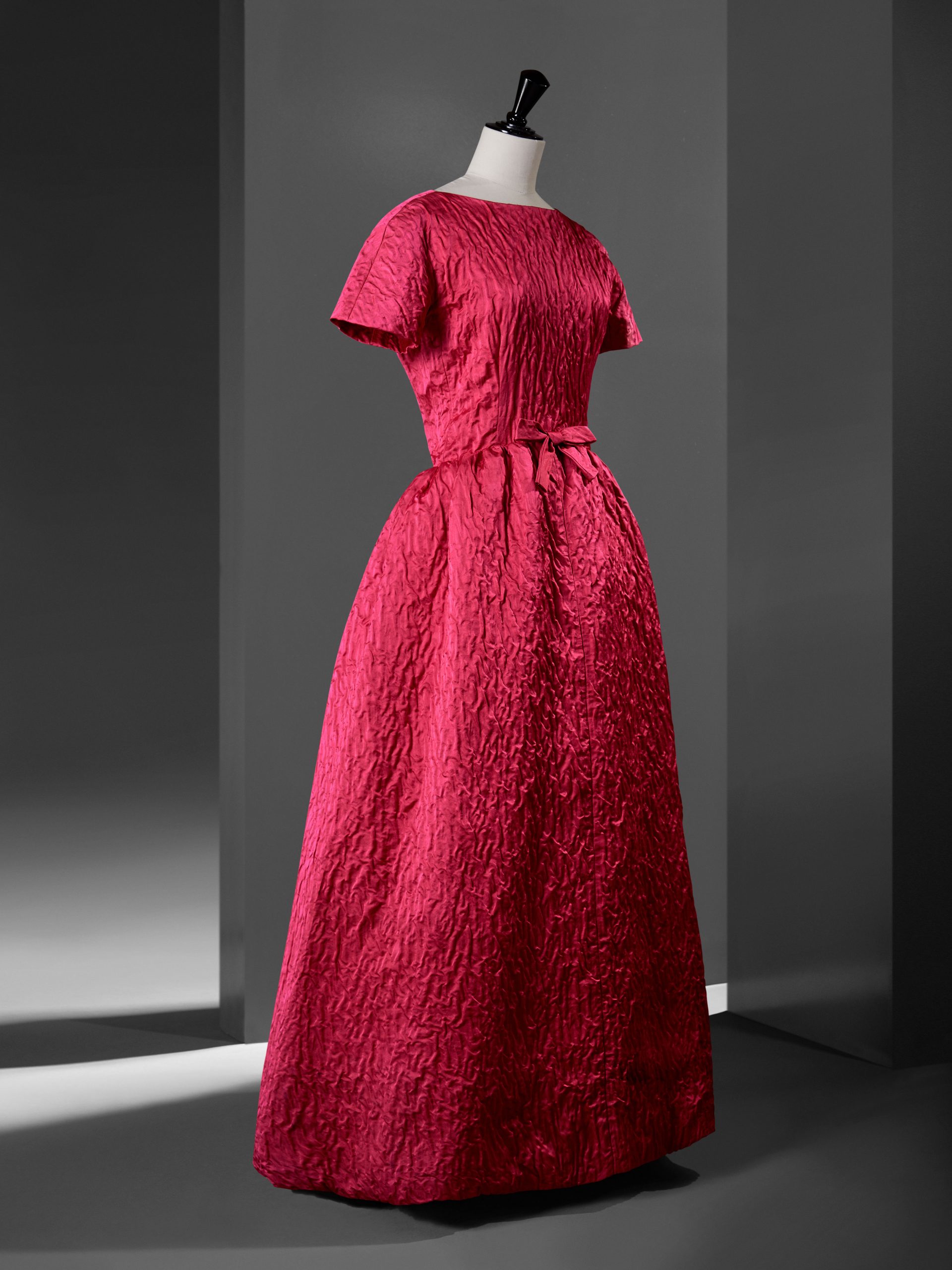
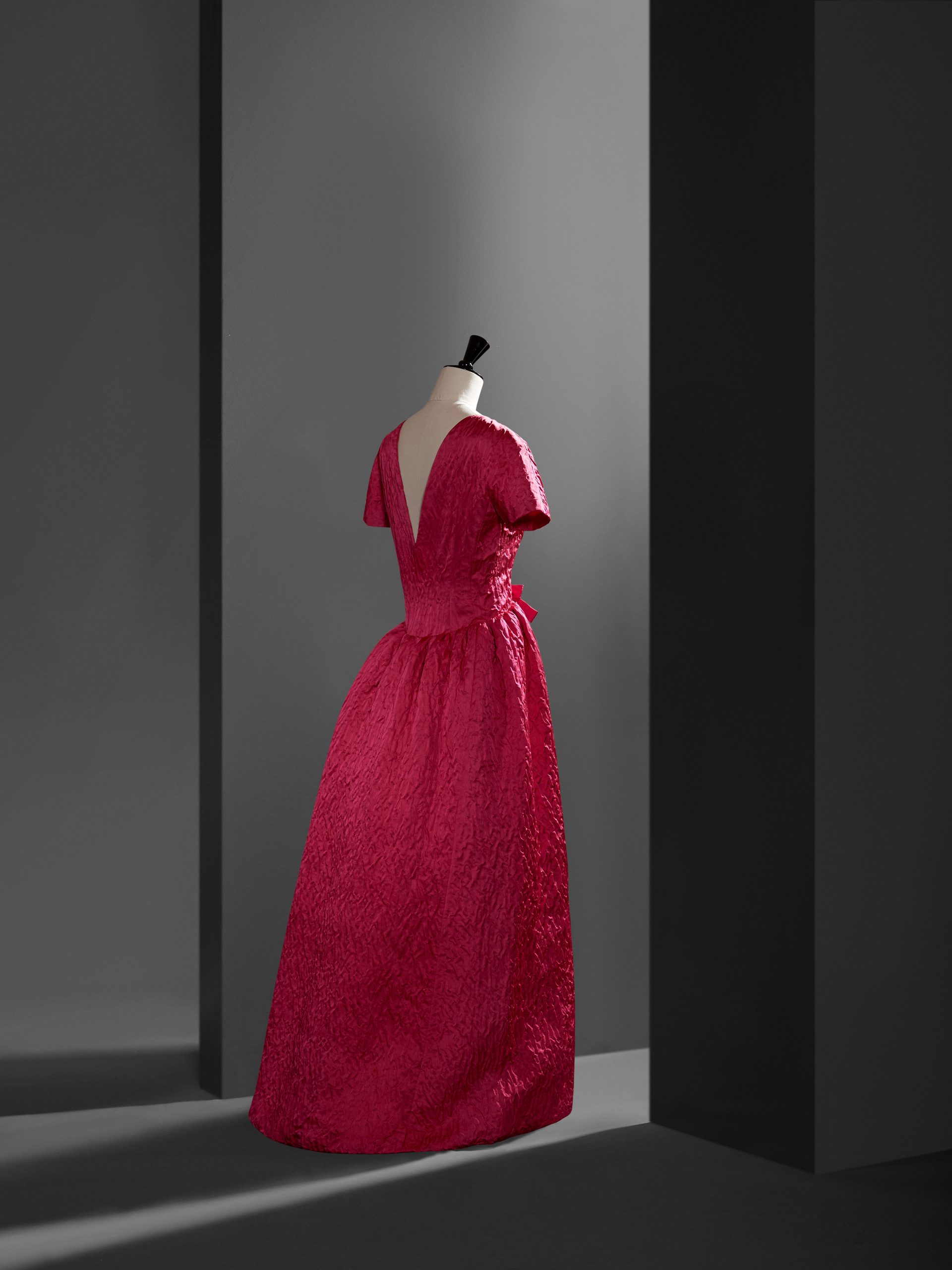
The outfits selected by Rachel Mellon show a clear understanding of the Balenciaga philosophy; the relationship between space, body and garment, the importance of the cut and the quality of the materials. Mellon loved the colours and textures of fabrics, as with this evening dress in raspberry cloque with a square neckline, V at the back and wide skirt. The salient richness of the Mellon collection lies in its variety and from possible learnings about the relationship between the pieces and archives to which we have access today thanks to Mrs. Mellon’s conservation. This interrelationship between the paper archives and the clothing collection perfectly conveys the buying process of an international client at the House of Balenciaga, starting from the sketches sent to select an outfit to the issuing of the invoice.
“Tried on. Keep for later may come on style”
Note written by Rachel L. Mellon on a small paper found in the concealed pocket of an outfit. 1965 collection.
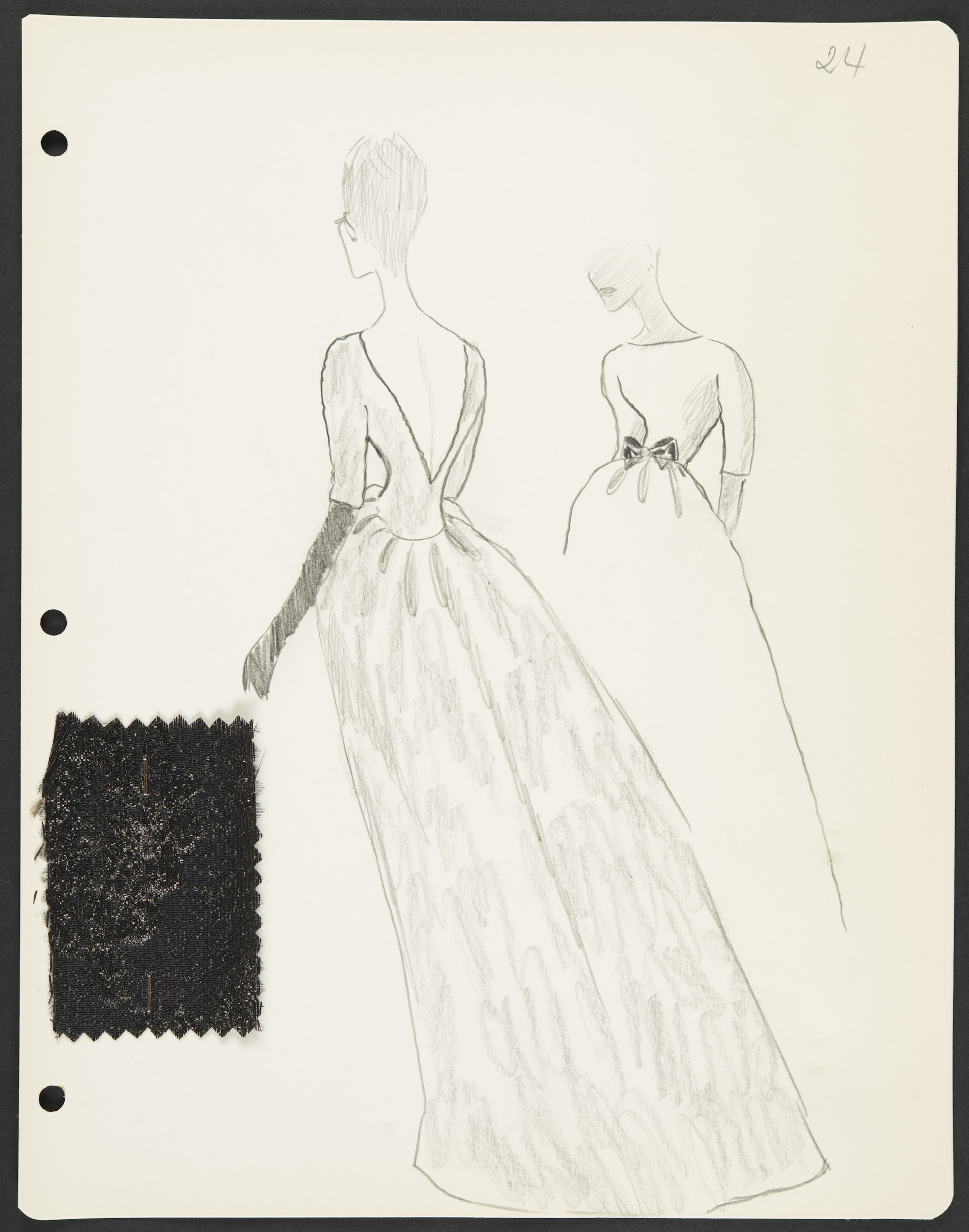

It also reflects the exclusivity and preferential treatment given to Mrs. Mellon. The American had her own mannequin with her measurements at the Maison in Paris, which meant that she did not have to undergo the famous three fittings that were the house standard. Comfort, simplicity and elegance were the characteristics that Mrs. Mellon sought and which, regardless of the season, determined her choice of clothing as she followed her own taste and even repurchased the same pieces. The emotional value that a client like Mrs. Mellon had for Balenciaga is self-evident in the way the 138 original sketches reached the Museum carefully bound in leather, forming a book. A single sentence is handwritten in gold lettering on its cover and case: I feel pretty.

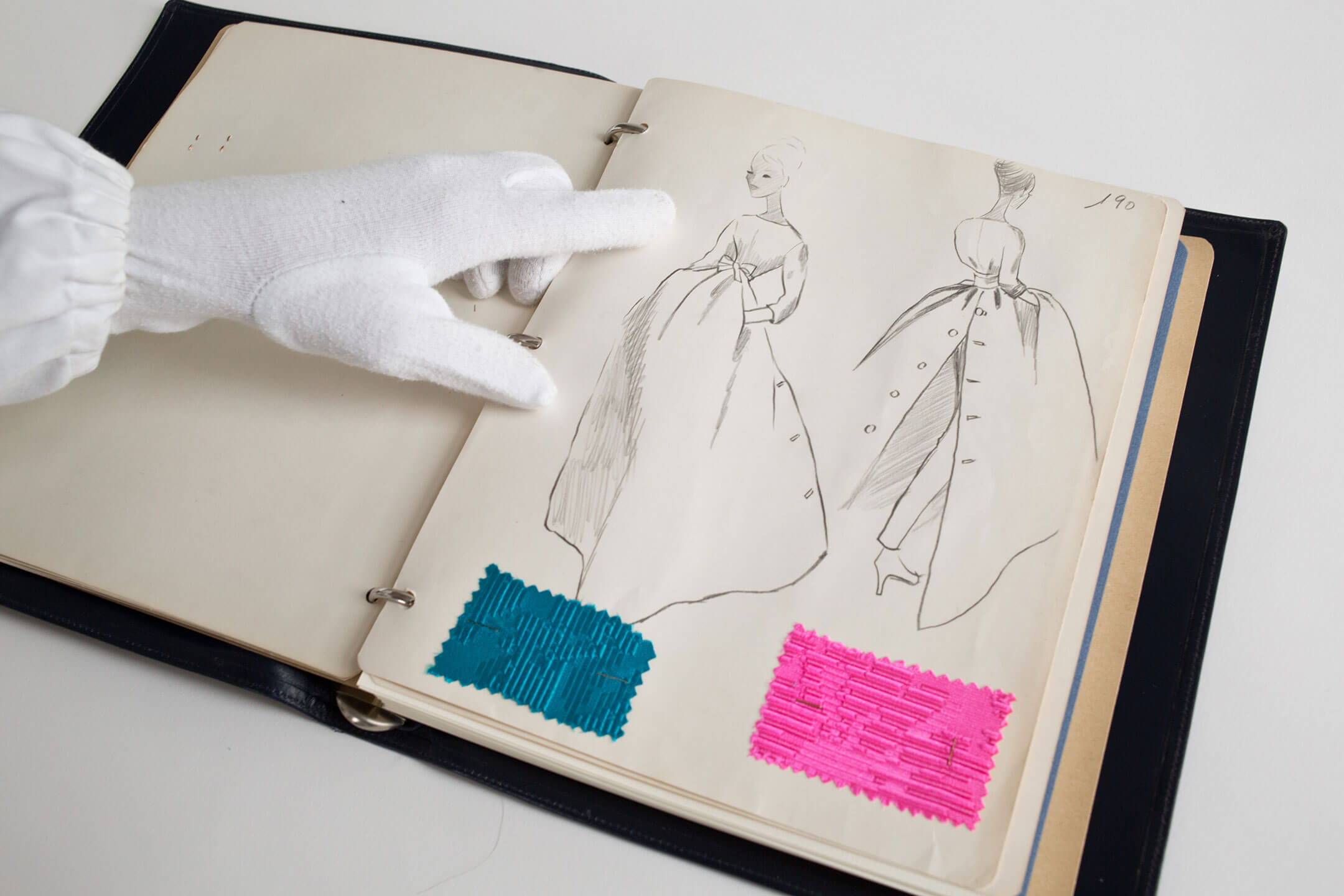

El Diario Vasco has supported the Cristóbal Balenciaga Museum project since its beginnings, providing a means of communication and information that connects the Museum with its closest public. Founded in 1934, it is the most widely read newspaper in Gipuzkoa, both in print and digital format. The trust of its readers makes El Diario Vasco one of the leading media outlets in Euskadi, the Basque Country.
2015 —
FIDELITY
The testimonies gathered by the Museum’s research and the clear consistency of his creative career attest to Cristóbal Balenciaga’s honesty, not only in his relationship with those around him, but also with himself. His creations were always a faithful reflection and result of his hard work and personal effort, he was never seeking shortcuts to success. The collections he presented each season spoke for themselves, there was no need for forced interpretations or elaborate staging. Balenciaga showed himself to others as he was: true to himself.
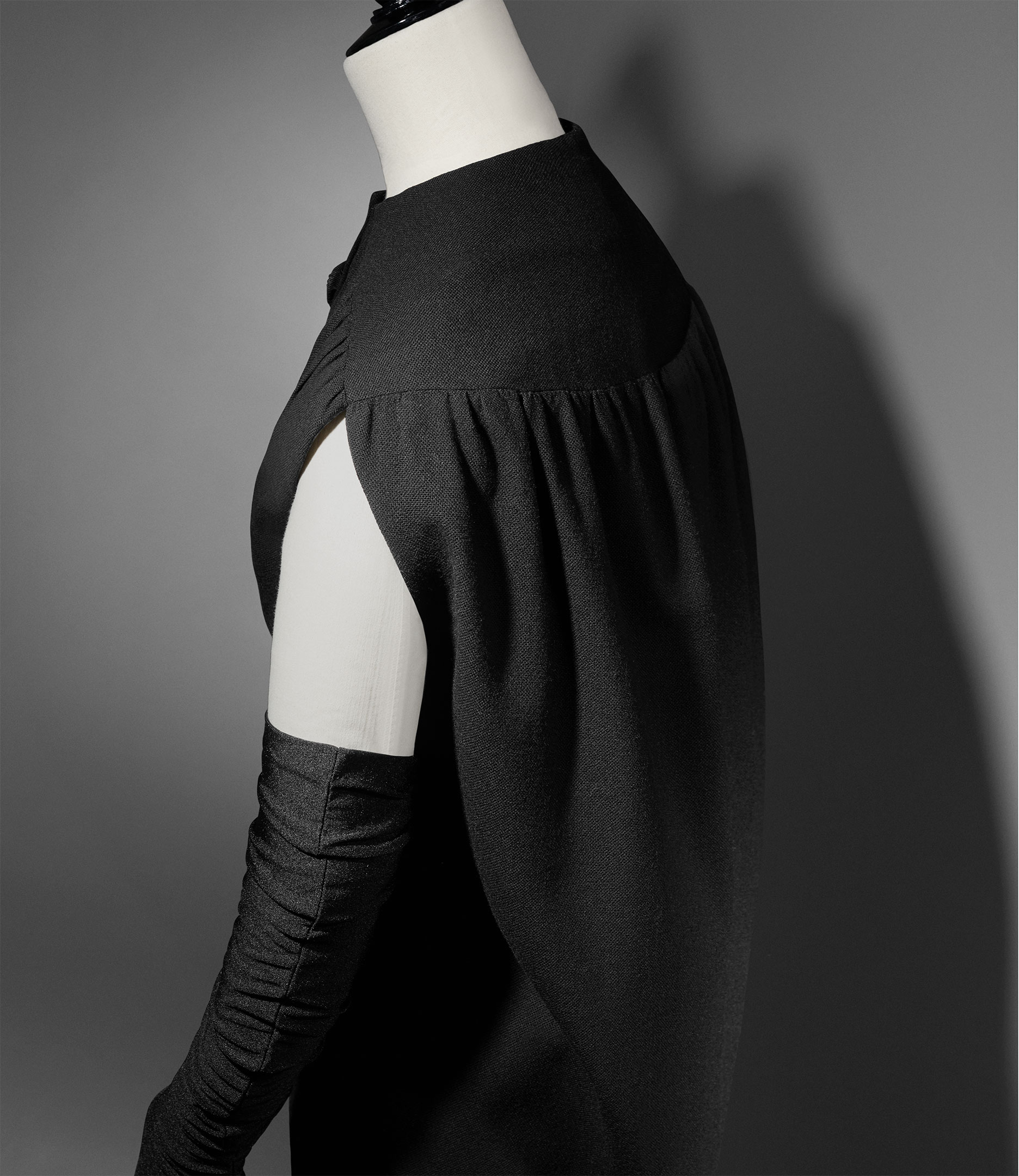
The hands that sew
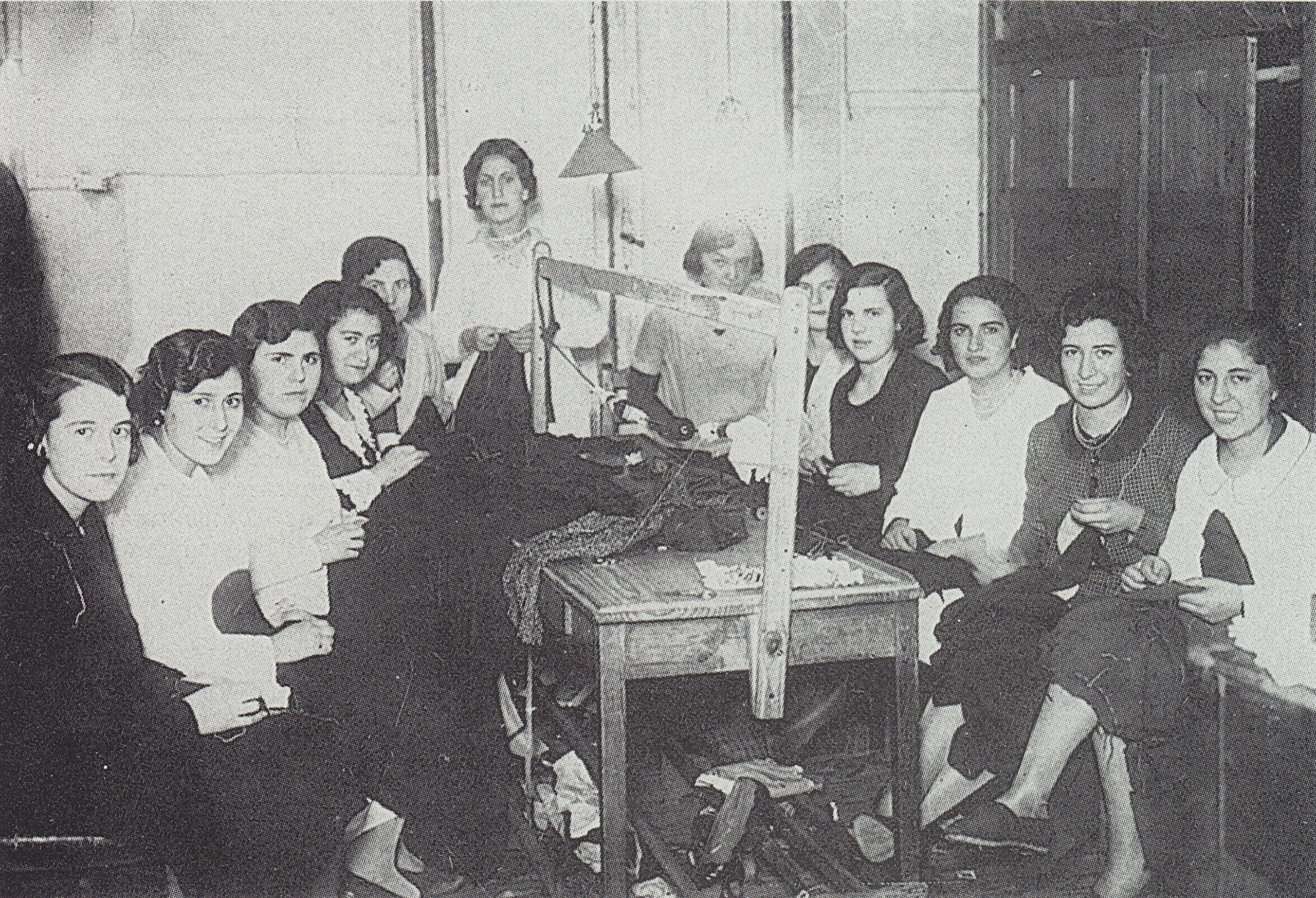
In 2014, the Cristóbal Balenciaga Museum began a line of research called “The hands that sew” with the aim of identifying and highlighting the contribution of those who worked for Balenciaga over the years, and to better understand the socio-economic context in which he developed his work alongside its impact. Other objectives pursued by this line of work are to preserve the techniques of the trade used in his workshops and, at the same time, to reveal information about Balenciaga’s personality from the perspective of his collaborators. An important element of this research has been the collection of testimonies from people linked to the House, mostly women, both direct – that is to say, provided by the women themselves – and indirect – by their relatives. The testimonies are often accompanied by photographs and additional documentation that help to map the working reality of a company that employed more than 2,000 people over the course of its history.
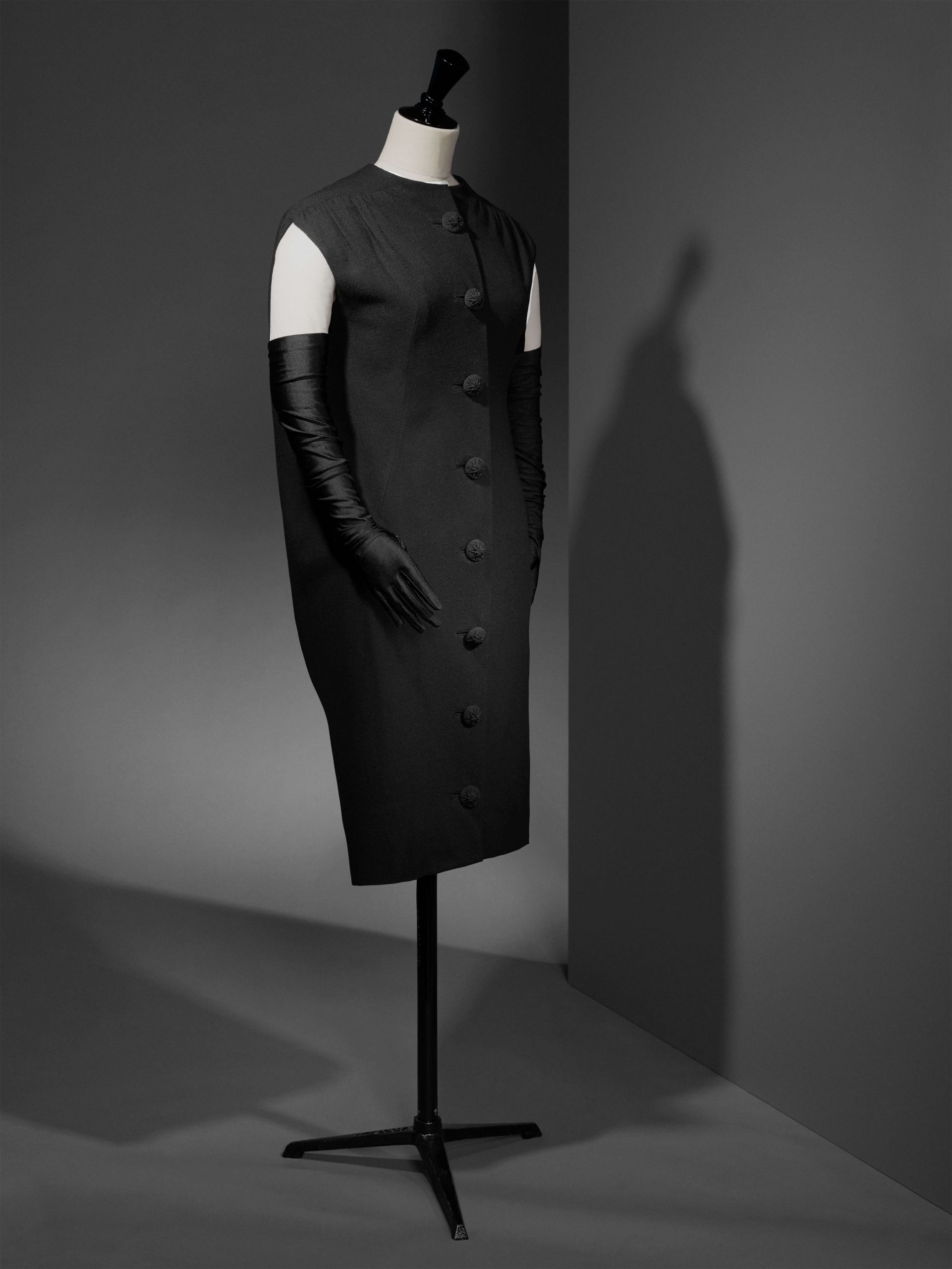
Dress in black wool crepe, 1957
The testimonies, documents and items of clothing come largely from female employees of the houses in Spain and France. This is the case for the sack dresses in the Museum’s collection. These dresses belonging to Angélica Castresa and Felisa Irigoyen, model-saleswoman and head of the atelier respectively, are a clear testimony to the technical mastery and philosophy shared by those who contributed to Cristóbal Balenciaga’s creative legacy.
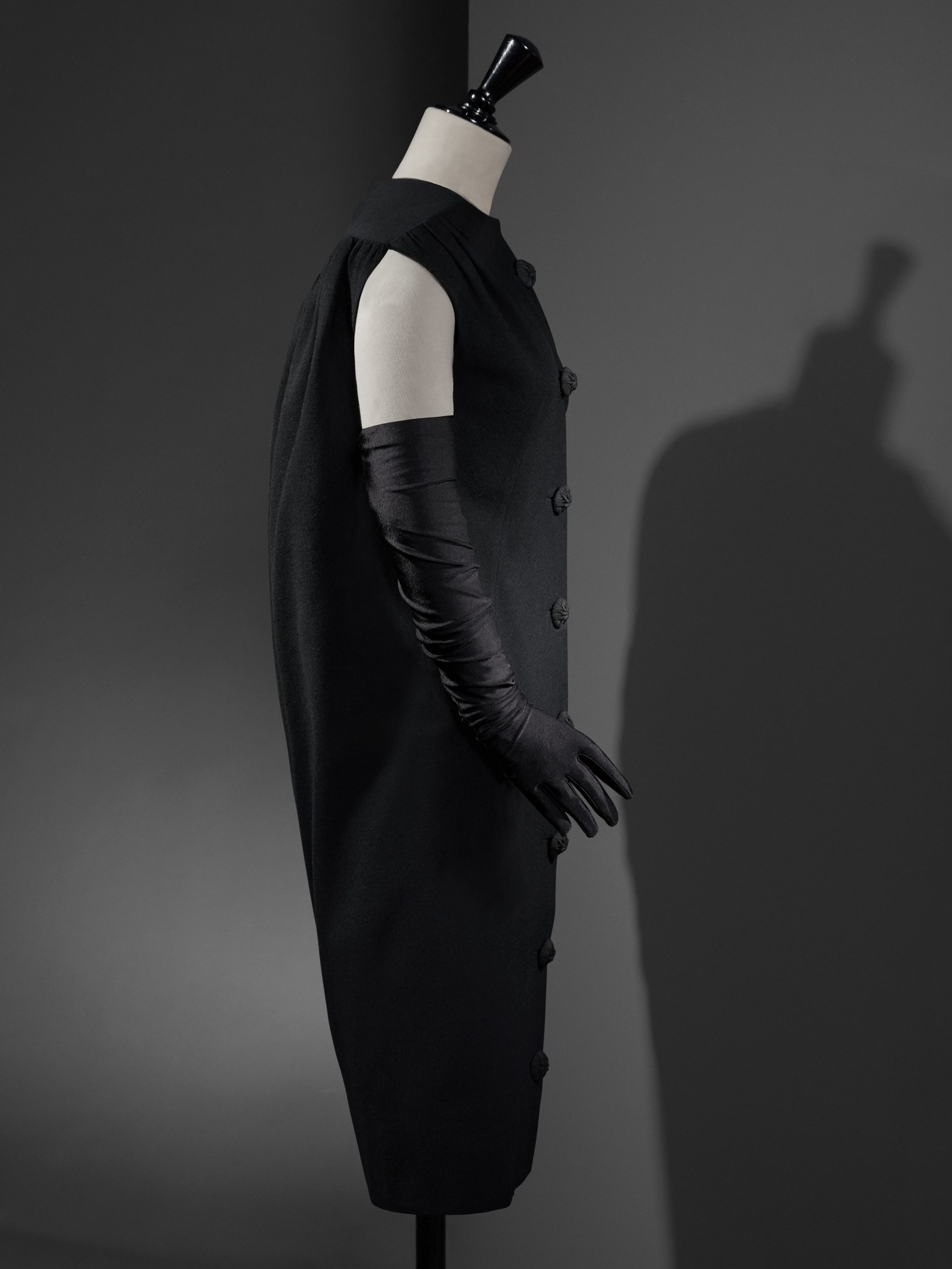
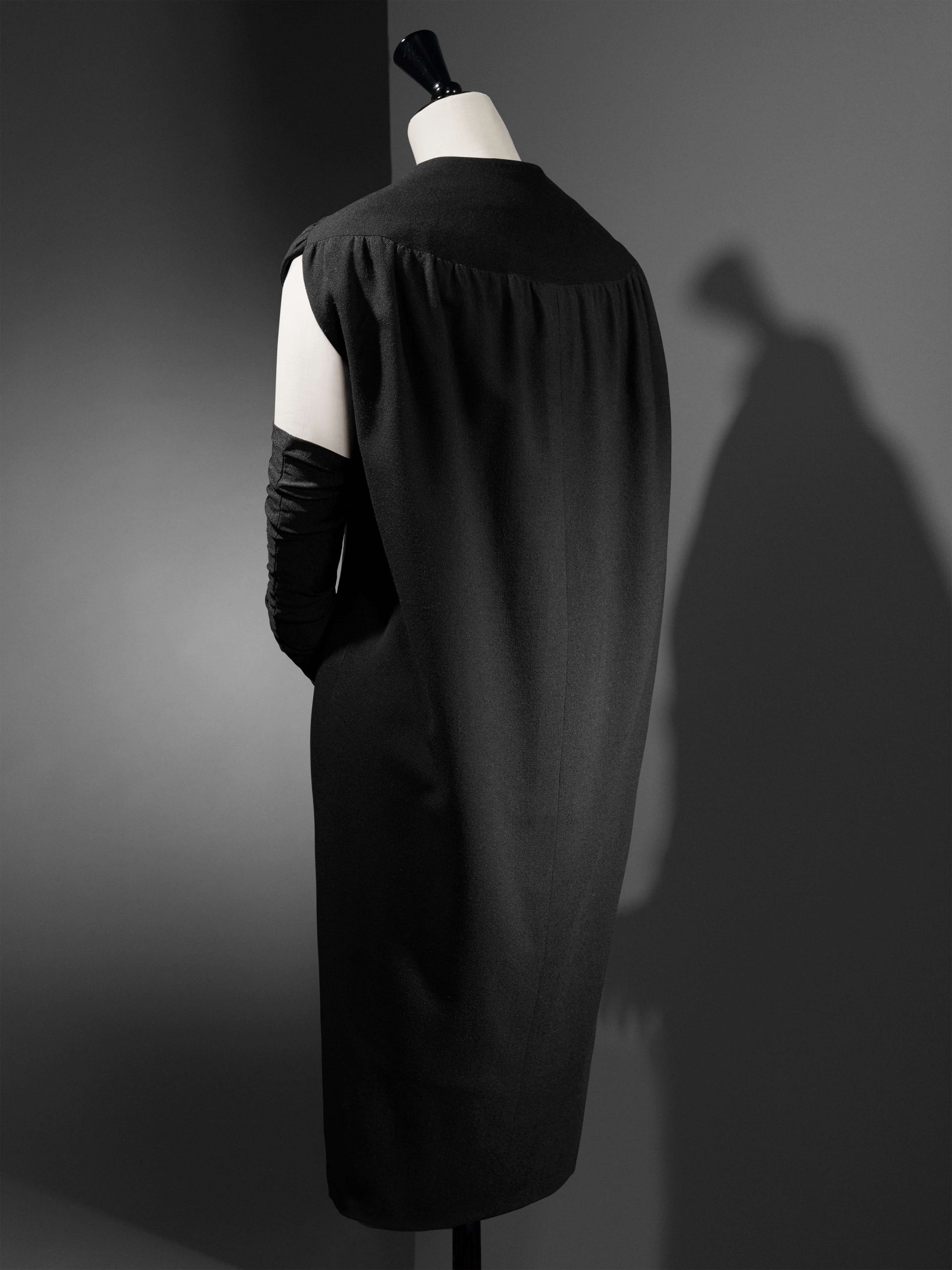
The below-the-knee dress with a trapezoidal structure and box collar is completely sleeveless and open at the front from shoulder to hem. It has a capelin and it’s tapered at the waist, from hip to chest and from hip to the centre of the armhole. The large buttons are lined with cotton fabric. The cape is semicircular and flows from the back of the dress to the front where it meets the raised front panels. It has a seam at the centre of the back. The armhole is straight at the back and curved at the front. There are two lateral pleats on each side, one straight, the other diagonal, and it is fastened with eight 3.3 cm-diameter buttons in a hemispherical shape made of fine trimmings.
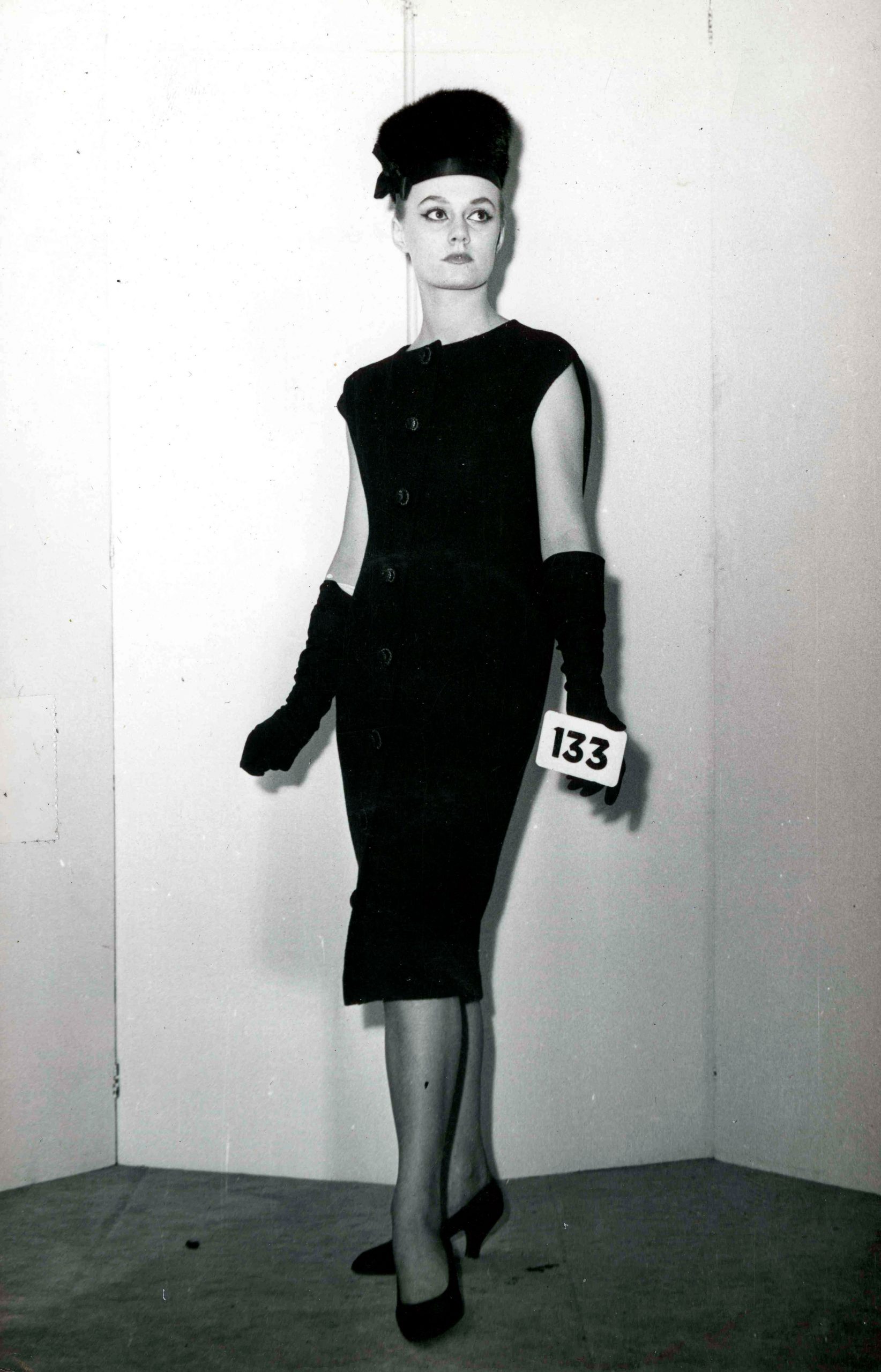
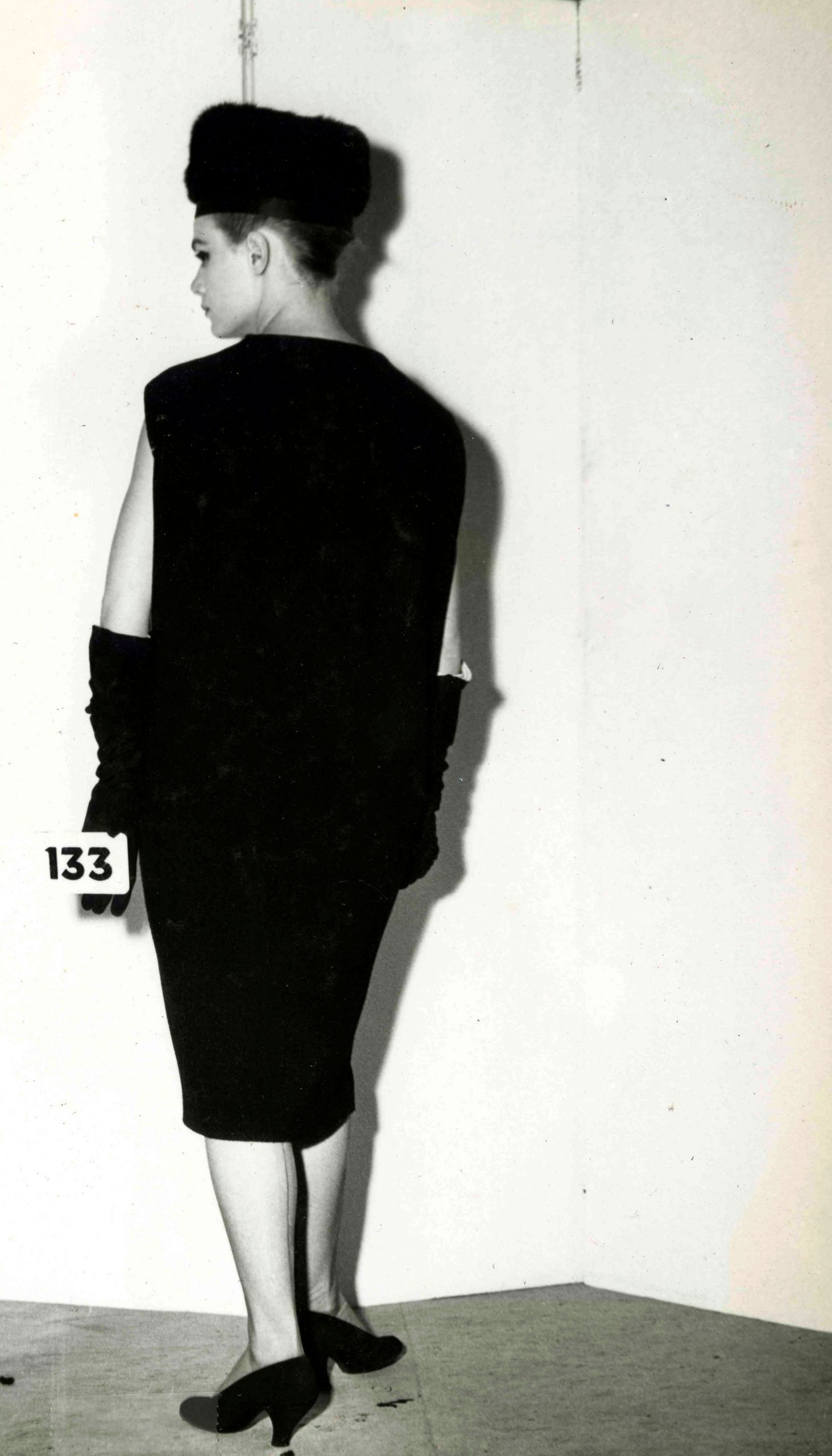
“Never has a new fashion been so widely copied, discussed, admired and criticized as the sack”
THE OBSERVER. November 1957
Woman walking through the streets of Paris in a sack dress
This model, known as a “sack dress”, shows the original idea that Cristóbal Balenciaga worked on in the 1950s. Loose and comfortable dresses that contrast to the tight-fitting trends common in those years. The “barril” line, named by the master, was created in 1947. From then on, he gradually developed the loose backs of his garments which led him to create the tunic-dress in 1955, and in 1957 the sack-dress. With them, he left the waistline behind and reinterpreted the female form by creating a series of silhouettes that were completely new in the history of fashion. Women’s comfort and freedom of movement in relation to the context of the time represented a revolutionary change and generated considerable controversy. There were those who instantly admired it and those who radically reviled it; its adoption by female customers was gradual, especially after its first introduction.
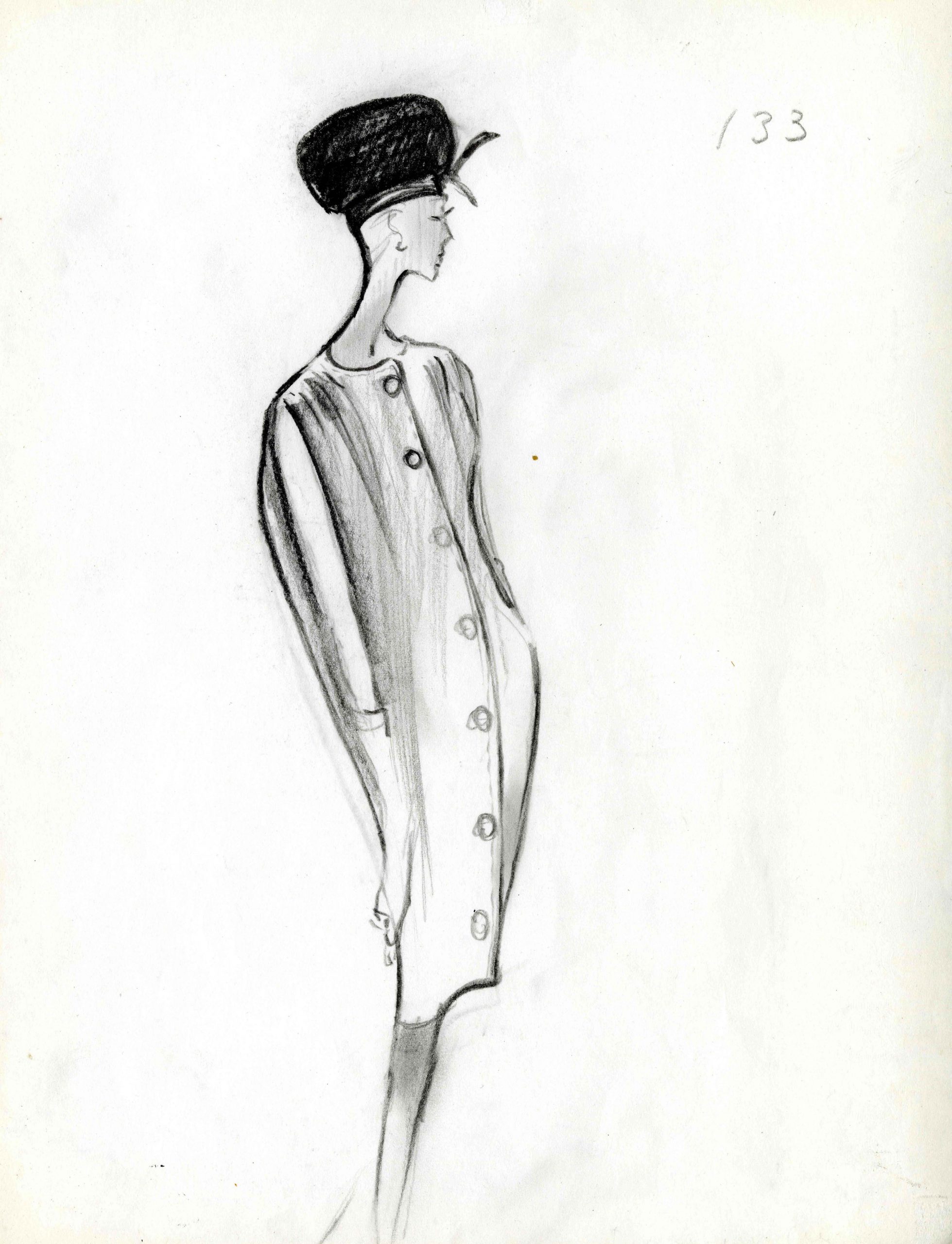
Interestingly, the coat-dresses in the Museum’s collection, which come from various customers, are mostly post-1957. However, the two pieces from the year of their debut that the Museum has in its collection- true milestones in the history of fashion – belonged to two employees of the House. Was it a coincidence, a commercial strategy of the house, or perhaps the personal taste of these professionals, who perhaps had a more informed appreciation of the innovation that this line entailed?

BM Supermercados is a food distributor with 232 supermarkets, mainly located in the Basque Country, Navarre and Cantabria. Quality produce, variety and service are the core values of the company. Since its beginnings, BM has been committed to local suppliers, maintaining long-lasting relationships with them for over 30 years. It offers conscientious service and variety, a business model it has never abandoned. Even through the ups and downs of the economy or the sector itself, this outlook of theirs remains unchanged.
2016 —
CREATIVITY
“Fashion is a tiger’s leap into the past”, said Walter Benjamin. For Cristóbal Balenciaga, popular clothing in its forms and craftsmanship, the fashion of Vionnet or Lanvin in its technique and silhouettes, and the aesthetic developments of art history were all decisive influences. In parallel, his mastery of technique and sewing, research and learning, formal exploration and a constant search for perfection allowed him to design clothing of great formal and aesthetic boldness that impacted the world and became unchallengeable trends.
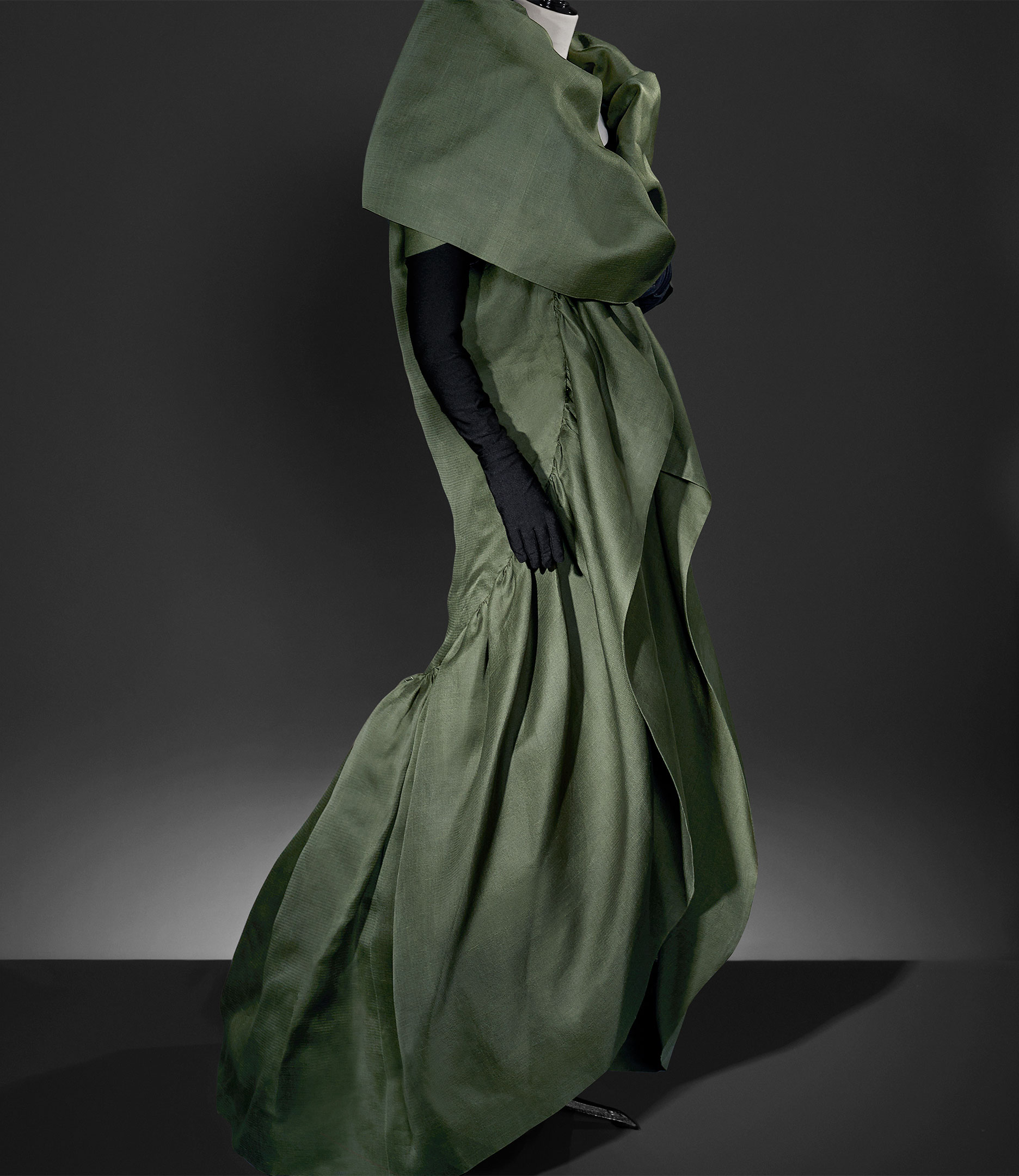
From heritage to new creation
The Transmissions program, promoted by the Cristóbal Balenciaga Museum since 2016, organises a research project that connects Cristóbal Balenciaga’s legacy with young fashion experts. To this end, it brings together teachers and students from prestigious international schools of Fashion Design to Getaria every year and immerses them in the philosophy, technique, and biographical context of the master of haute couture.
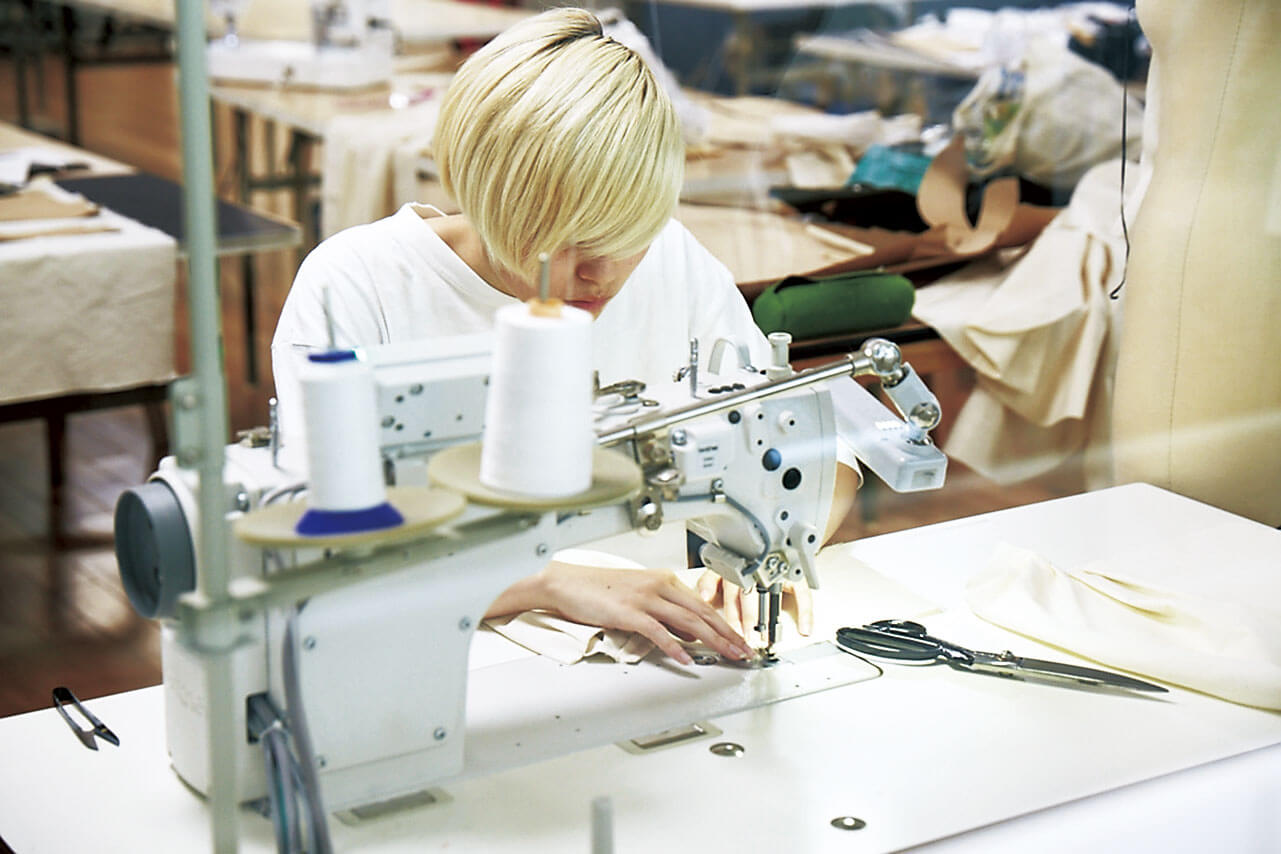
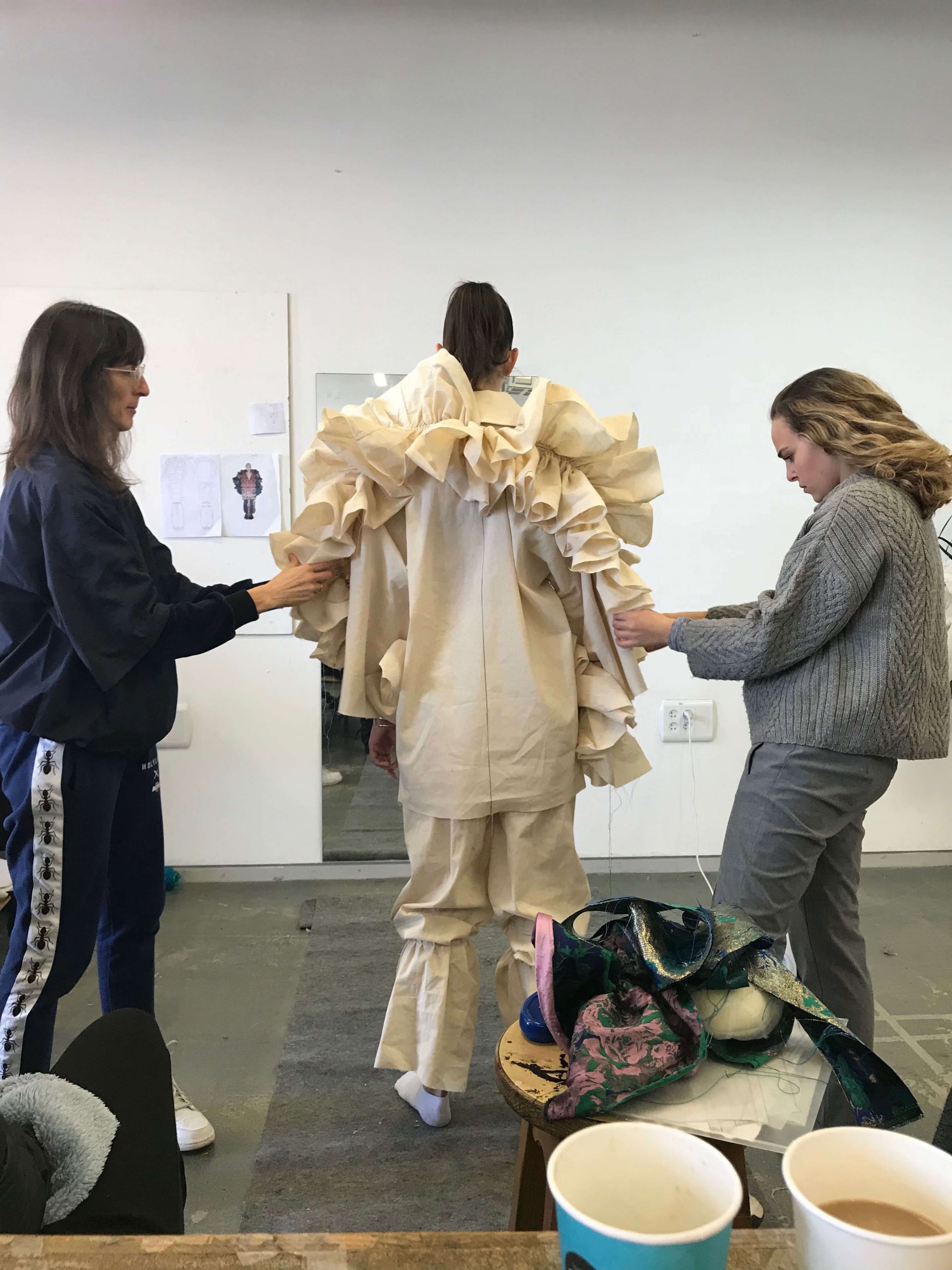
This project, integrated in the curriculum of the participating entities, is based on the idea of opening the archive and analysing a selection of pieces around a theme: “the revolution of the silhouette”. All that has been learnt is then translated into a creative project by each pupil, culminating in the creation of a complete look. The process itself is documented step by step, and the results are shown in exhibition format at the Museum.
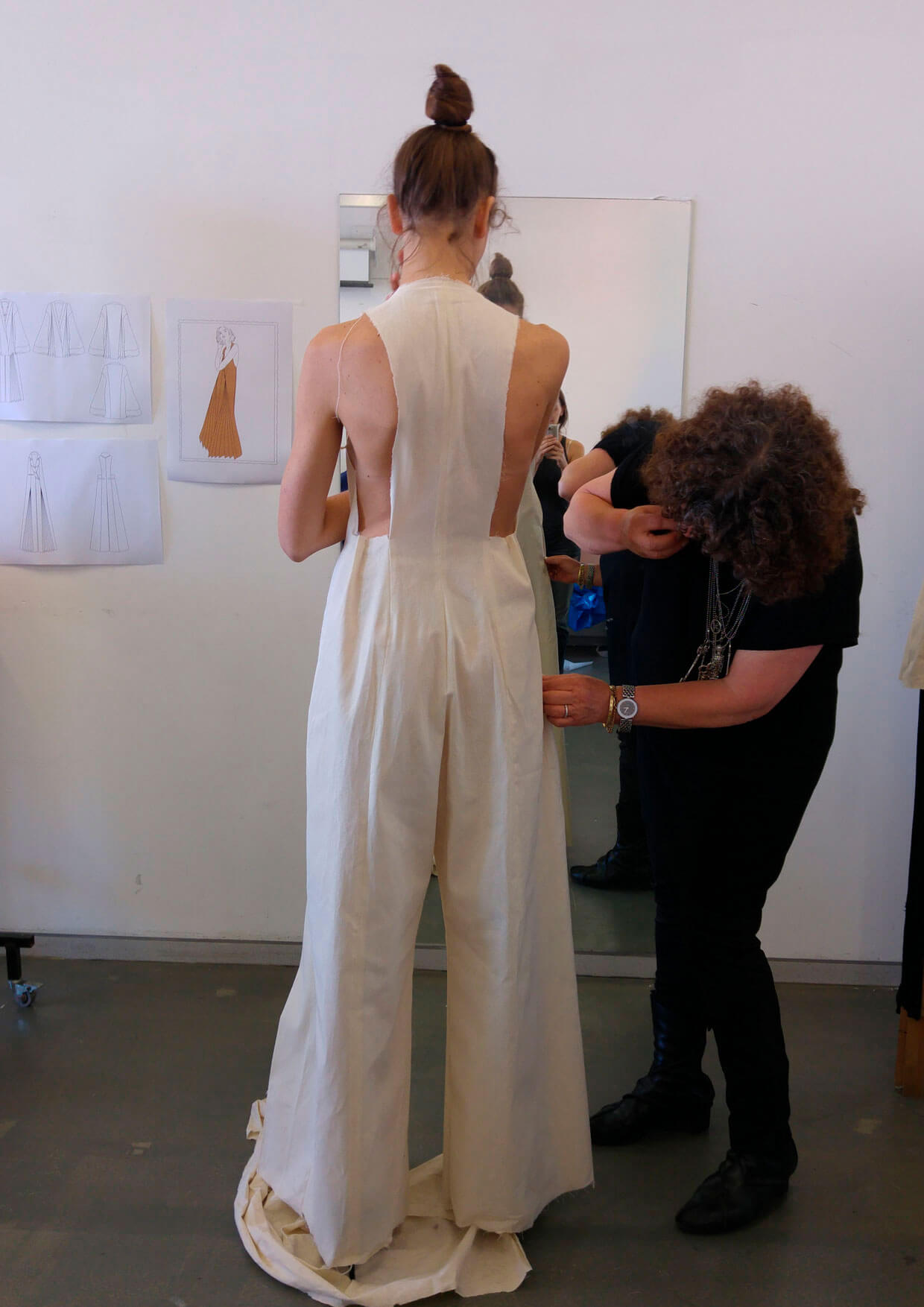
For the Museum, Transmissions is the most important way of connecting the Museum’s heritage with the present day and ensuring that Cristóbal Balenciaga’s legacy continues to live on, being interpreted, experienced, and lived by a new generation of fashion creators.
Transmissions educational project, 2017
Evening coat in green gazar, 1962
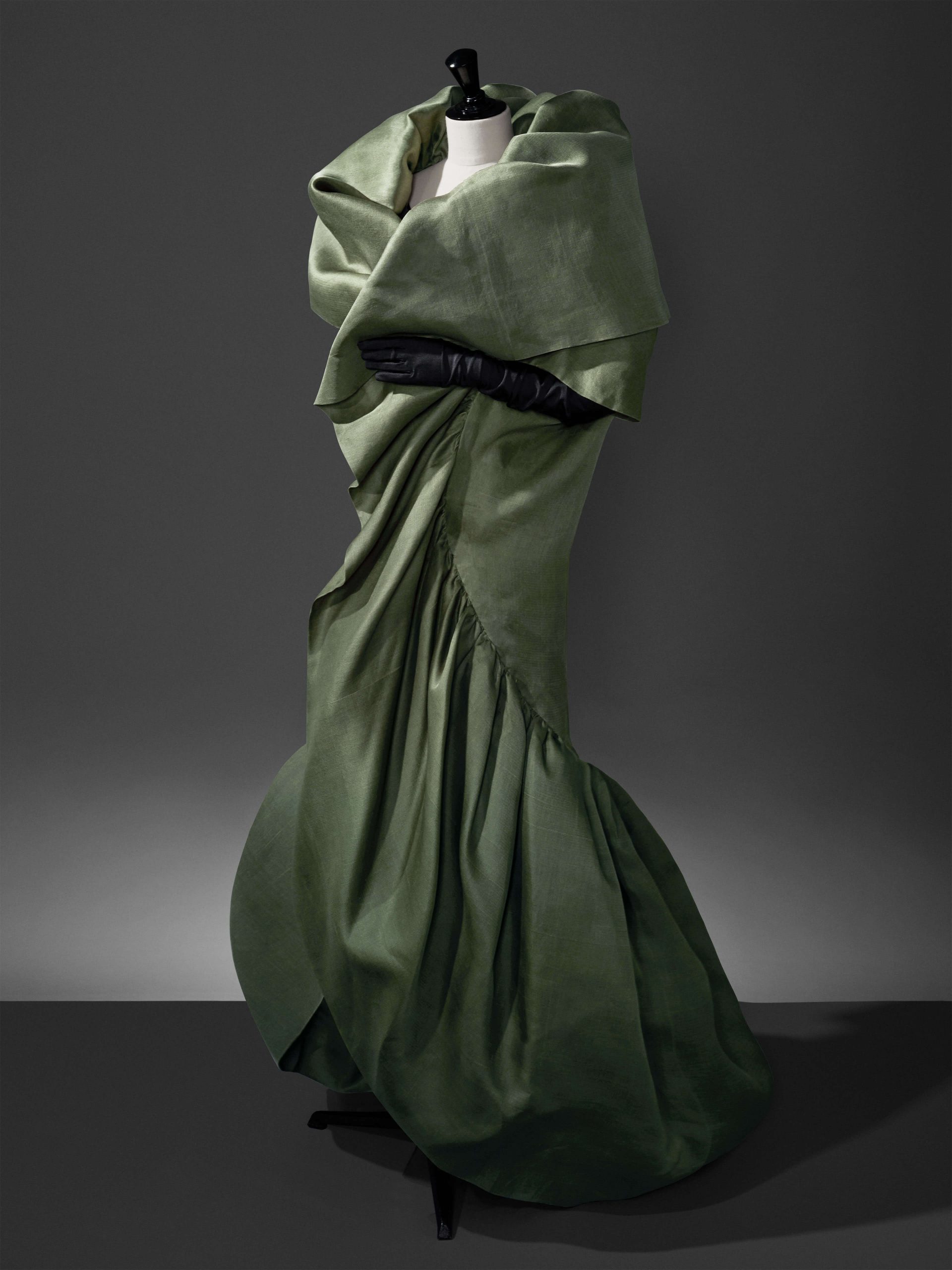
Construction of the evening coat in green gazar
One of the pieces studied in the programme is this coat in green gazar with an oversized, overarching ruffle. One can easily appreciate the precision of the cut and the knowledge of the fabric necessary to create such an enveloping and elegant silhouette. In the 1960s Balenciaga’s silhouettes incorporated a greater degree of abstraction. The conceptual and technical minimalism inherent in his career is evident in the structured drapery made with rigid fabrics, such as gazar, zagar and cyberline, that create abstract silhouettes and geometric volumes based on circles and squares.
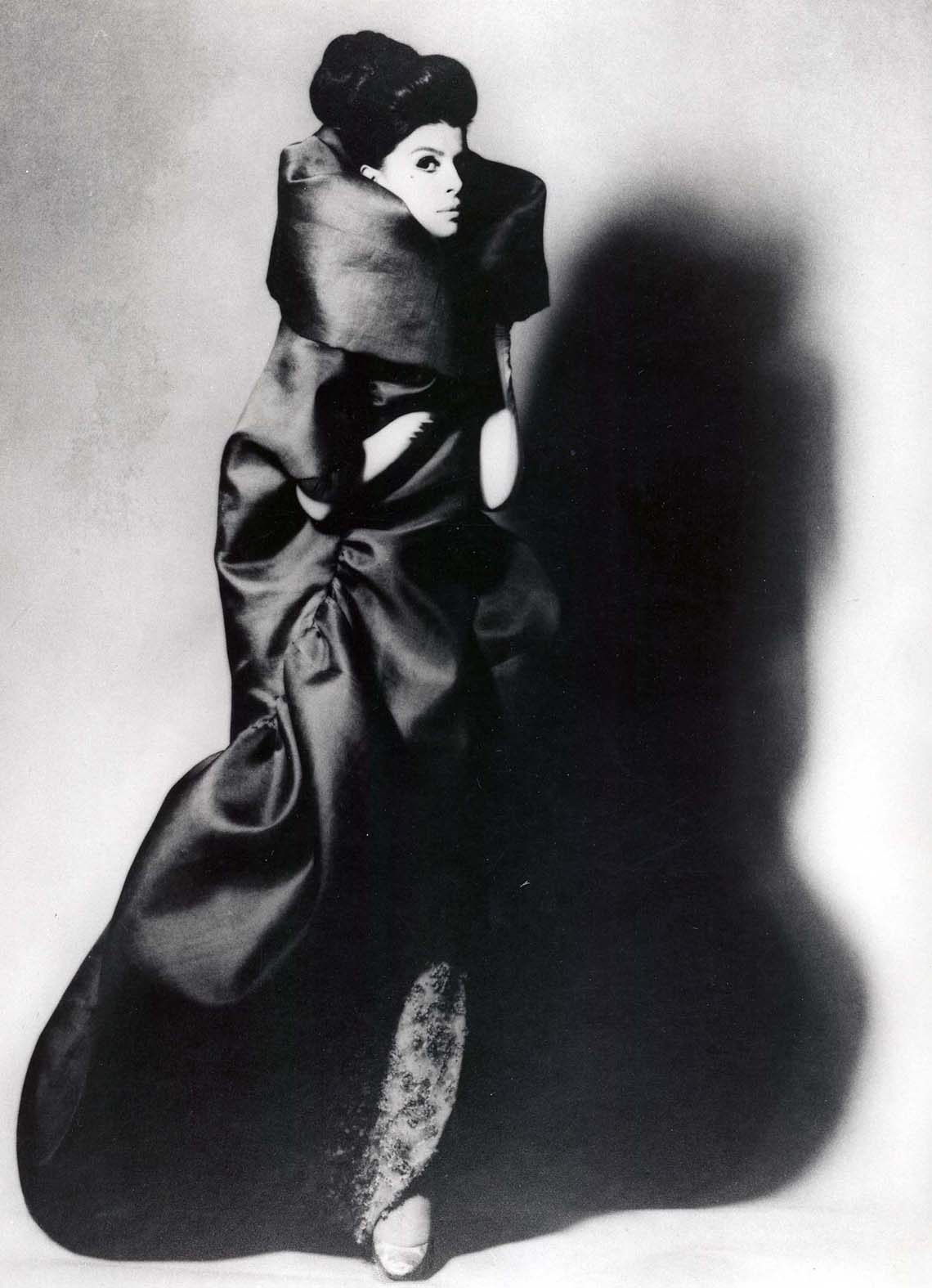

Loreak Mendian means “flowers in the mountains”. The clothing brand is faithful to its roots and has a long history of commitment to timeless and long-lasting pieces, nourishing its creative spirit through the culture and artistic expressions of its surroundings. The collaboration with the museum is part of this type of exchange, punctuated by the creation of an environmentally friendly garment designed for this anniversary.
2017 —
DIVERSITY
The haute couture experience is based on the idea of luxury as a restricted, personalised, valuable concept: a status symbol. If a Balenciaga dress, by definition, was once synonymous with exclusivity, its transformation into a museum object is the opposite. Balenciaga’s work is now to be seen and enjoyed by all citizens and it is the Museum’s responsibility to guarantee inclusive access to a diverse audience in today’s society.
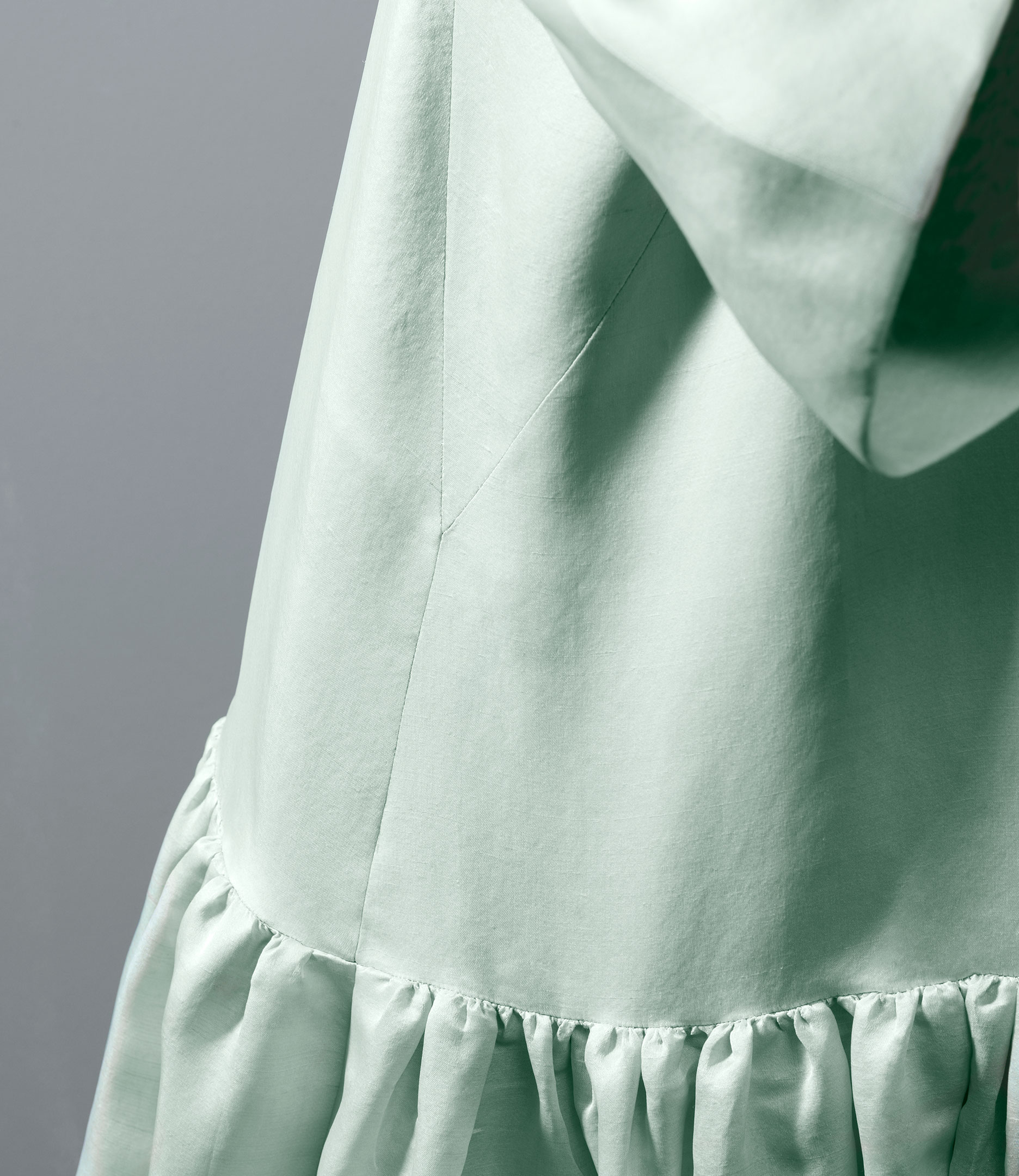
Towards an accessible museum
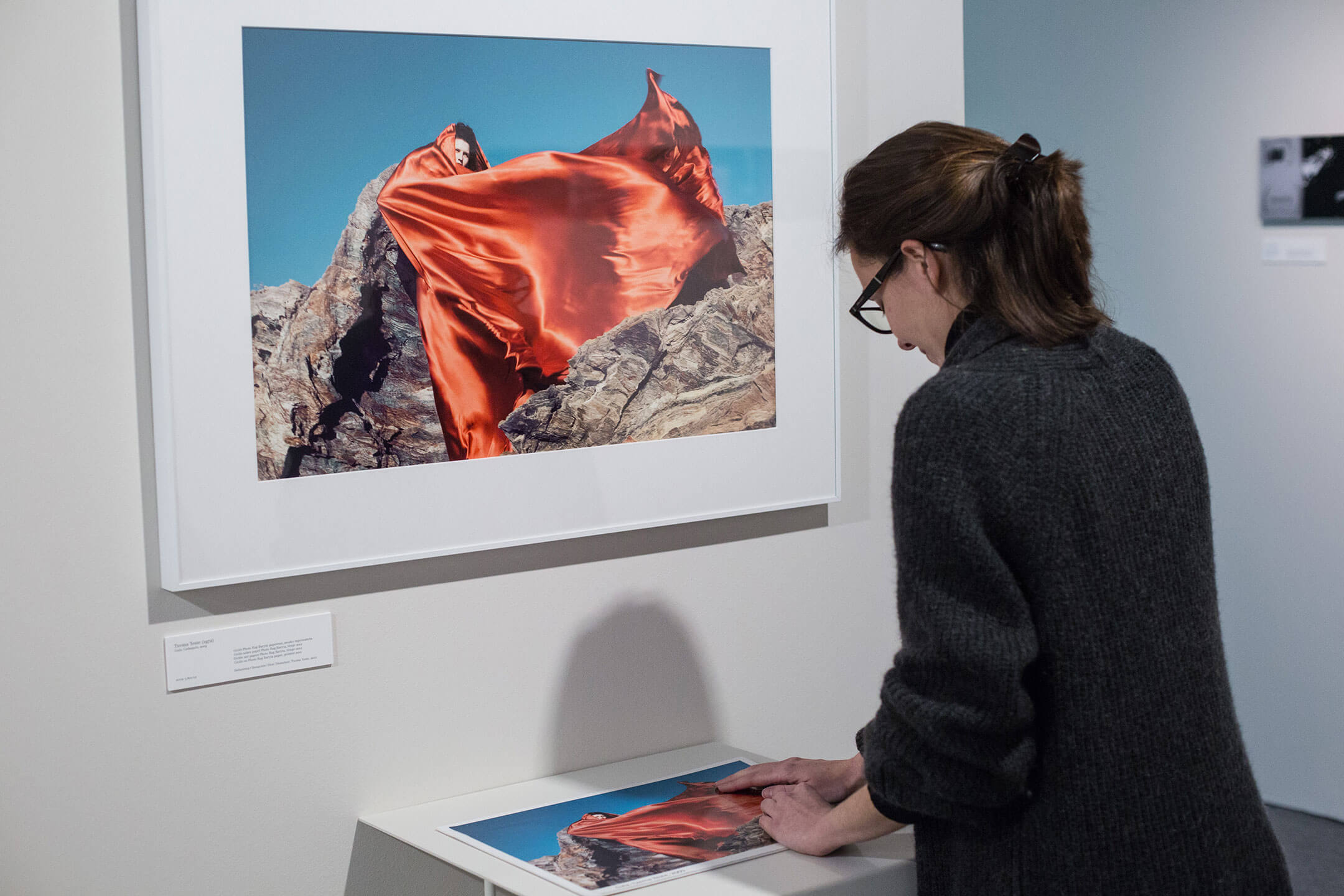
In 2016 the Museum began a program intending to systematically adapt its services to the diverse natures and needs of heterogeneous social groups. To this end a visitor program was introduced to facilitate access, use and enjoyment of all the knowledge housed in the Museum, ensuring to include those with diverse needs. With this in mind, the Museum proposes different kinds of virtual and physical visits in order to meet the needs and ease access to the Museum and its contents to the greatest number of people possible.
Wearable reproductions at the Museum
One of those is the tactile Balenciaga program. The dim lighting necessary for the conservation and exhibition of the Museum’s contents can make it difficult to appreciate the clothes, especially for those with visual impairments. This guided tour incorporates a tactile approach through the use of fabric samples and replicas of the exhibited pieces in order to help understand the techniques used and the formal innovations of the designer. Additionally, the collection offers wearable reproductions of Balenciaga’s creations that allow visitors to immerse themselves in the experience that the Maison Balenciaga offered its customers in a playful way.

Cocktail coat in pastel green silk shantung, 1958
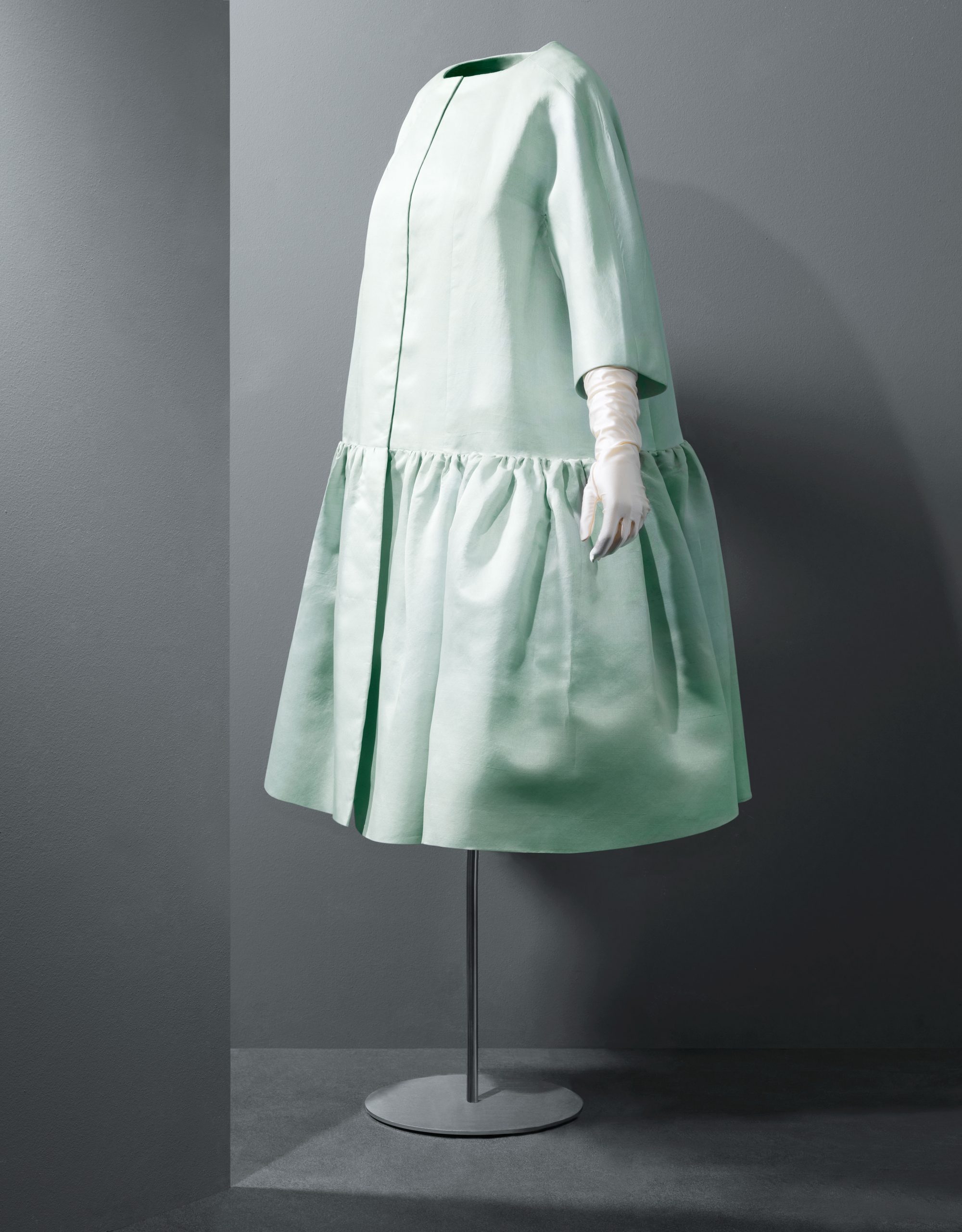
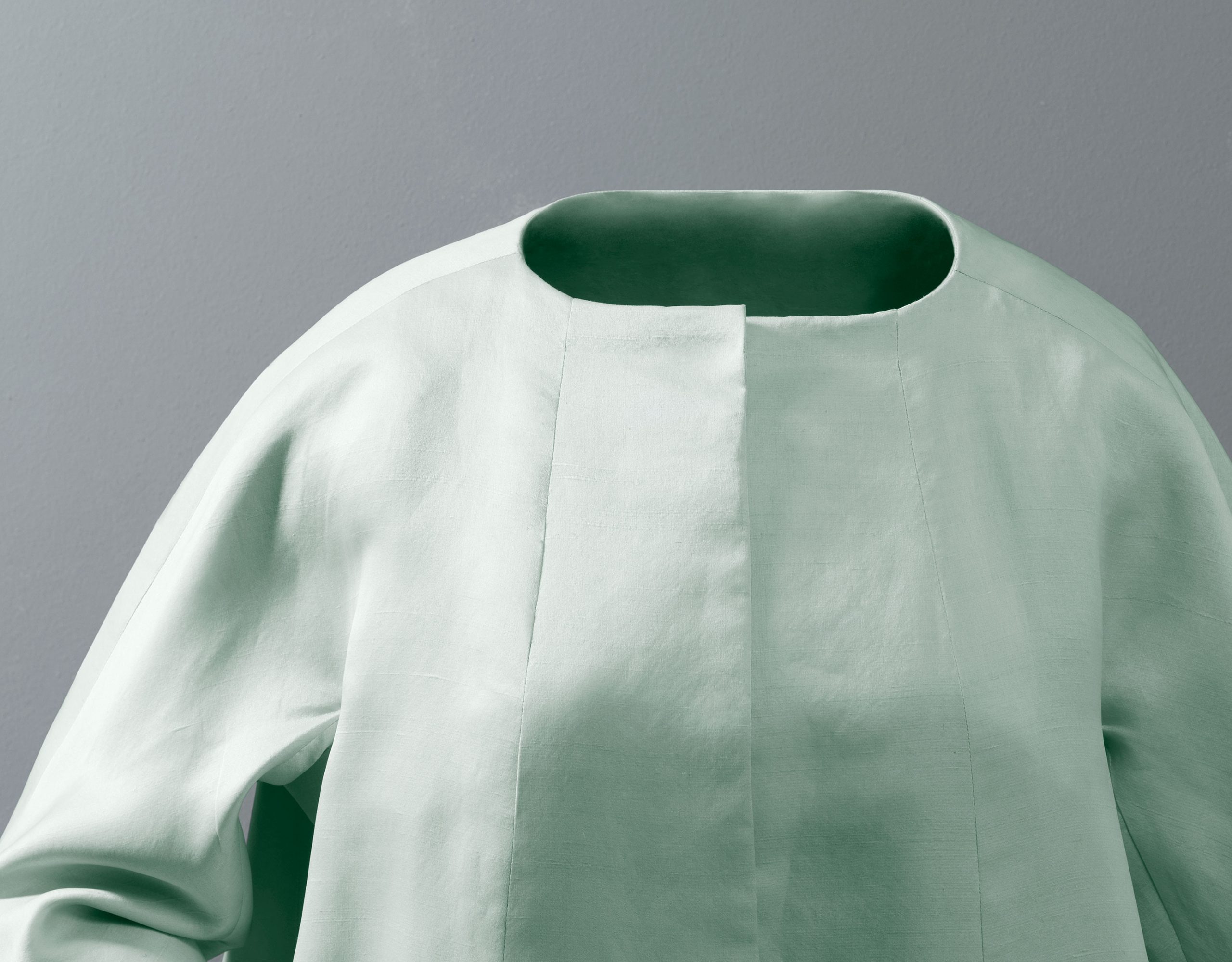
Wide coat with a round neckline and kimono sleeves. The bodice extends to the hip line where the lower part of the coat becomes a skirt that is softly ruched and pleated at the seam. It is lined in blue silk taffeta. This coat has the structure of the baby doll dress presented that same year. Its innovative trapezoidal silhouette contrasted with the traditional hourglass silhouette consisting of a cinched waist and accentuated hips. This model forged a revolutionary divorce between body and dress. A third element began to take on importance: air. A key element to create an abstract, comfortable and elegant silhouette.
Construction of the baby-doll dress
“Cristóbal Balenciaga brought about a revolutionary divorce between the body and the dress with the introduction of a third element: air”
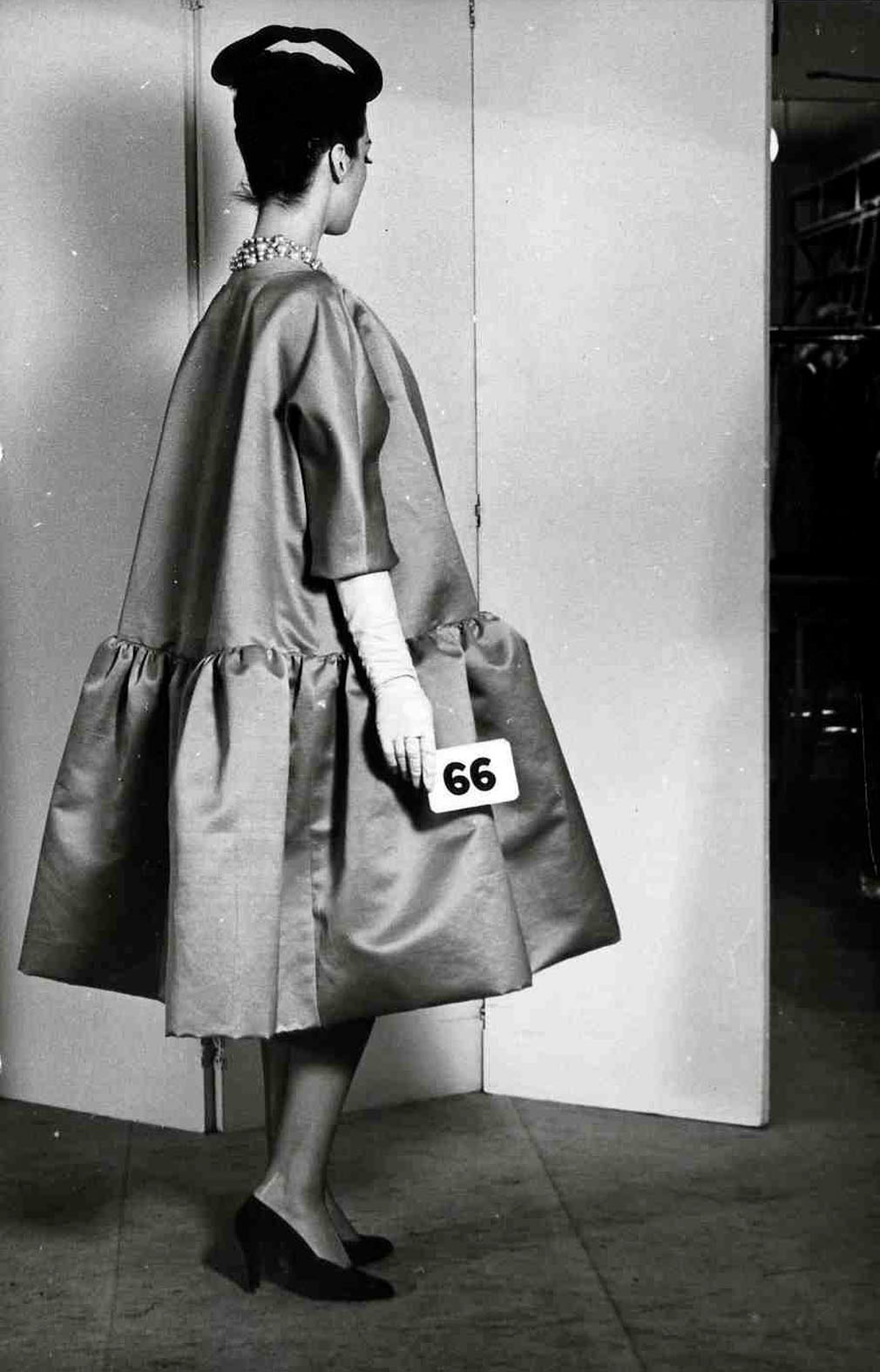
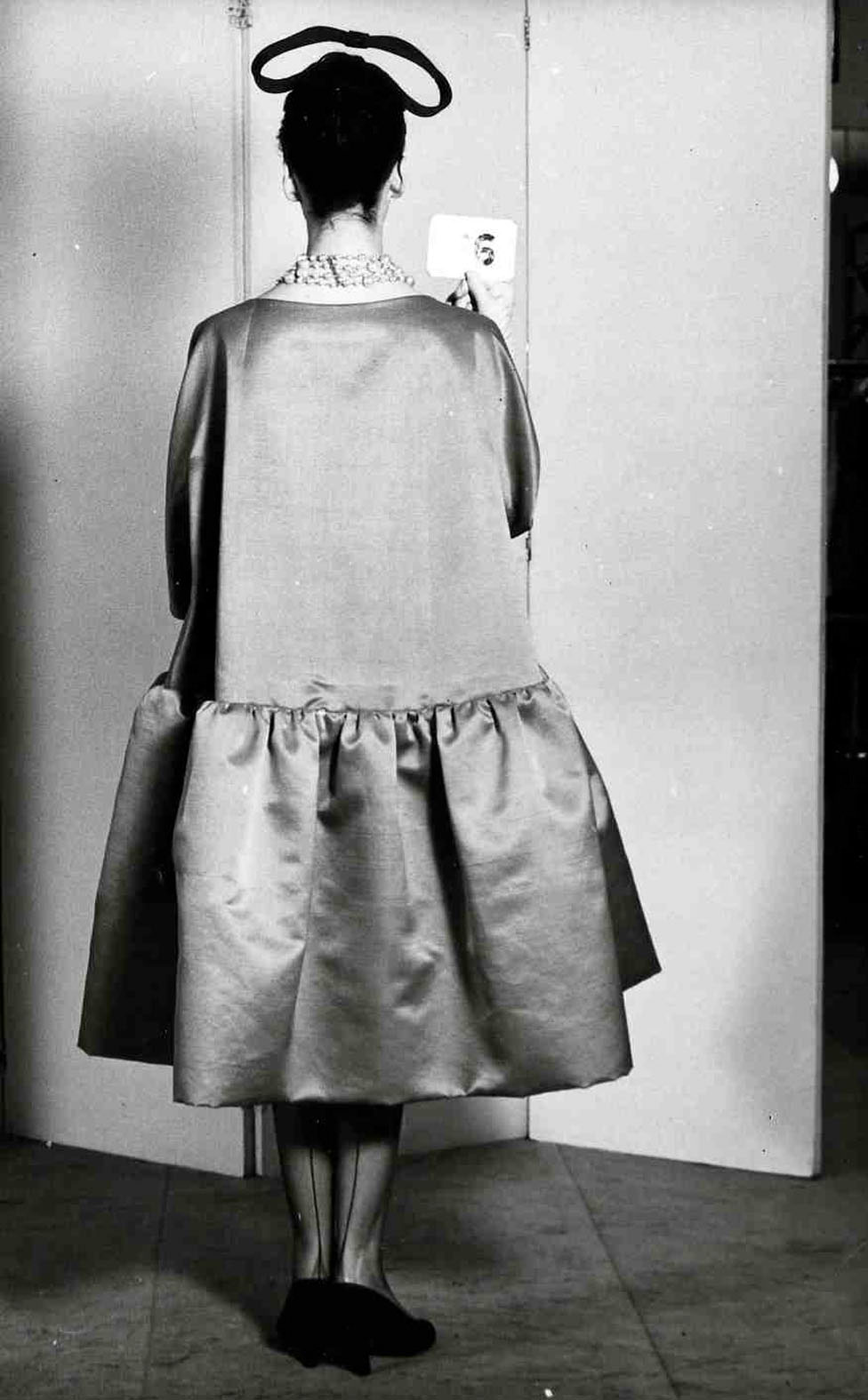

Cristóbal Balenciaga and Kutxa Fundazioa share common ambitions. Together, they have developed projects revolving around fashion, from raising awareness on Fashion’s cultural value to the support it has provided to the young talent of Gipuzkoa (Kutxa Kultur Moda), and promoted social values among the Museum’s audiences such as accessibility, diversity and equality.
2017 —
TRADITION
Balenciaga’s creations stood out from the start; their simplicity, impeccable cuts, bold colour combinations and the Basque and Spanish inspiration of his pieces which were as surprising as they were exotic for the expert Parisian public. His collections presented in part the elements, influences and resources of his origins that would characterise his work until the end of his career.
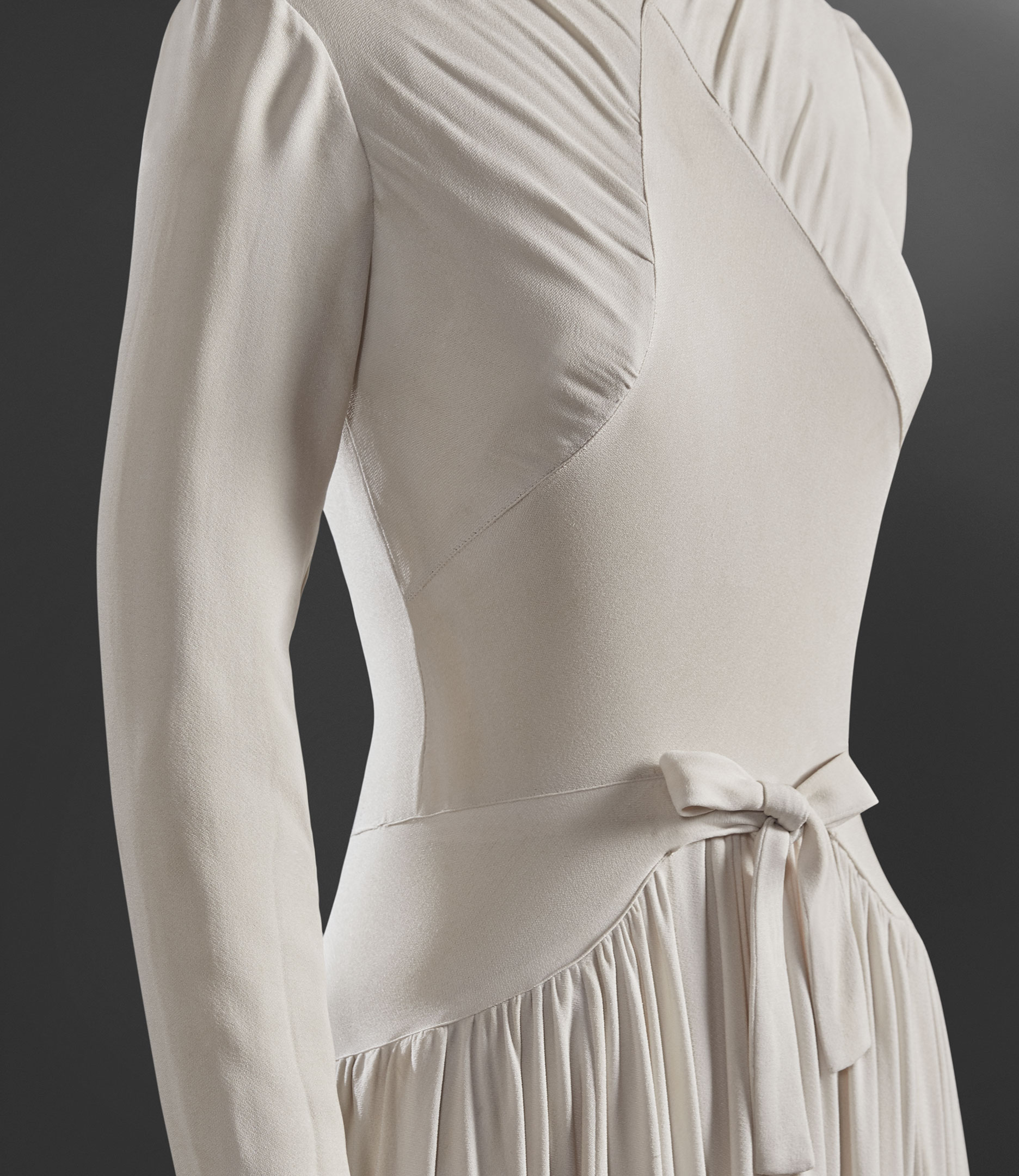
One hundred years of entrepreneurial and creative endeavours that began in San Sebastian
In 2017 the Museum celebrated the centenary of the inauguration of Cristóbal Balenciaga’s first business in San Sebastian. This important event marks the origins of the man who would go on to become the most universal fashion designer. Moreover, it is an event that is inextricably linked to the existence of the Museum in Getaria. This business adventure begins in the flourishing context of San Sebastian (around thirty kilometres from his native Getaria) at the beginning of the century. It was a particularly intense time for those in the service industry due to the seasonal visits of the court and the tourism boom of the Basque Coast that took place on both sides of the border, with San Sebastian and Biarritz at the centre. At the age of twenty-two Cristóbal Balenciaga started his first business. Little is known about his previous experience and training. Nevertheless it is logical, as he had lived in the city since 1907 (according to the municipal register), to suppose that he trained in one of the important houses that existed in the city; probably Casa Gómez, New England or Almacenes Au Louvre as all of them were closely connected to Parisian fashion of the time.
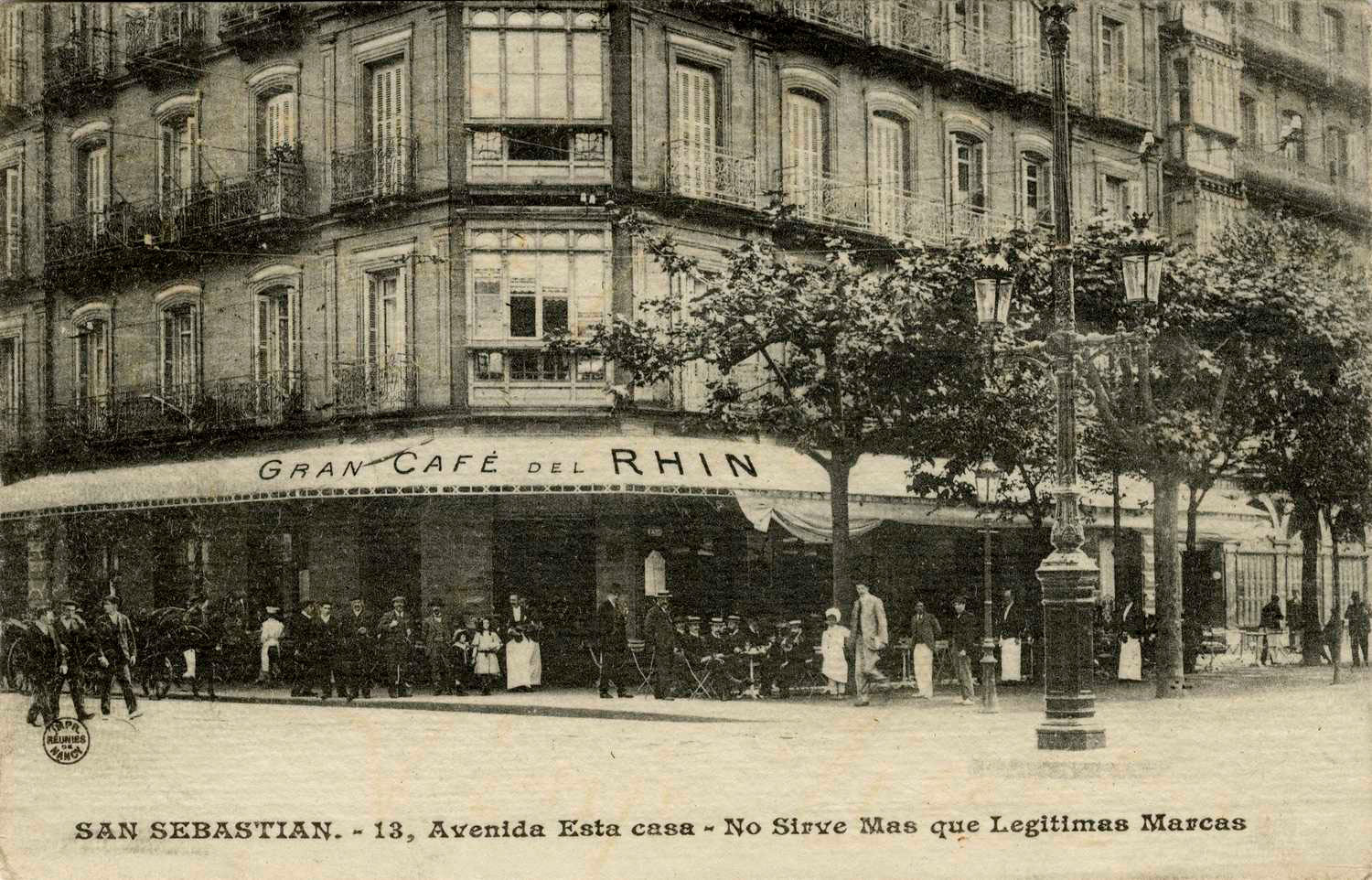
Several advertisements were recorded in the press that year looking to hire staff. His name is also logged in the official business register as C. Balenciaga at 2 calle Vergara, couturier, and the highest corresponding tax rate. A year later he modified this registration to bring in new partners – the Lizaso sisters – and with them founded a company that lasted six years, Balenciaga y Cía, based at the same address. In 1924 this partnership dissolved, and Cristóbal Balenciaga moved his business address to 2 Avenida de la Libertad. In March 1927 he created a second brand as part of a diversification strategy: Martina Robes Et Manteaux, on the 1st floor at 10 Oquendo Street (Martina was his mother’s name). In October of the same year he came up with a new name: EISA Costura (again related to her mother, whose surname was Eizaguirre).
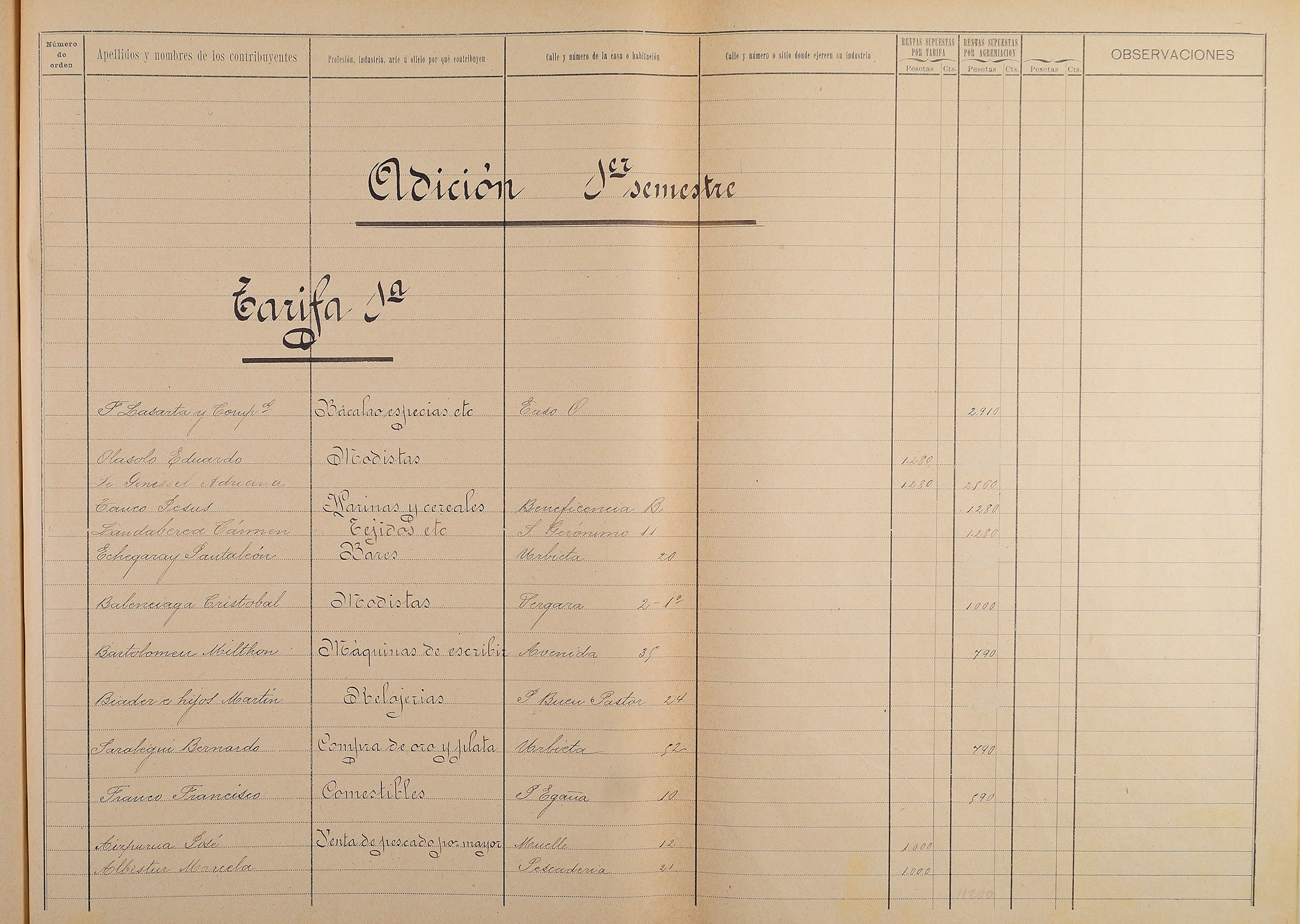
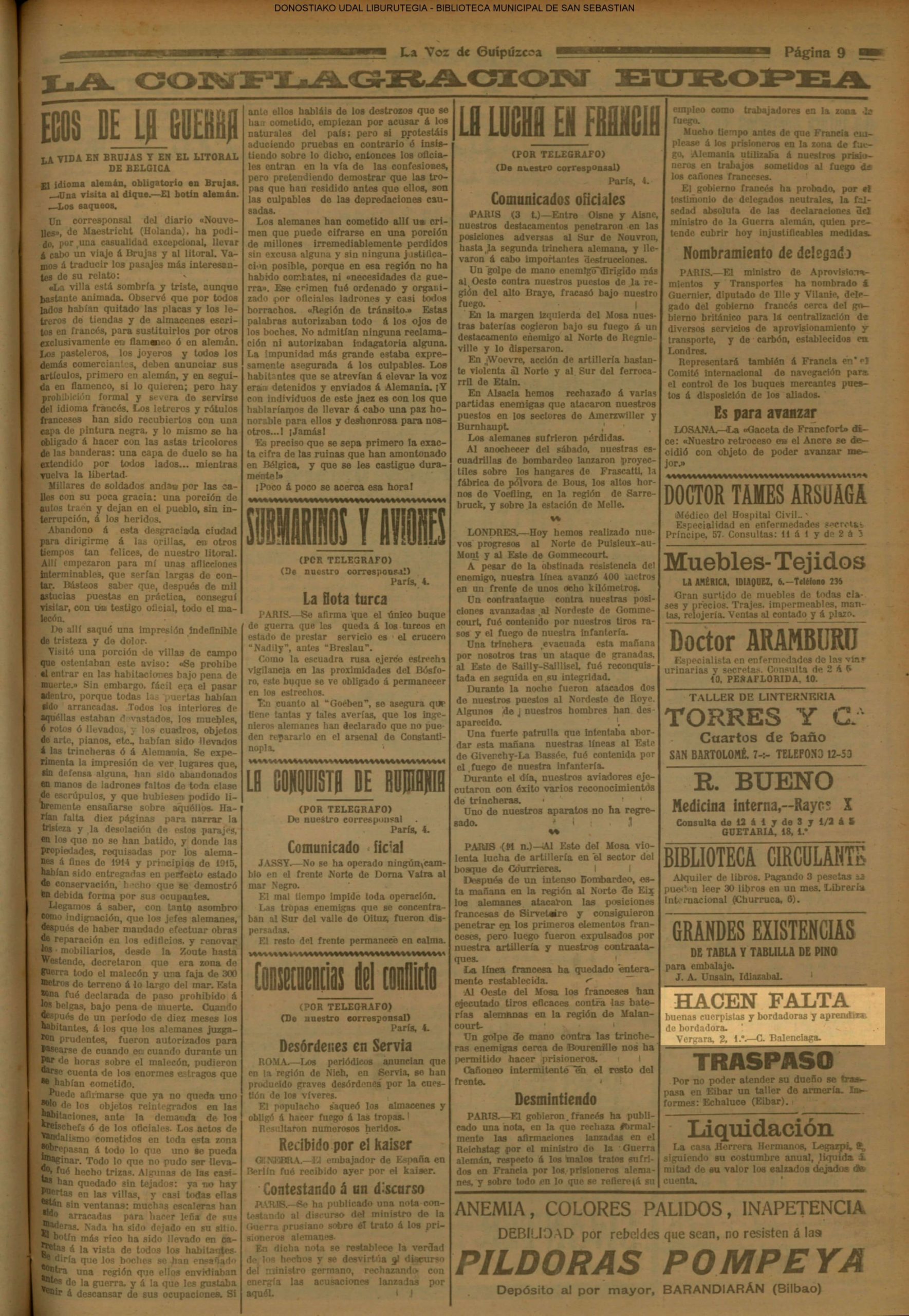
The purpose of this second house and brand, which coexisted alongside the first, was to optimise shared resources and expand its customer base among the local bourgeoisie. The first company, Cristóbal Balenciaga, remained open uninterruptedly until it moved to Paris in 1937. The second, EISA Costura, diversified geographically and set up branches in Madrid (1933) and Barcelona (1935) under the name of EISA BE. All the while the address in San Sebastian remained unchanged: 2 Avenida de la Libertad. Undoubtedly, these first working years in Spain were fundamental in helping him perfect his technique, absorb artistic and aesthetic influences and consolidate his business acumen. These key aspects went on to mould his career, development and emergence that took place, in the only place it could, the undisputed capital of fashion: Paris.

Ivory-coloured silk crepe wedding dress, 1939
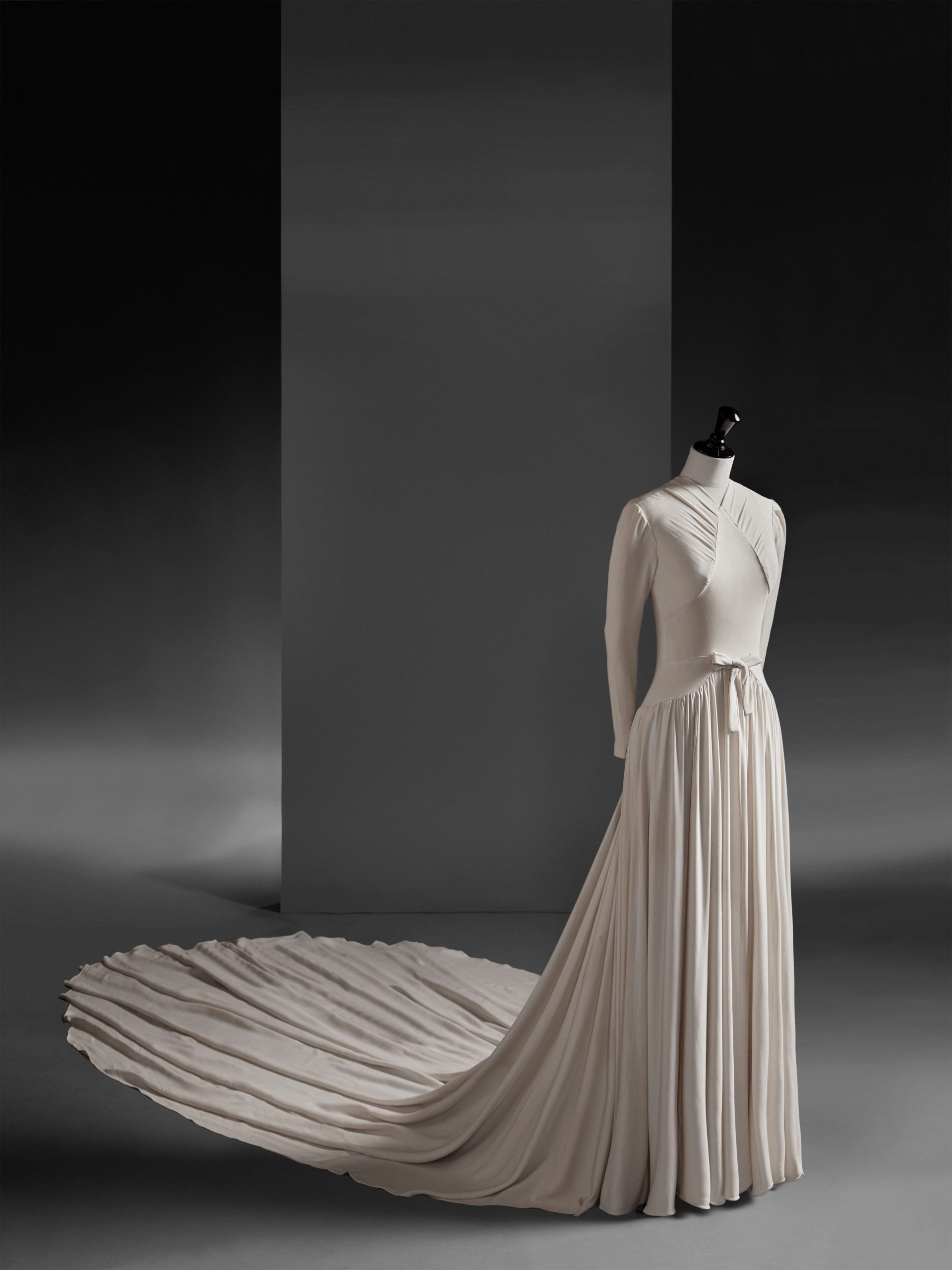
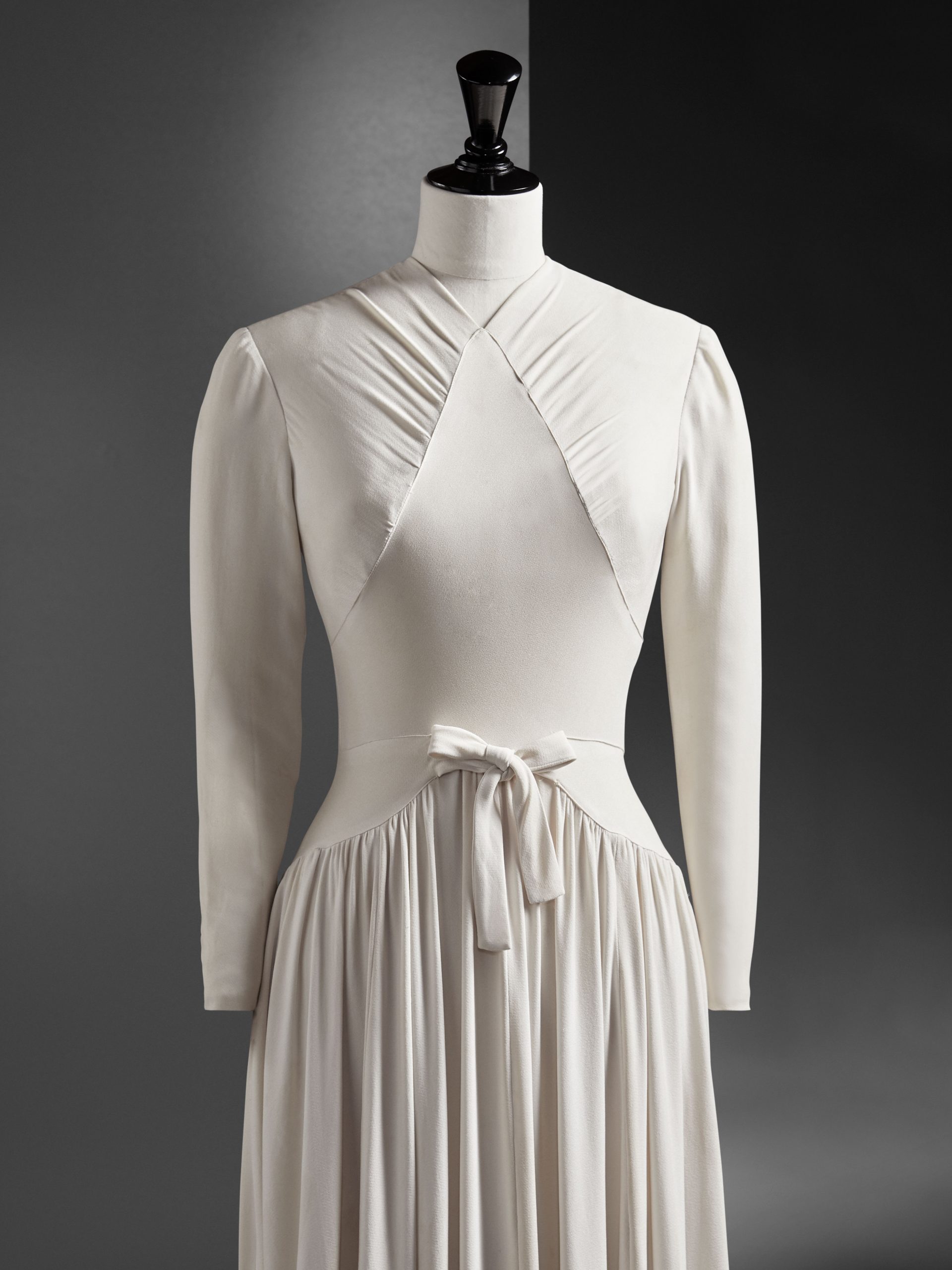
Ivory silk crepe wedding dress cut at the bias 10 cm from the waist to the hip and tied in a bow in the middle. The V-neckline ends with a 30×30 cm triangle that comes to an end at the sides. The skirt is made with 10 pieces of fabric. At the back it has a 240 cm train and the back closes with 8 metal buttons covered in the same fabric. It is lined by hand. The cuffs of its long sleeves are fastened with 4 buttons 1.5 cm apart and closed with a scalloped loop. The sleeve is slightly curved from the elbow onwards. The dress was made in San Sebastian.
“The simple back falls straight down to just above the hips and has a special V-shaped open back. This effortless detail is perfection in the elegant ensemble of this toilette”
La Esfera, 1918

The Museum highlights the rich history of the Basque coast as an attractive tourist destination for visitors interested in culture, traditions, landscape and lifestyle in a sustainable framework. It is therefore a tourist resource that complements the extraordinary offer of the area. In order to promote and disseminate their work, the Museum actively collaborates with the Tourism Department of the Provincial Council of Gipuzkoa.
2018 —
INNOVATION
Balenciaga not only deserved the title “Master of Haute Couture” for the perfection of his creations and his mastery of technique, but also for his ability to think ahead of his time and introduce new creations that not only improved on the existing standard, but that also at times went against the norm. He revolutionised the world of fashion by introducing new silhouettes for women, while at the same time developing new fabrics that allowed him to create some of his most daring and conceptual creations.
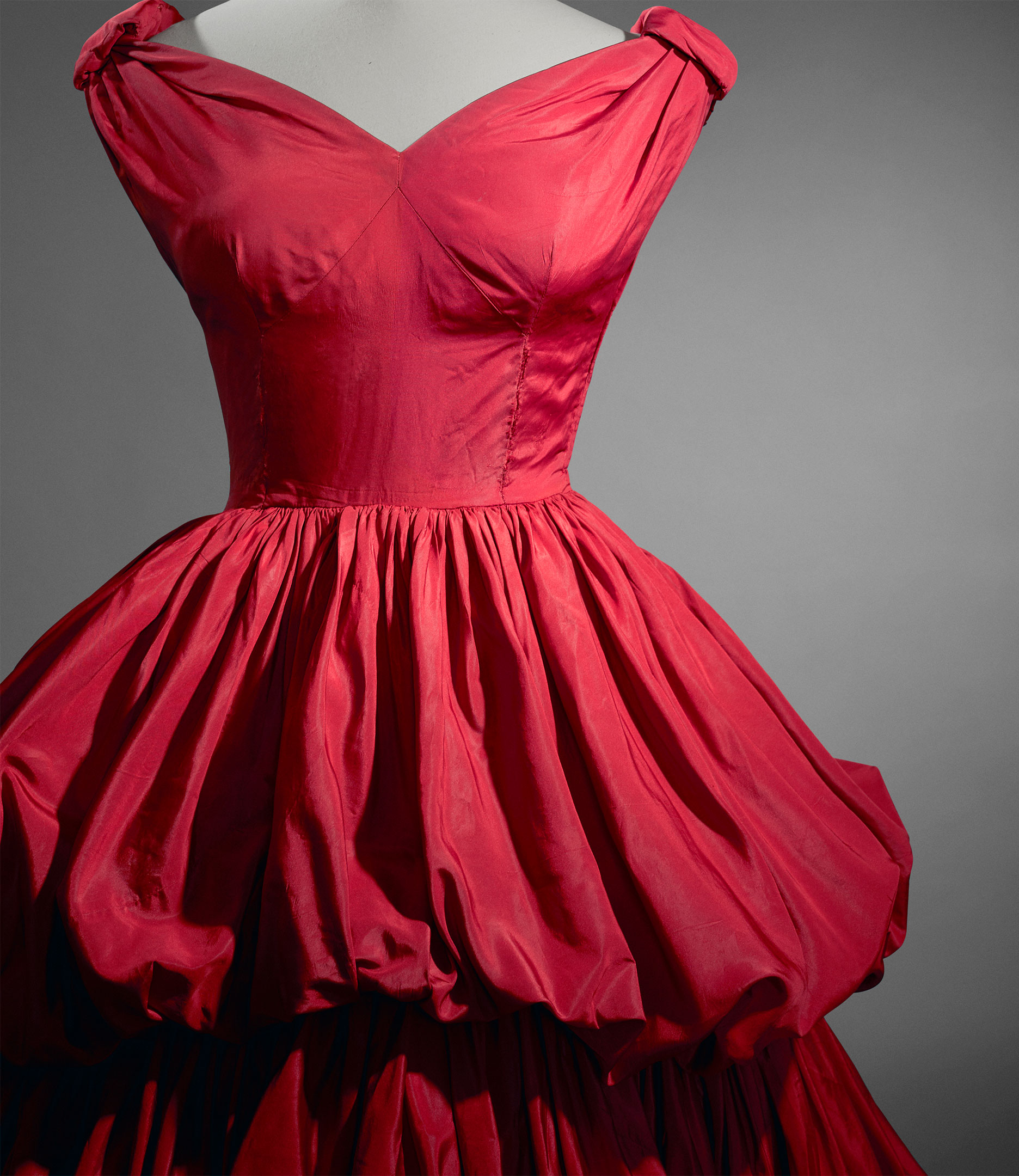
The revolution of the silhouette
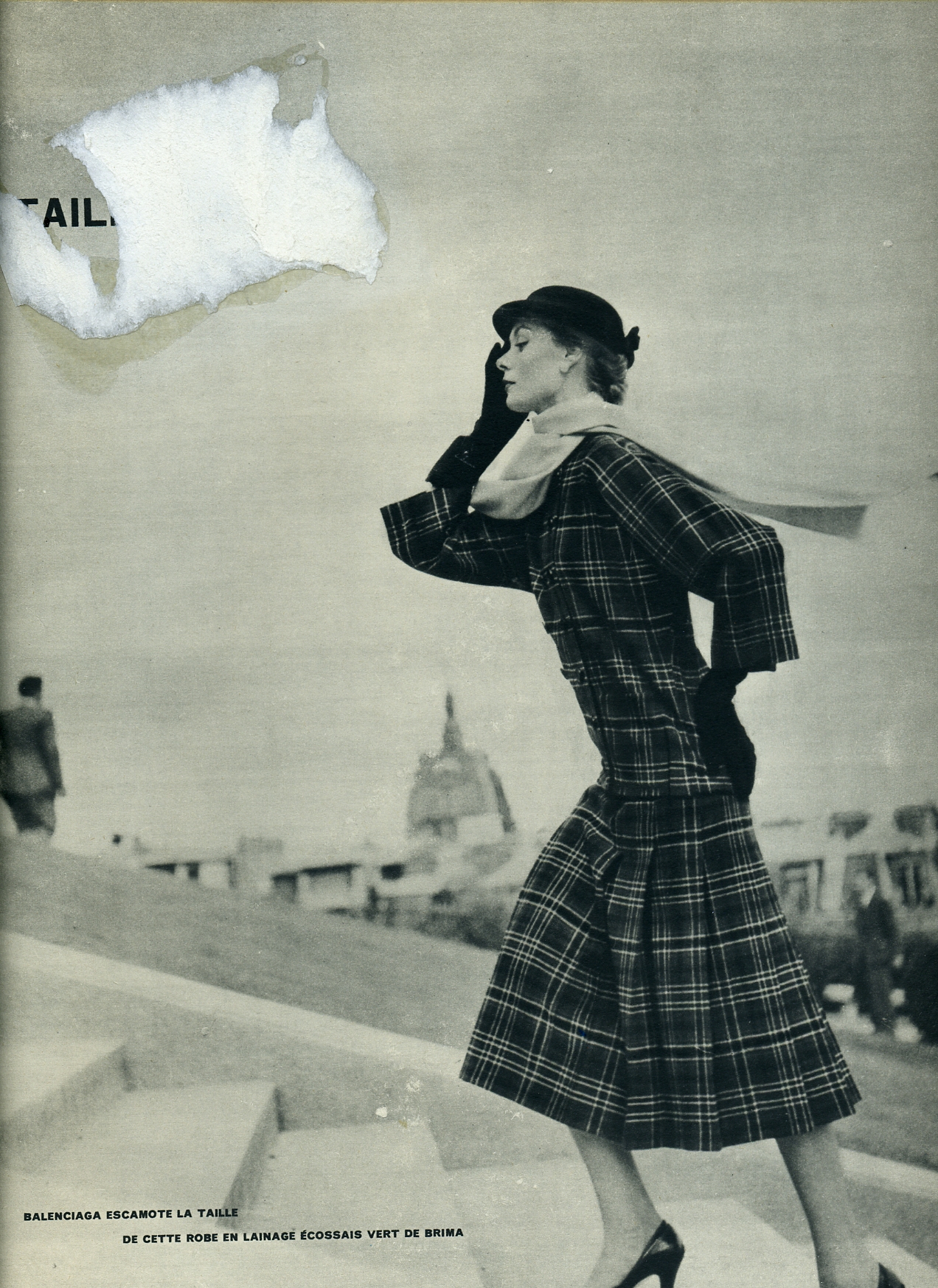
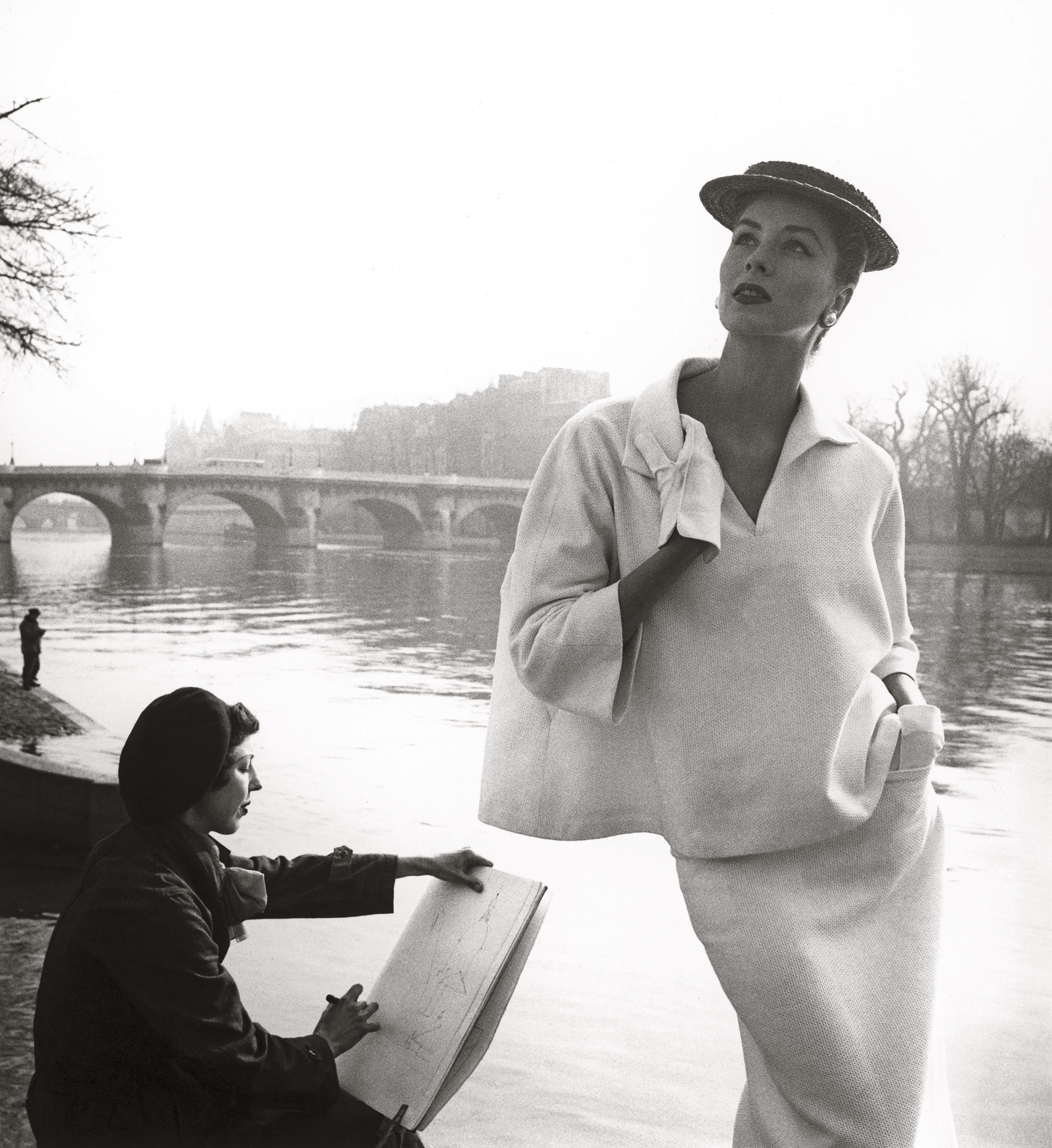
In 2018, the Museum held the first exhibition that explored the work of Cristóbal Balenciaga through a chronological and evolutionary discourse in order to highlight one of his main contributions to the history of clothing: the introduction of new silhouettes for women. The guiding thread of this exhibition revolved around this evolutionary process, from his beginnings in San Sebastian to his latest collection, through to the origins of the milestones that moulded the silhouette to its subsequent evolution through an innovative lens. In 1947 Christian Dior captivated the world with his New Look: its slim waist and very wide skirt maintained the traditional “hourglass” silhouette. That same year Balenciaga surprised all when he showcased innovative, fluid lines and surprising proportions that broke with the standard, such as in the cocoon collection.
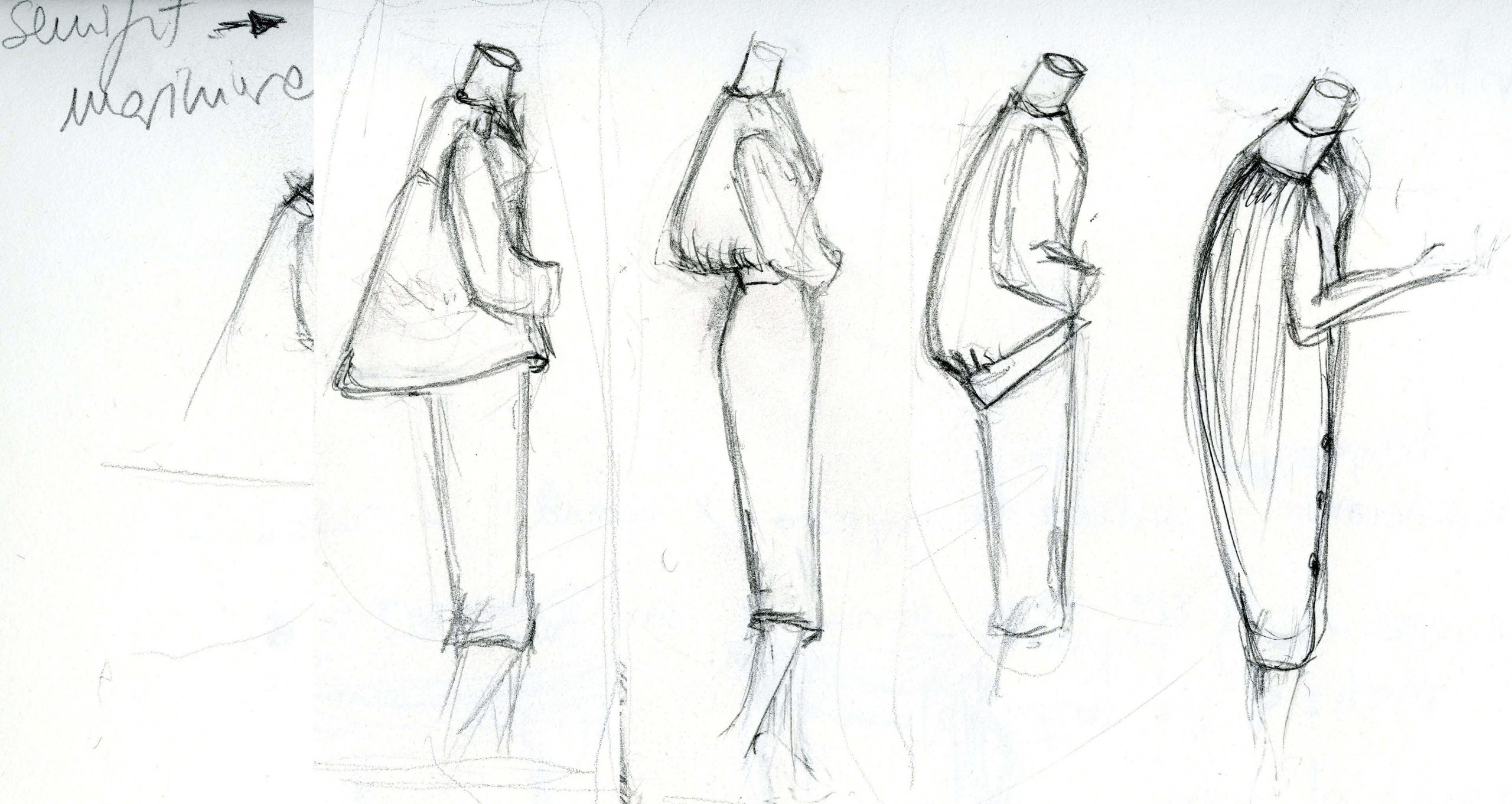
The start of Balenciaga’s research into a new silhouette then began and was consolidated in 1951 when he presented designs that, instead of accentuating feminine curves (especially the waist), tended to blur them: among them, the “midi”, the “sailor” and the “semi-fitted”. Some of these clothes are reminiscent of 1920s silhouettes where the waist was already beginning to fade; from this point onwards, Balenciaga would use the shoulder line and the hemline as reference points in a dress. This marked the beginnings of future milestones designed in the fifties like the loose silhouettes of the “tunic”, “sack” and “baby doll” dresses that he went on to hybridise and refine to a high degree of abstraction in the sixties.
Evening dress in red silk taffeta, 1952
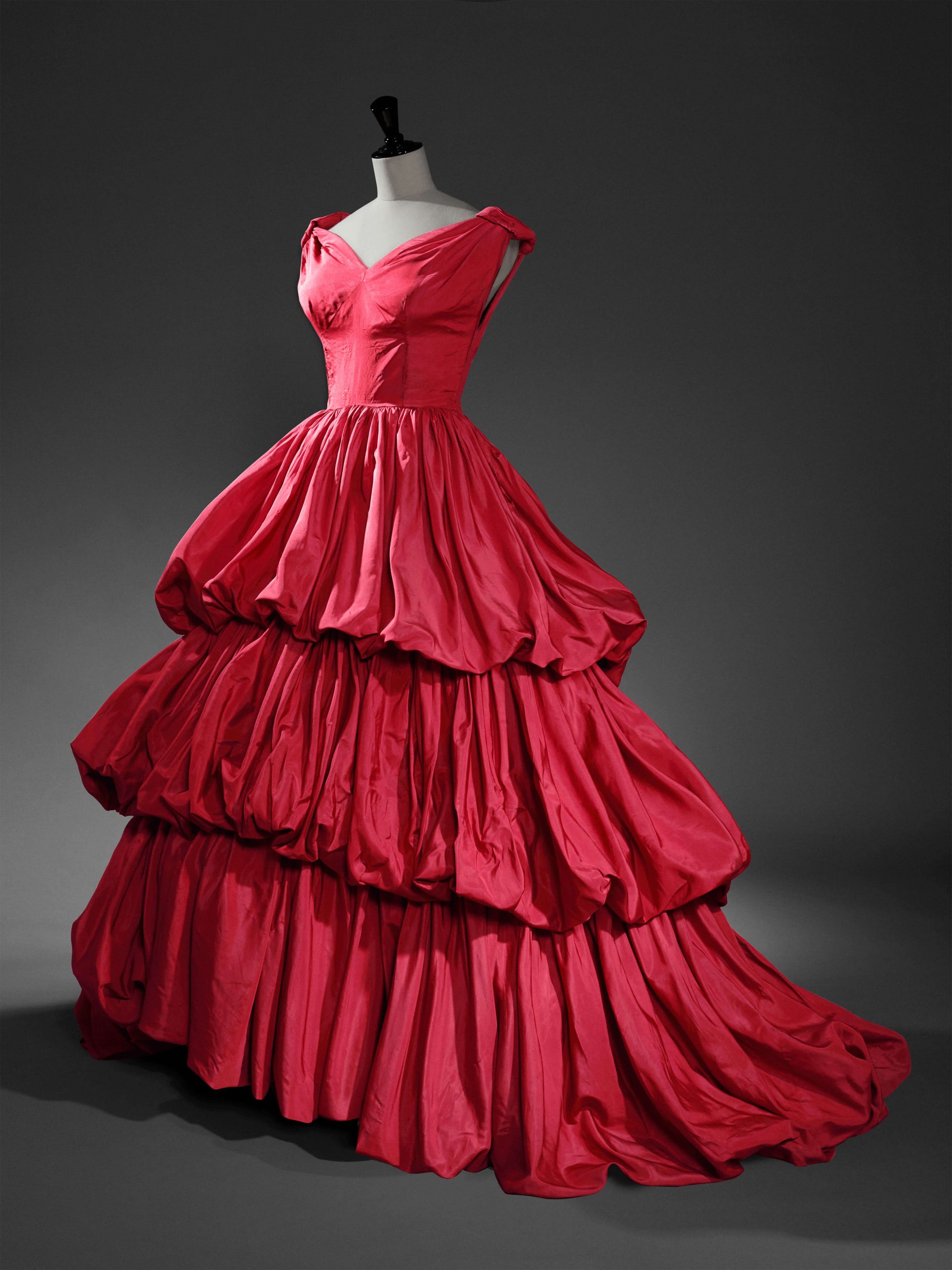
One of the silhouettes Balenciaga introduced in the fifties that played on bodily proportions was the so-called “balloon”. An example of this is this evening dress in silk taffeta and viscose. Its fitted bodice ends with a puffed skirt divided into three and an asymmetrical hem trimmed with red lace. Three puffed skirts of different lengths have been sewn onto the interior structure which gives the evening dress its shape, similar to the crinolines of the late 19th century. From this structure the asymmetrical hemlines emerge. Front-on the dress shows the ankles; the further around you go the asymmetrical hemline becomes longer, which is known as the “peacock train”. The low shoulder and the V-neckline show a minimalist use of moulage in the creation of simple and spacious volumes.
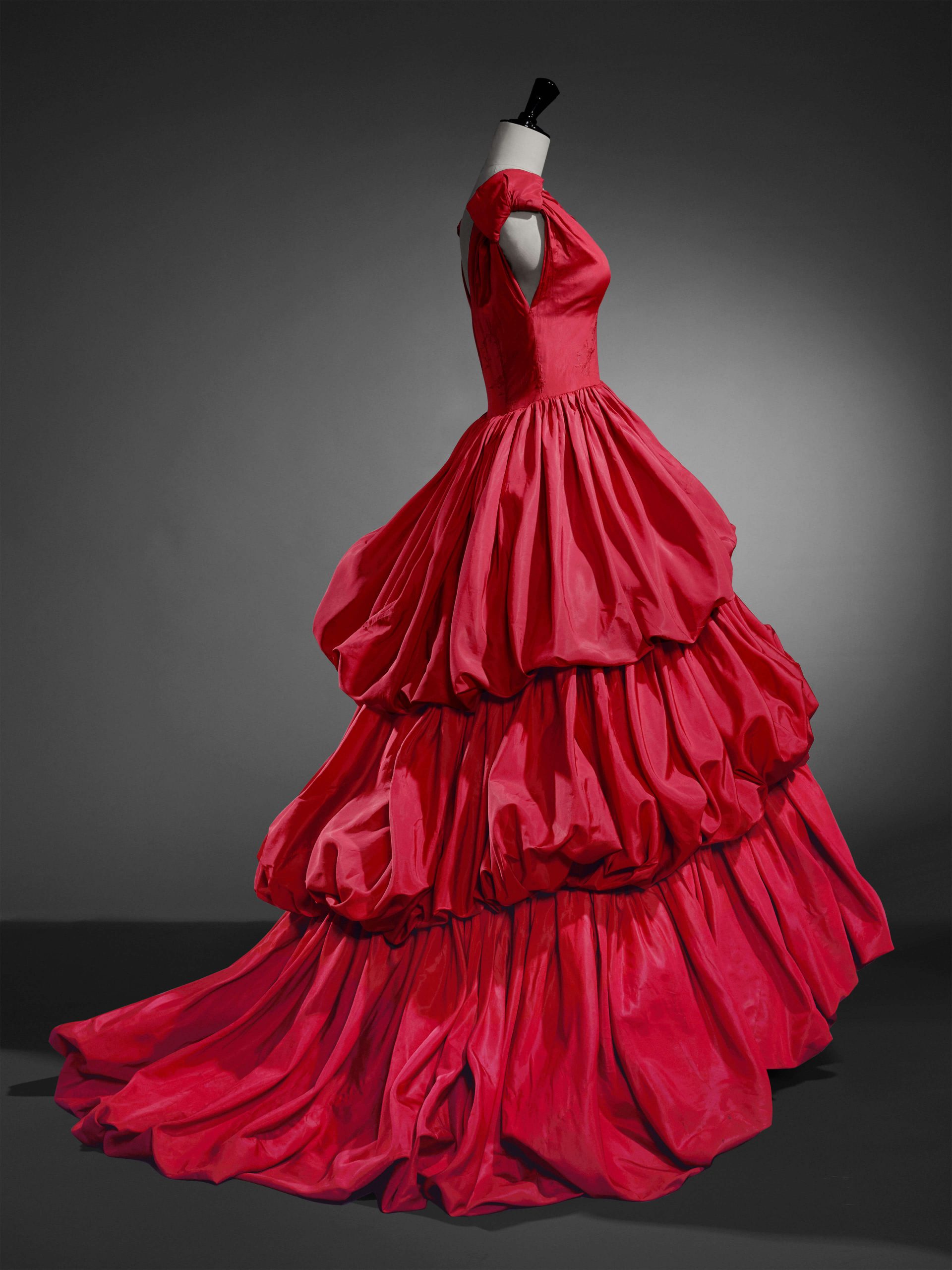
This magnificent dress with its cascading balloon silhouette, added to the Cristóbal Balenciaga Museum’s collection in 2012, underwent a major restoration before being exhibited. The Museum’s restoration treatments adhere to the international criteria for the Conservation and Restoration of Cultural Heritage. These include the reversibility of the methods and products used, the minimisation of intervention and the importance of respect for the original work from a material, aesthetic and historical point of view. The aim has always been to restore the fabrics to their previous texture and nature, giving priority to the conservation of the original fabric and aiming to slow down the process of deterioration.
Restoration process of the red silk taffeta evening dress
“He was a revolutionary without making the revolution”
Hubert de Givenchy
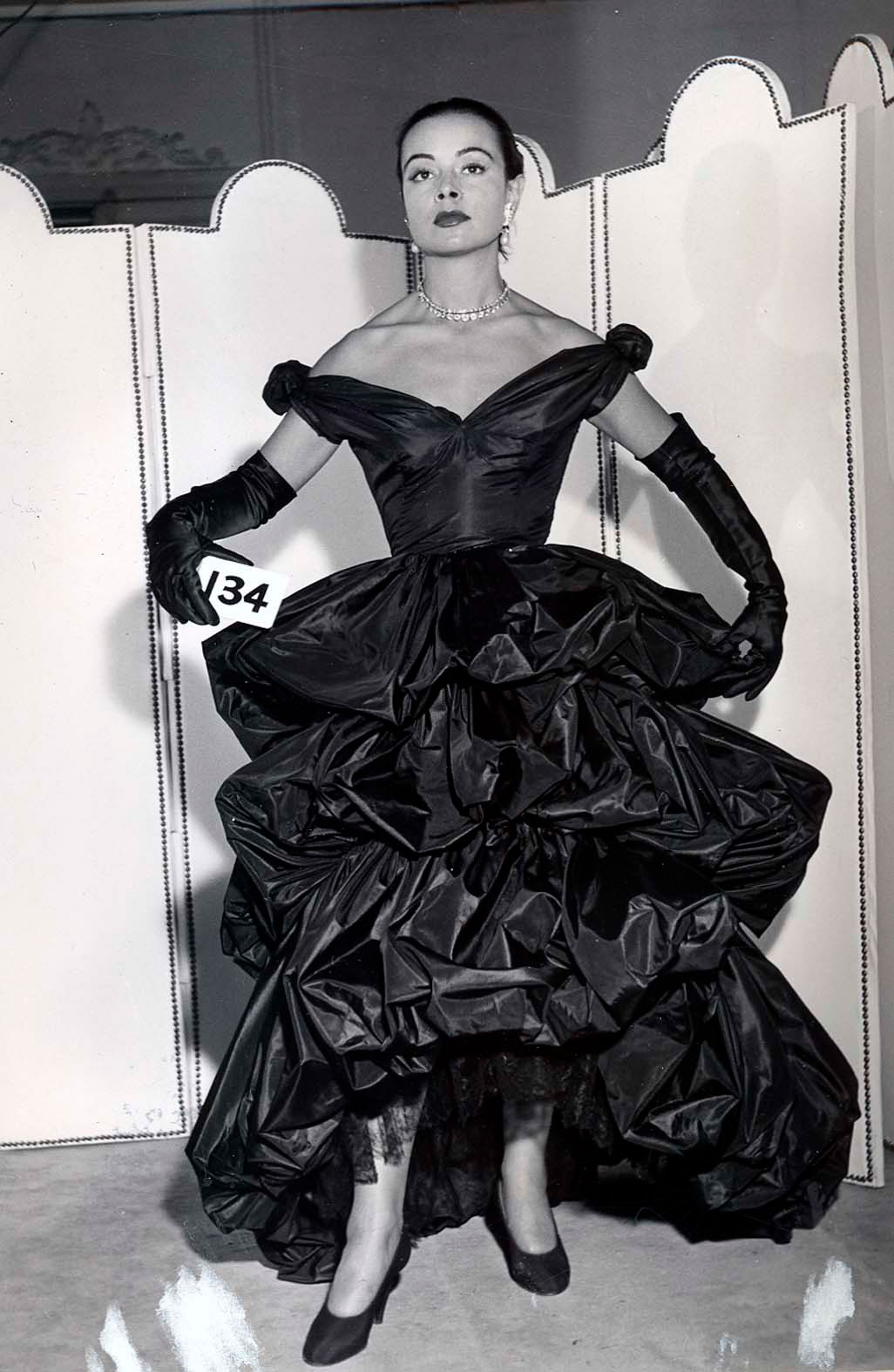

IDOM is a multinational company specialising in engineering, architecture and consulting that collaborates with the Museum in the optimization of one of the most critical aspects of our work: air conditioning. “Our aim is to provide an excellent, top quality service, supported by the best of technology, and to offer efficient and innovative solutions to solve problems.”
2019 —
SUSTAINABILITY
Since the second half of the 20th century, fashion, which has become a major cross-sector industry, has had a considerable impact on the economy and the environment. During this time, the Fashion world also became aware of the need to adopt sustainable paths (local production, zero-kilometre, recycling, new biomaterials) in order to reach a new paradigm of sustainability. In short, a “slow fashion” model that is very close to Balenciaga’s working philosophy.
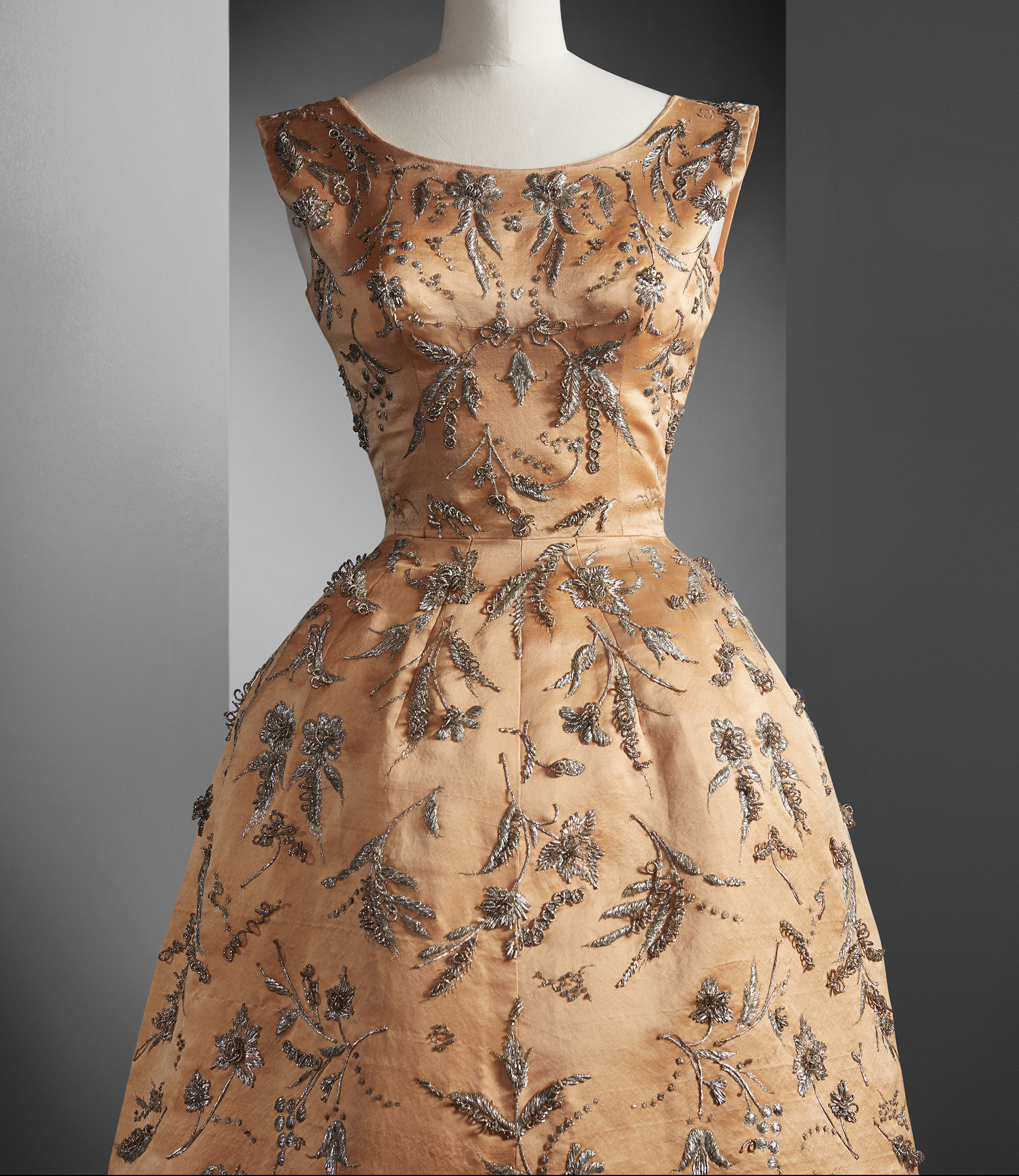
Fashion and Heritage: the sense of a curatorial series
In 2018, coinciding with the European Year of Cultural Heritage, the Museum launched the curatorial series “Fashion and Heritage” to explore the work of Cristóbal Balenciaga through a chronological and evolutionary discourse highlighting the process by which what was once a simple garment has now become the Museum’s collection. The starting point of the curatorial series is the 50th anniversary of the closure of his salons and ateliers in 1968. It was at that time that the production of garments came to an end and Balenciaga’s creations gained a symbolic value and became the objects of private collections and of the first exhibitions. The exhibition discourse and the selection of pieces that accompany this series, as well as their design and spatial conceptualisation, are the result of the collaboration between the team of the Museo Cristobal Balenciaga and the renowned fashion curator Judith Clark. This collaboration lasted for three editions.
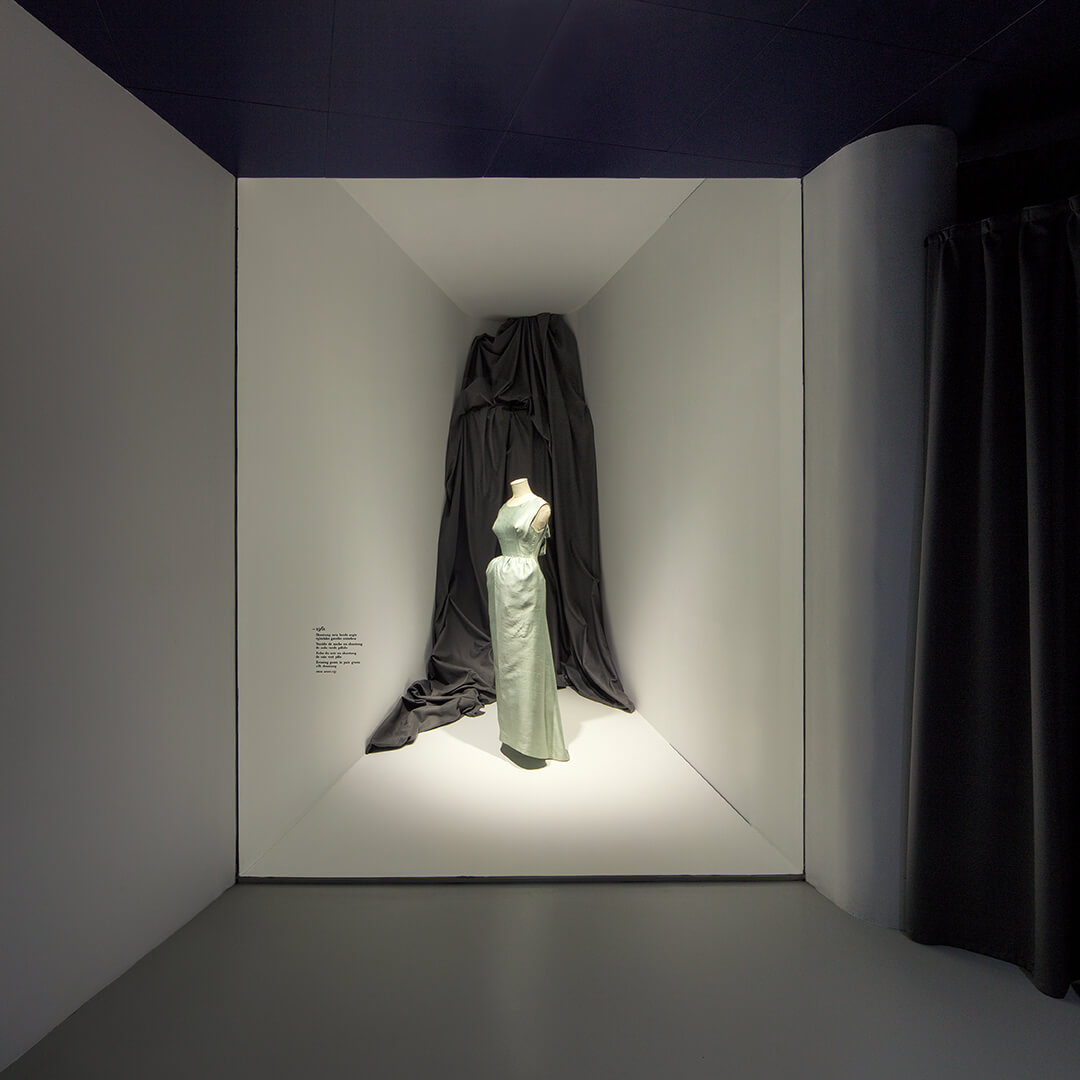
“What this series of exhibitions does it rethink the boundaries between two words – fashion and heritage – and their uses. Heritage is often seen as static and finite, and these exhibitions disrupt that perspective”.
Judith Clark
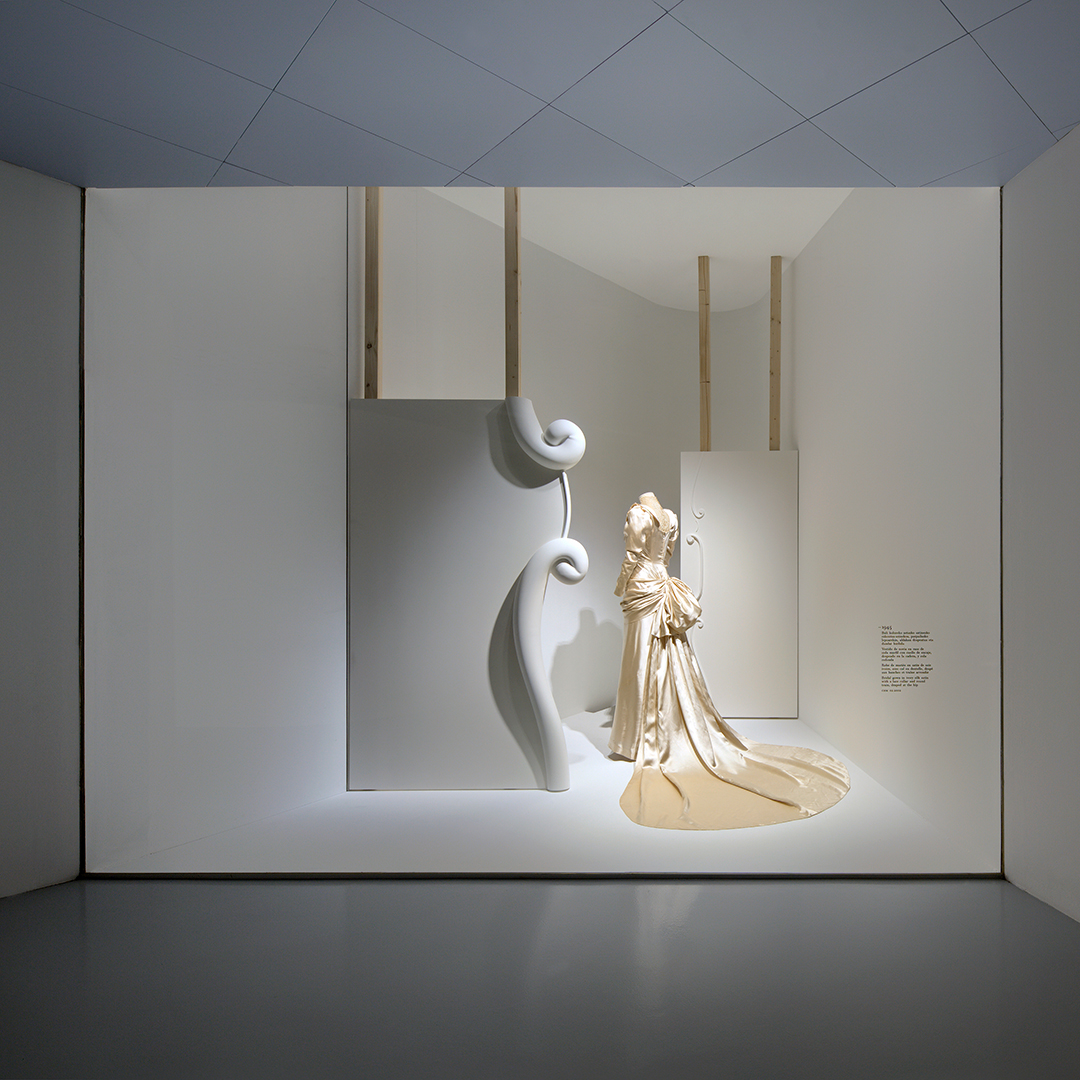
The series is a cumulative work that allows new content to be assimilated and added in a sustainable way, all the while keeping the same themes and chronological sequence thanks to the research developed by the Museum. The first exhibition, “Conversations”, alluded to the different interpretative layers that photography, research or museography confer on heritage pieces. The second exhibition, “Contexts”, evaluated the various historical, social, cultural and personal spheres surrounding the heritage garment, while the third exhibition, “Cristóbal”, focused on the heritage elements linked to the creator’s biography, coinciding with the 125th anniversary of his birth.
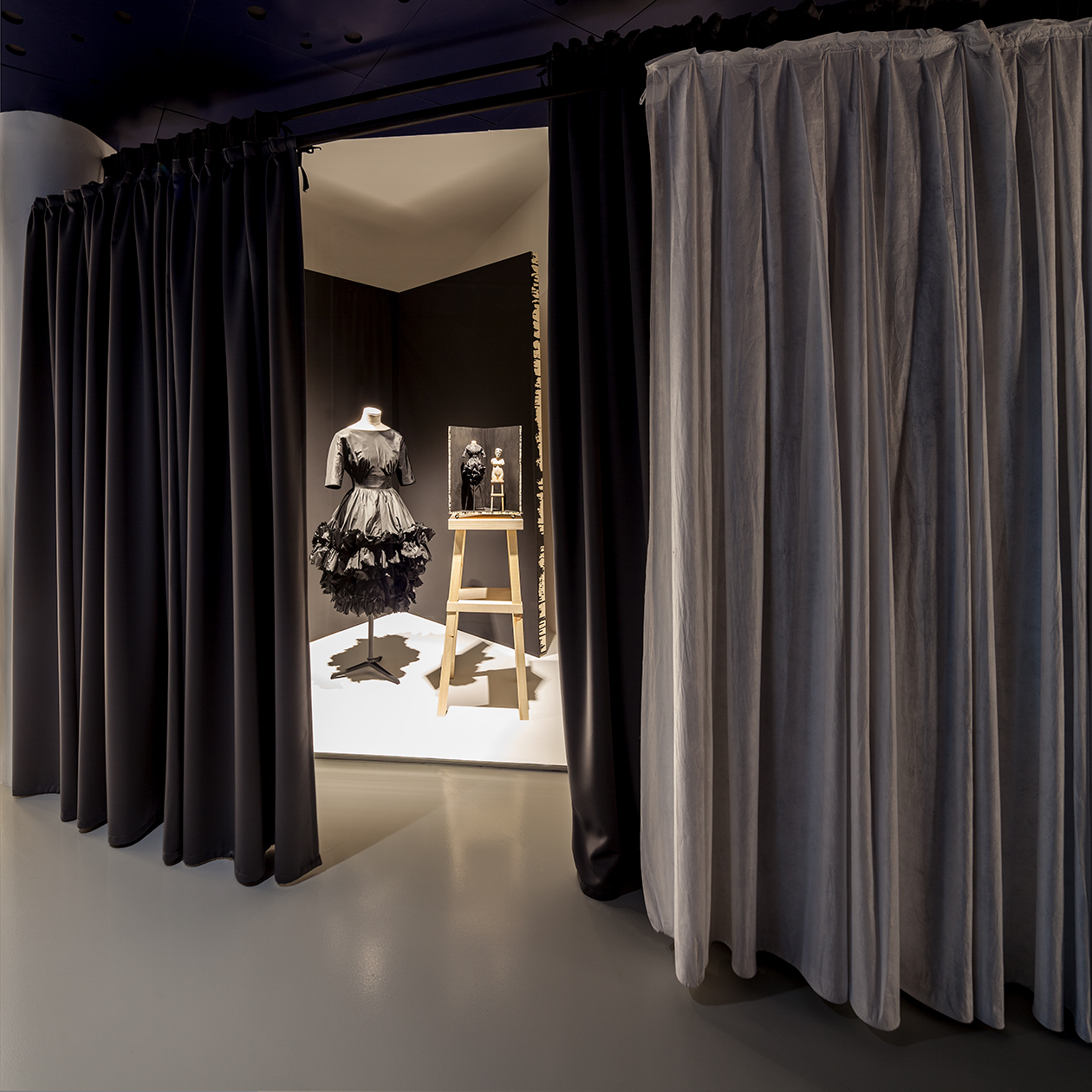
The museographic elements devised expressly for the series change place and meaning from one exhibition to the next, while the aesthetics of the archive are maintained and all the materials are recycled and incorporated into the next chapter. In this way, and without the need for consumption or additional waste, very different readings are made within the same thematic and aesthetic context, proposing various Balenciaga-style evolutions and revolutions. It is, therefore, a true innovative and sustainable curatorial series from both a conceptual and a presentational point of view.
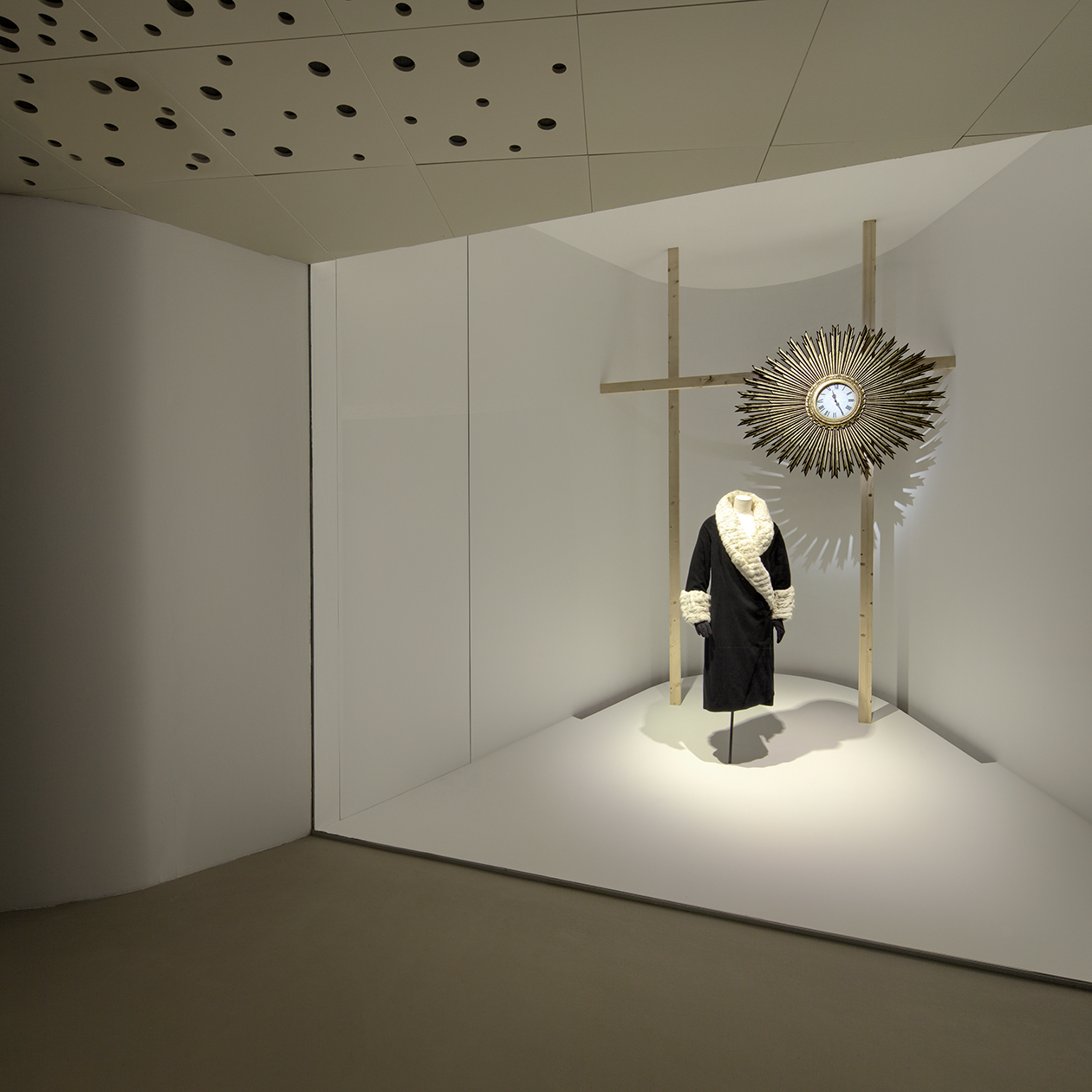
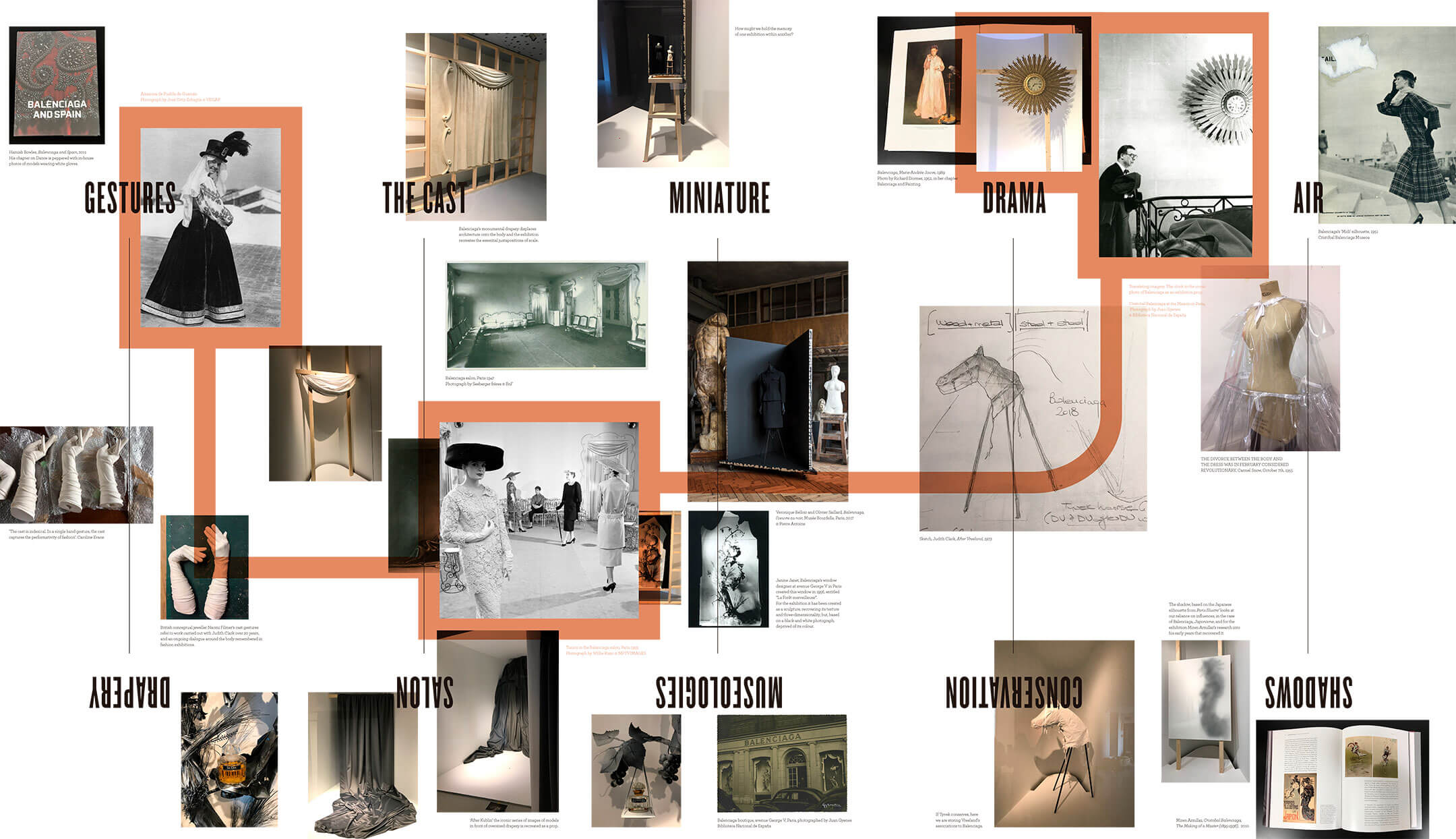
Evening dress with asymmetrical hem in satin, ginger-coloured shantung, embroidered with silver threads and sequins, 1957
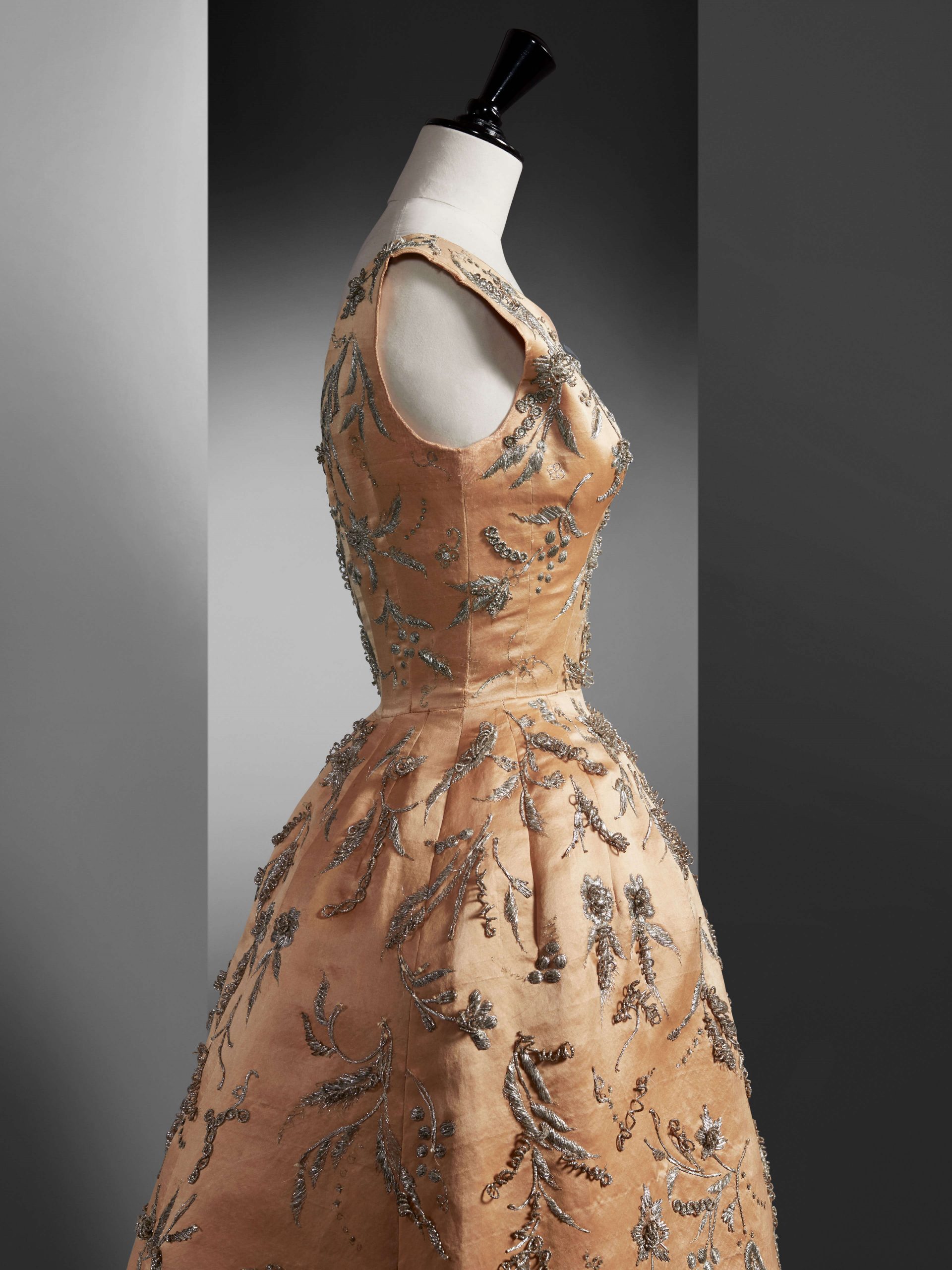
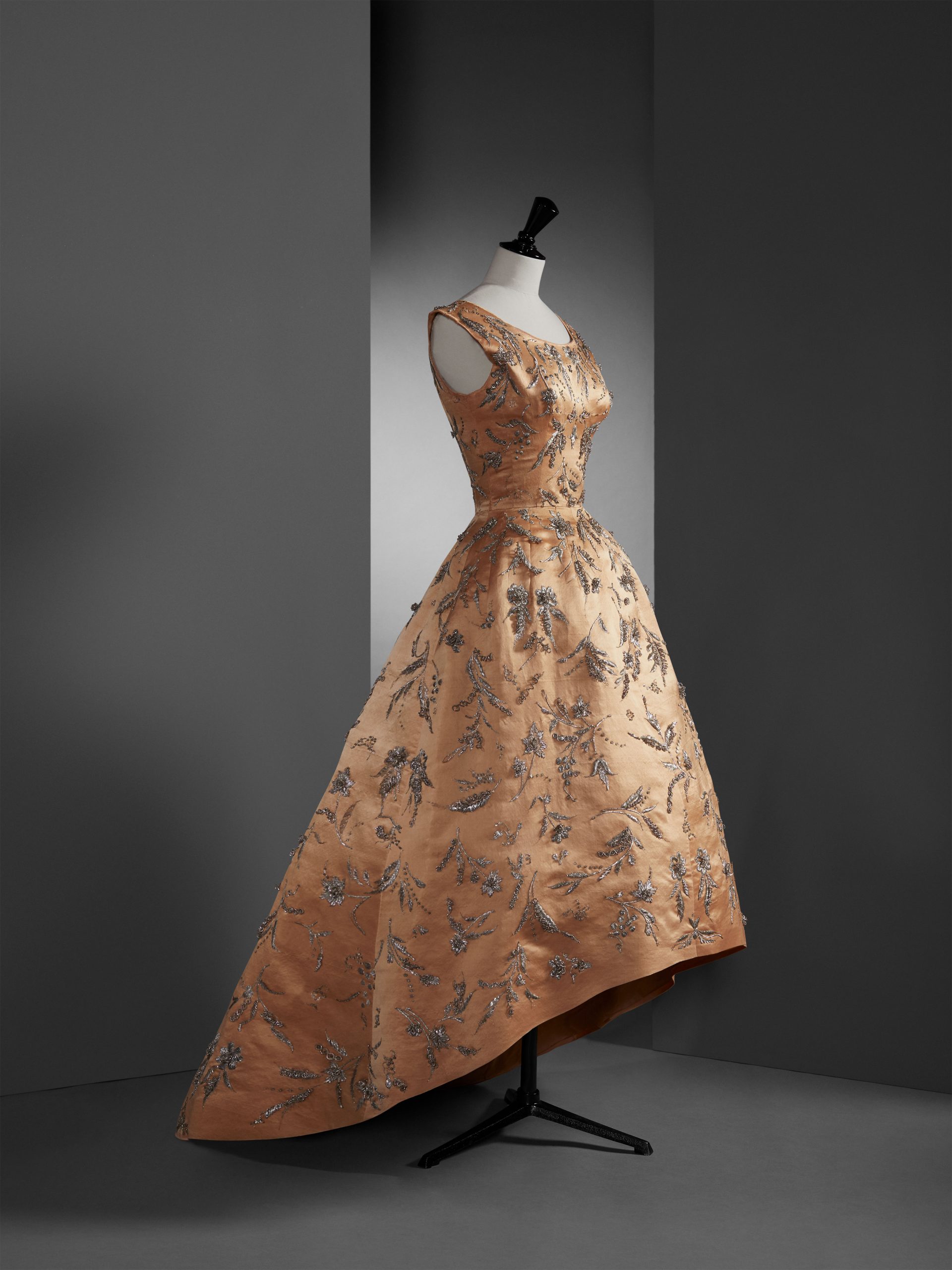
The dress has a round neckline which becomes more pronounced at the back. It has straps, an accentuated waist and a wide skirt. It closes with a zip, is lined with taffeta in the same colour, and the fabric has embroidery of a floral motif. The skirt has very rounded hips and the hem is shorter at the front, lengthening towards the back. Embroidery by Lizbeth. Honouring the phrase “…architect for the plans, painter for the colour…”, the colour of the fabric, classified at the House as ginger, was taken to mark the graphic and exhibition design of the curatorial series and applied to a series of maps that showed the research that precedes every exhibition and that is integrated into its exhibition discourse.
“A good couturier must plan like an architect, colour like a painter, harmonise like a musician and measure like a philosopher”
Cristóbal Balenciaga
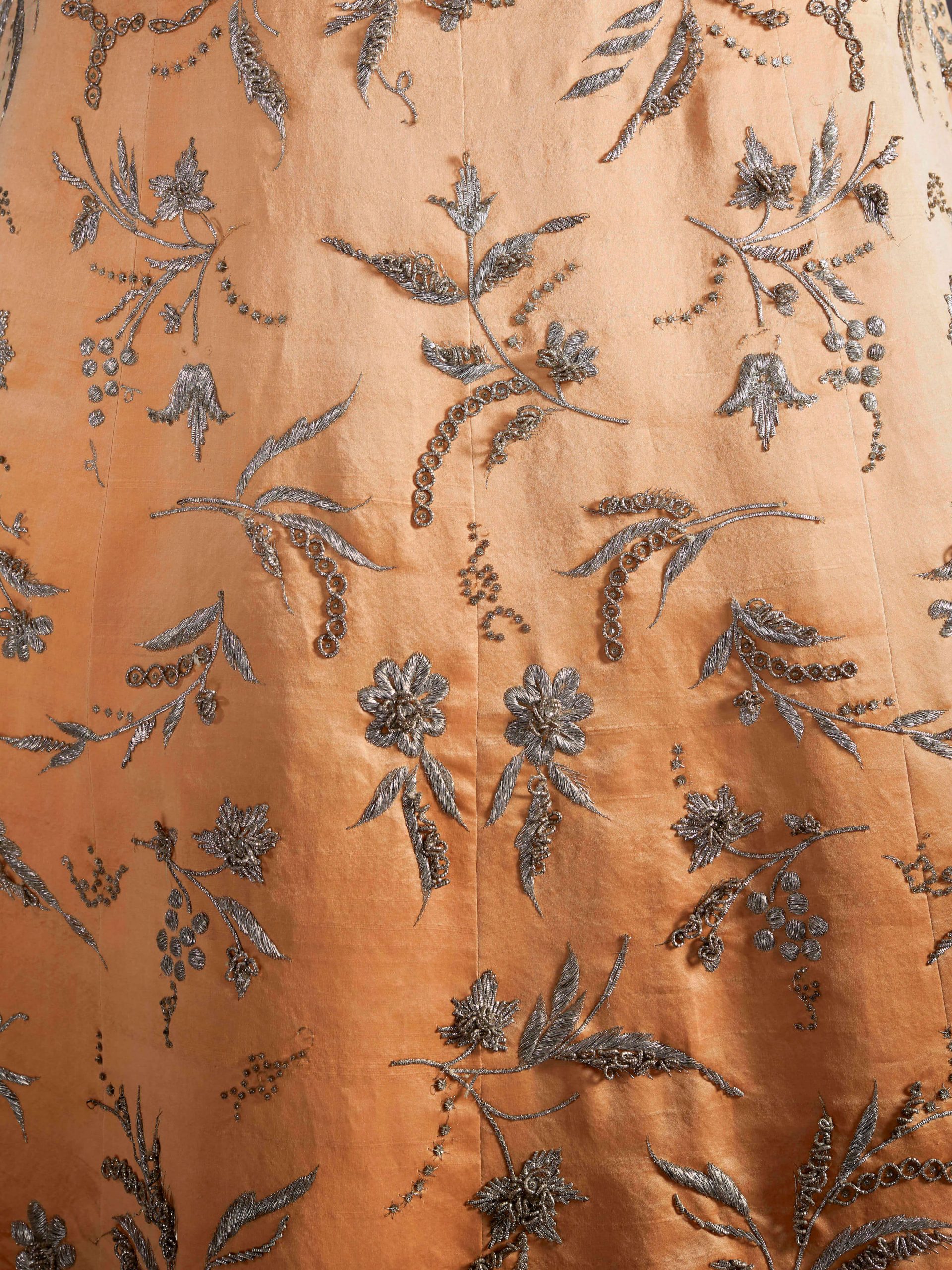

The Cristóbal Balenciaga Museum is part of the Gipuzkoa GreenKluster, promoted by the Department of Environment and Hydraulics of the Provincial Council of Gipuzkoa, which includes other organisations and individuals that share the objective of educating and raising awareness about the need for sustainable fashion, and incorporate this philosophy in their productions.
2020 —
RIGOUR
Rigour and precision were always fundamental characteristics of Cristóbal Balenciaga’s work and personality. The couturier always shunned frivolity and lightness; he was scrupulously meticulous when constructing his creations. He mastered the technique of sewing like no one else, which gave him a powerful skill set when it came to creating striking clothes.
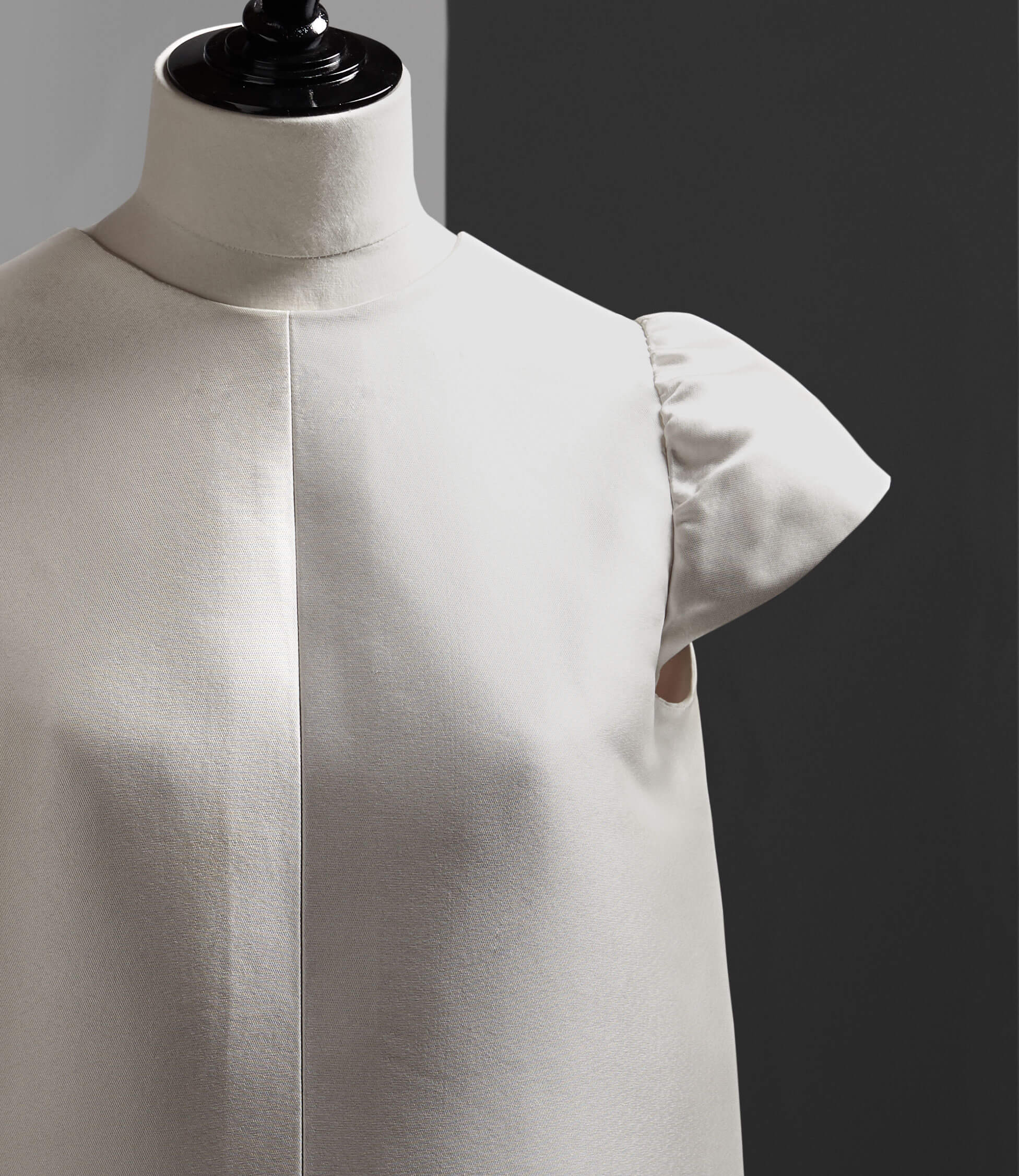
Cristóbal Balenciaga in the focus of academic research
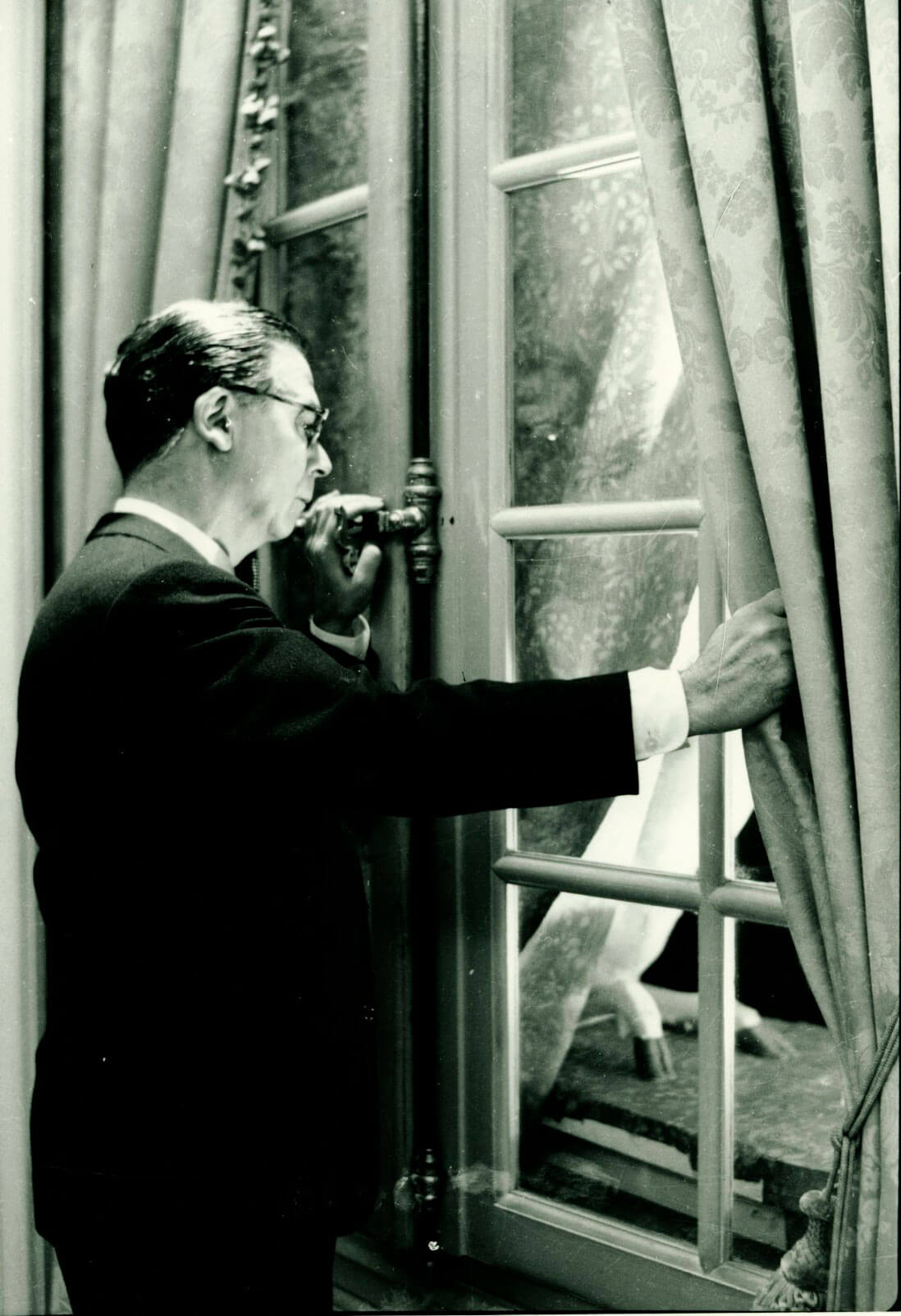
To commemorate the 125th anniversary of the birth of the master of haute couture, the Cristóbal Balenciaga Museum held the 1st International Congress on Cristóbal Balenciaga in 2020. This academic congress, with international reach, was intended to be a platform to present innovative and high-quality work and research on the figure and legacy of the couturier in all its breadth – personal, business, creative, technical, etc. – as well as projects that analyse the various biographical, cultural and working contexts in which Balenciaga developed.
1st International Congress on Cristóbal Balenciaga Getaria, 1 and 2 October 2020
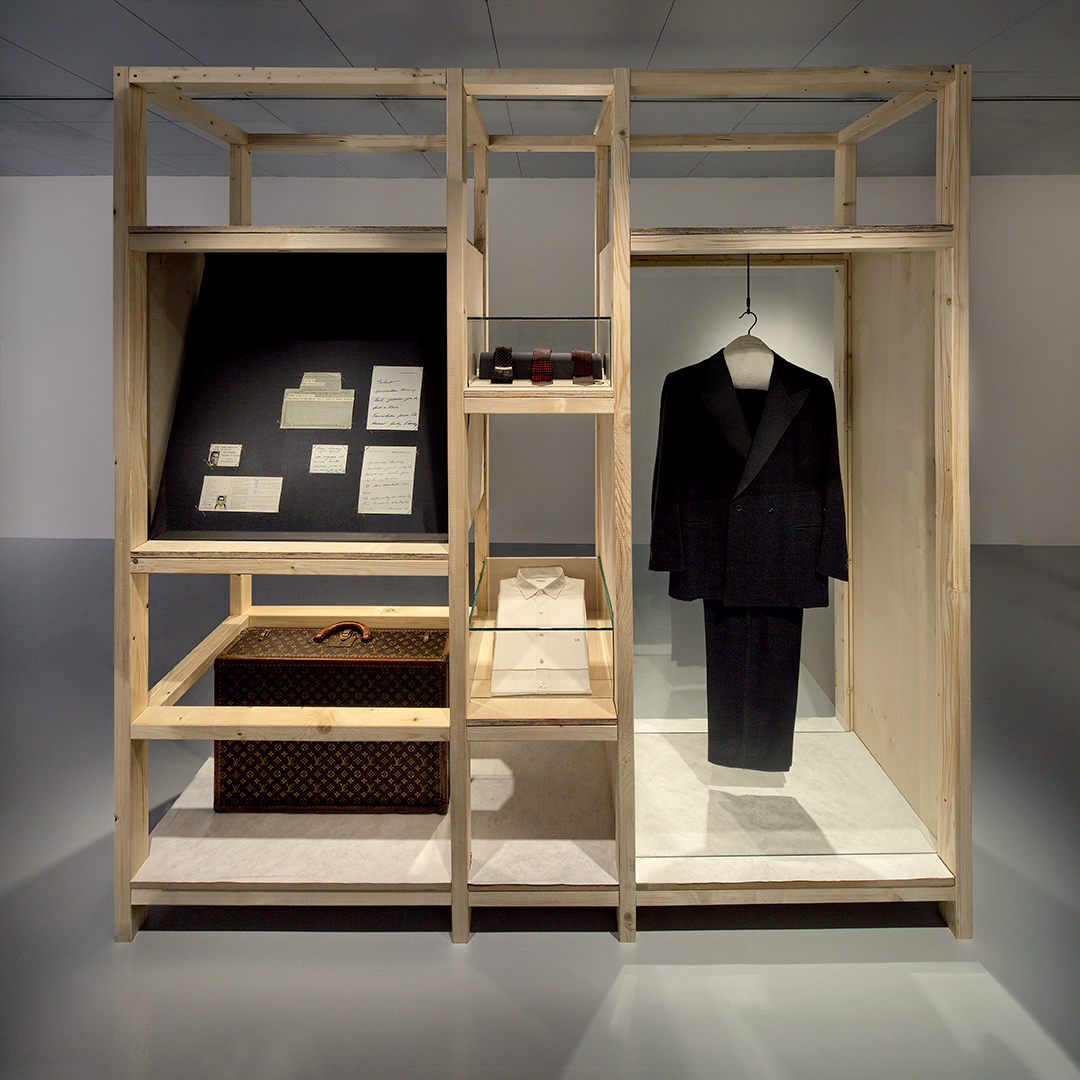
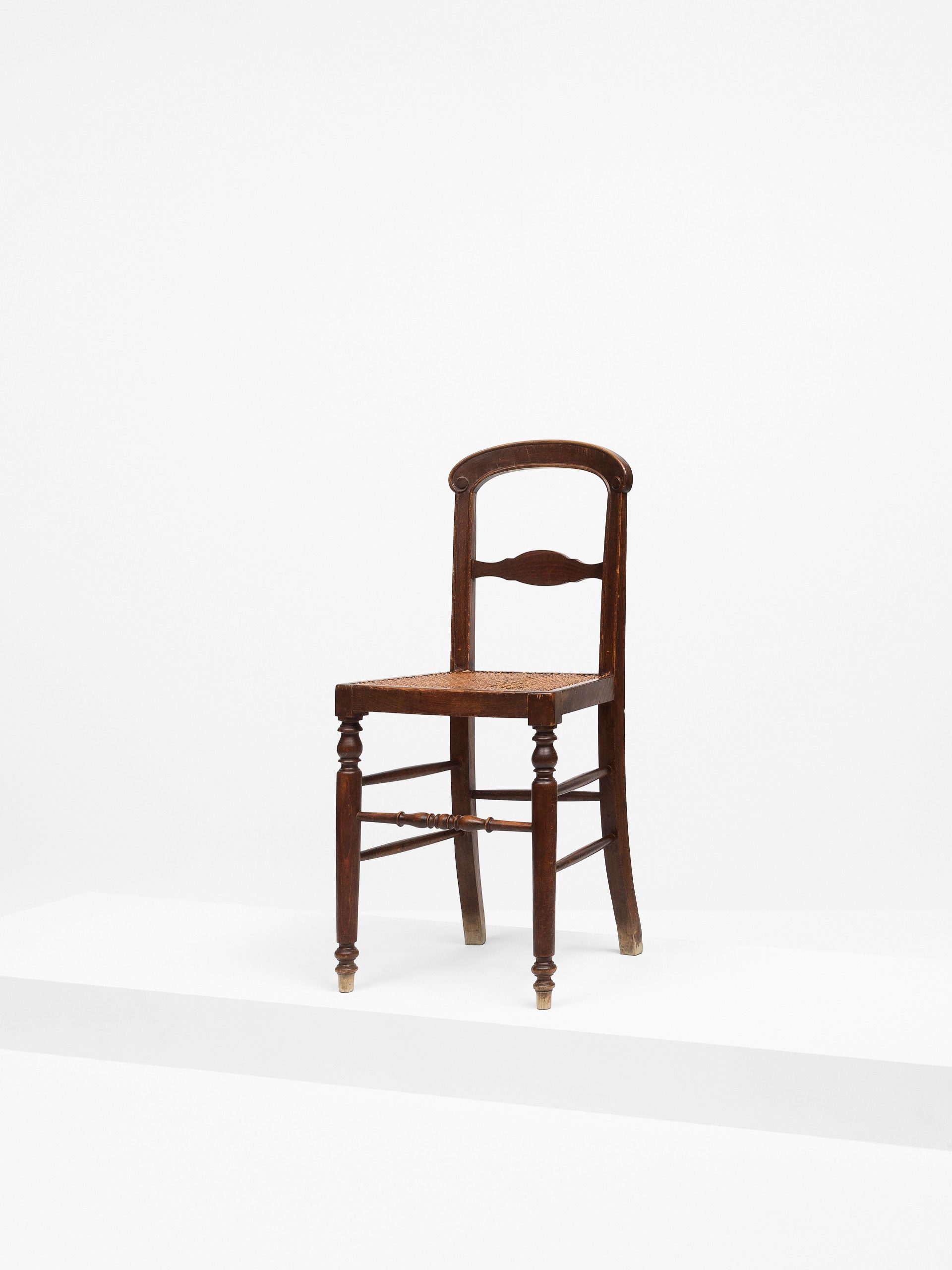
The scientific committee, made up of ten renowned experts on Cristóbal Balenciaga, was responsible for selecting, from among all the proposals received, those 14 presented at the Congress. Given the transcendence of Balenciaga, the selected proposals not only delved into the field of fashion history, but also into other fields of study, such as economics, communication and the arts in a broader sense. 2500 people attended online. The Congress demonstrated that there remains a clear academic interest in Cristóbal Balenciaga. What’s more, it led to two publications: a special issue of the journal Fashion Theory (May 2021) and the Congress proceedings themselves which, together with all the publications on previous research at the Museum, are available online for this growing community of scholars of Cristóbal Balenciaga and his time.
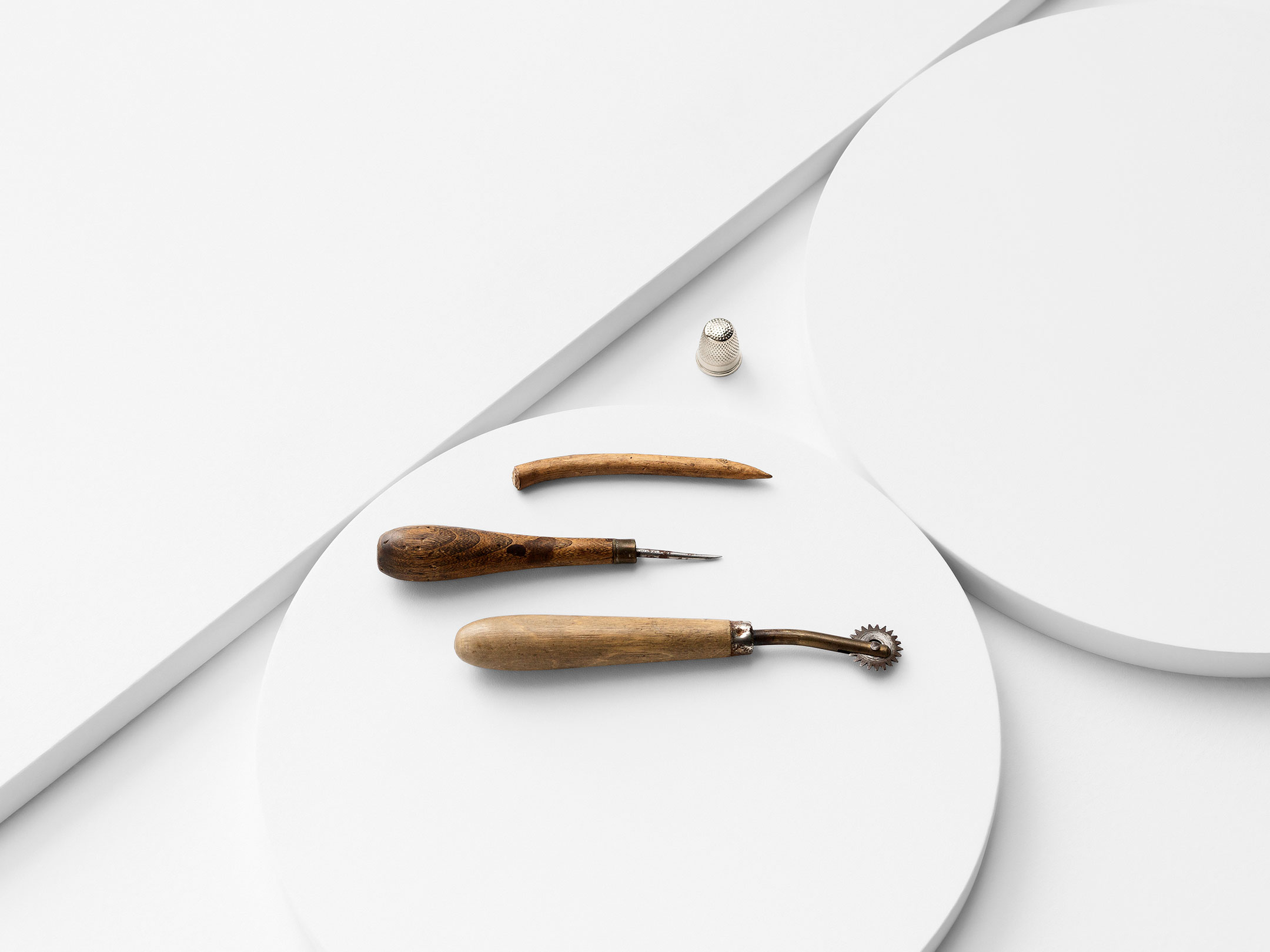
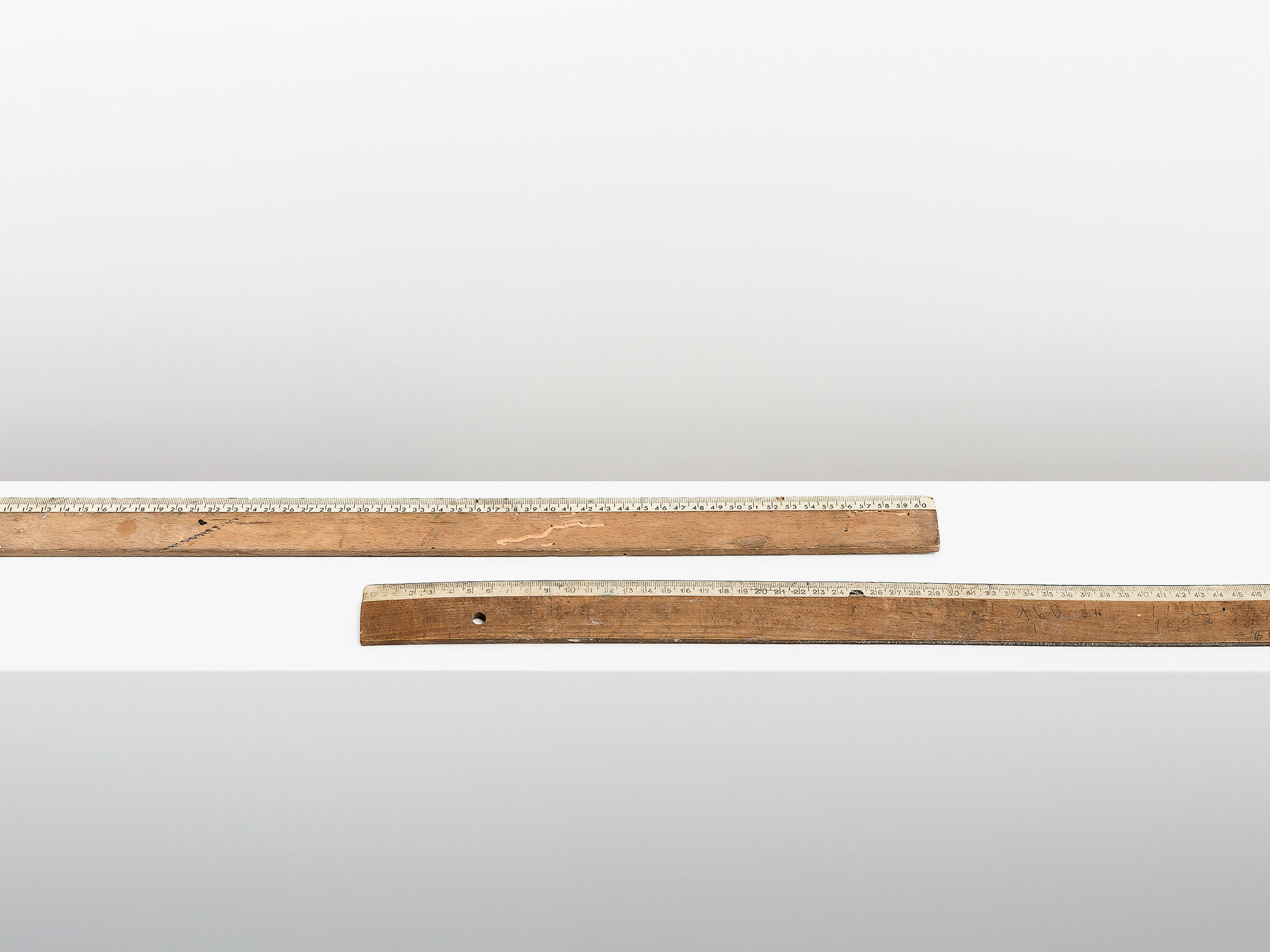
“The Museum’s collections include the creations of Cristóbal Balenciaga, but also all those objects that belonged to him and help us to understand the different biographical, cultural and working contexts in which Balenciaga developed”.
Miren Vives, general manager of Cristóbal Balenciaga Museoa
Evening dress in white ziberline by Staron, 1967
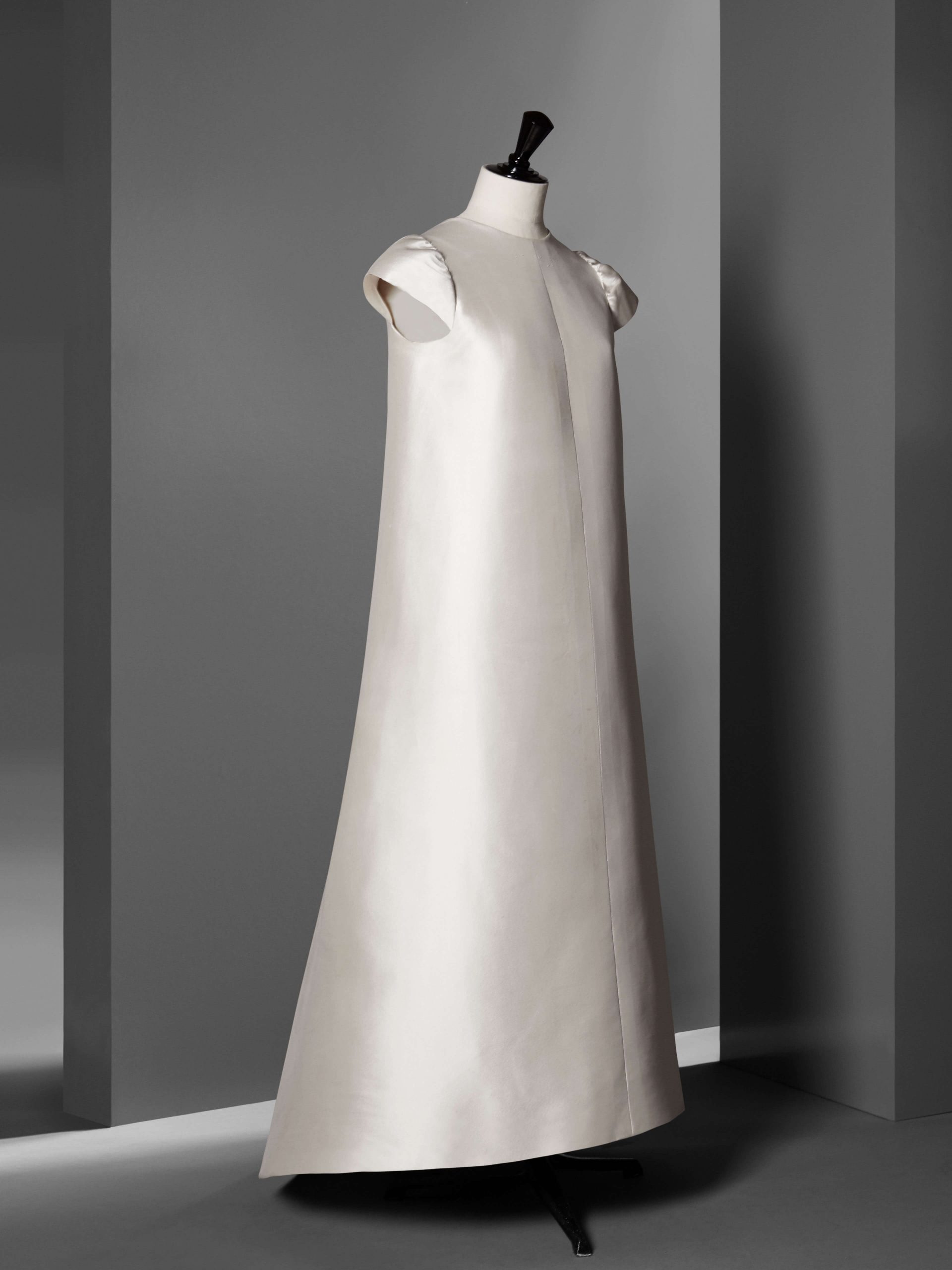
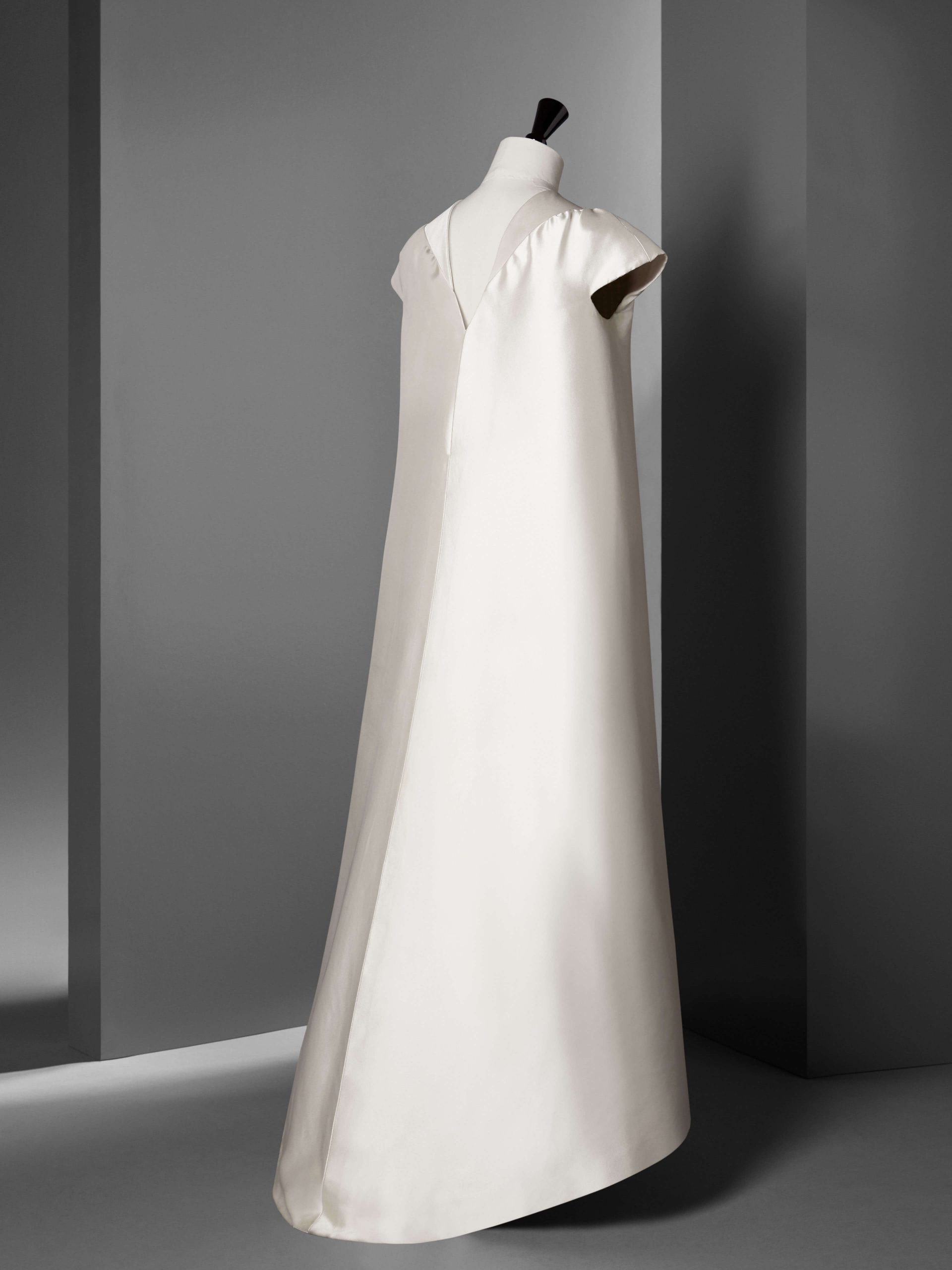
Characteristics of the evening dress in ziberline
1967 evening dress in ivory ziberline by Staron. A minimalist wrap that starts from the front seam and covers the whole body with a single piece of material and ends in a spiral on the short sleeve creating a trapezoidal silhouette. Rigour, perfection, balance and innovation are the main characteristics of this piece. The dress has a box neckline at the front and a V-neck at the back. The sleeves are made of a separate material and are slightly gathered. The hem is asymmetrical and has ridges at the hem, both on the front and on each side of the seam.
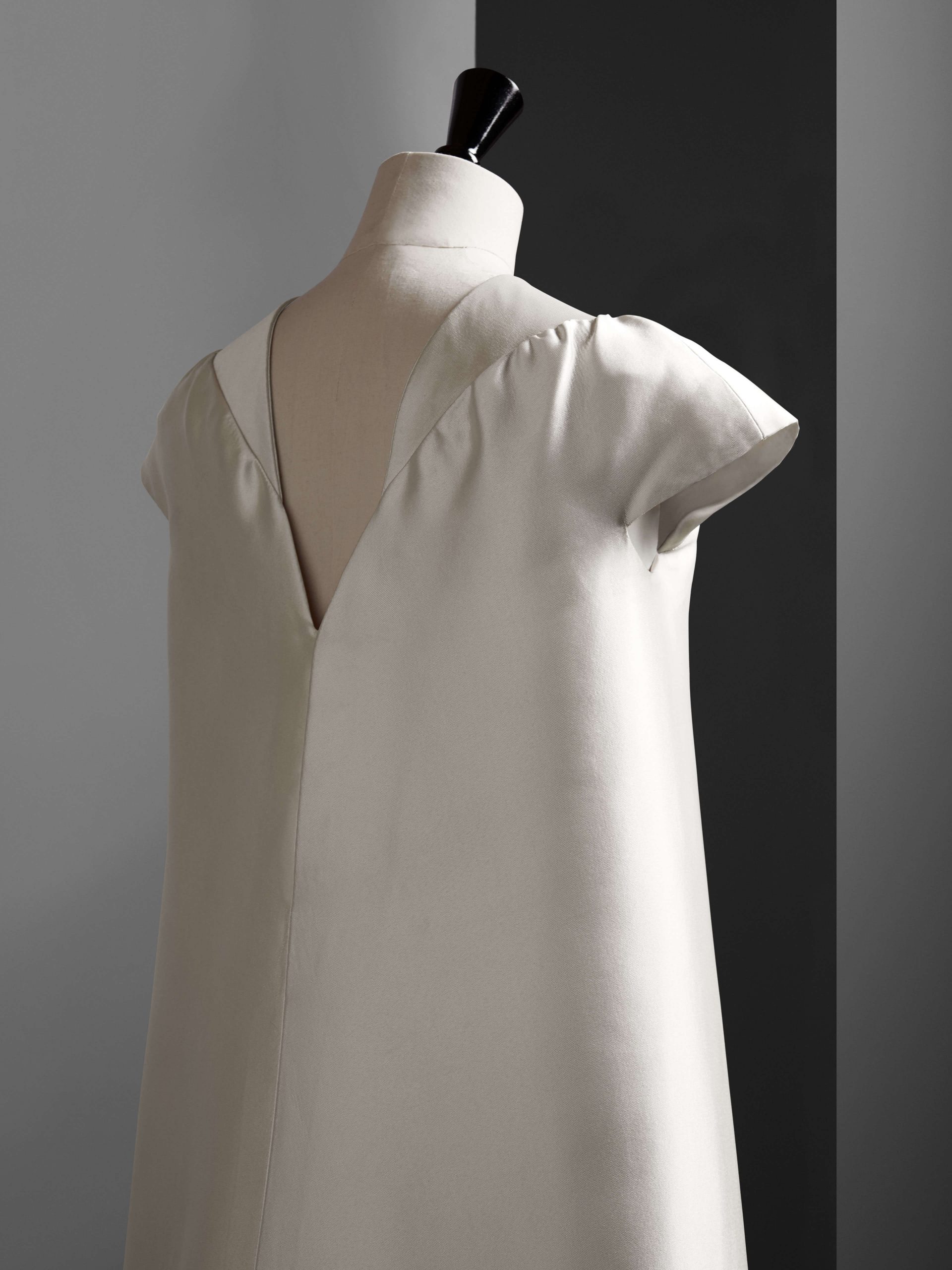
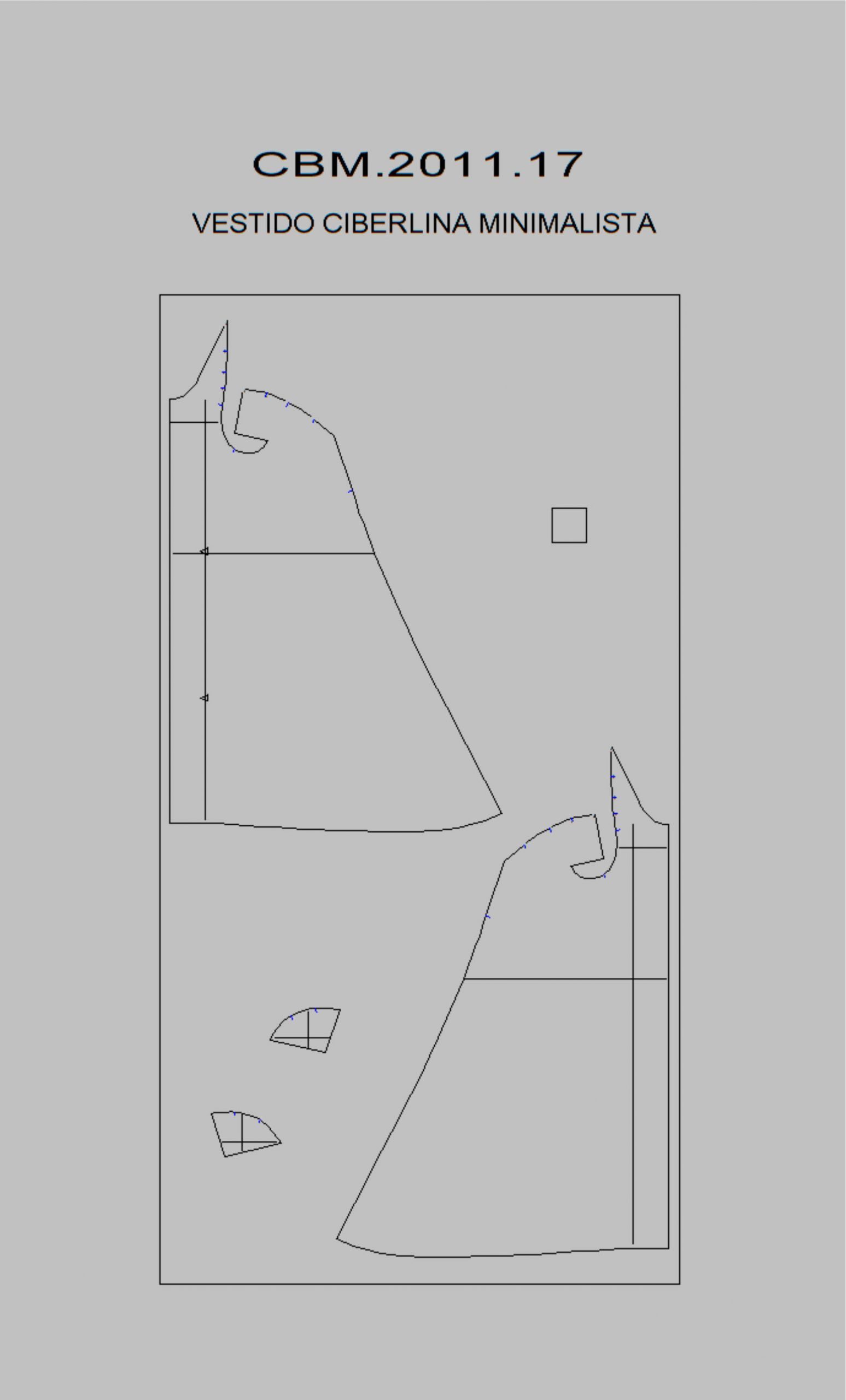

As the leading audiovisual communication group in the Basque Country, EITB offers information, training and entertainment to all. It is the motor to the Basque country’s audiovisual ecosystem and culture. EITB’s alliance with the Cristóbal Balenciaga Museum aims to open a new digital window to the world of Basque production and creation through two public institutions at the service of this society.
2021 —
REFERENTIALITY
During five decades of professional career, Balenciaga directed his haute couture houses in Spain and France and made his name synonymous with elegance, avant-garde, beauty and timelessness. His work continues to inspire new generations of designers, and the Museum’s mission is to make his legacy more accessible in order to transmit the knowledge, techniques and values that characterised the master of haute couture.
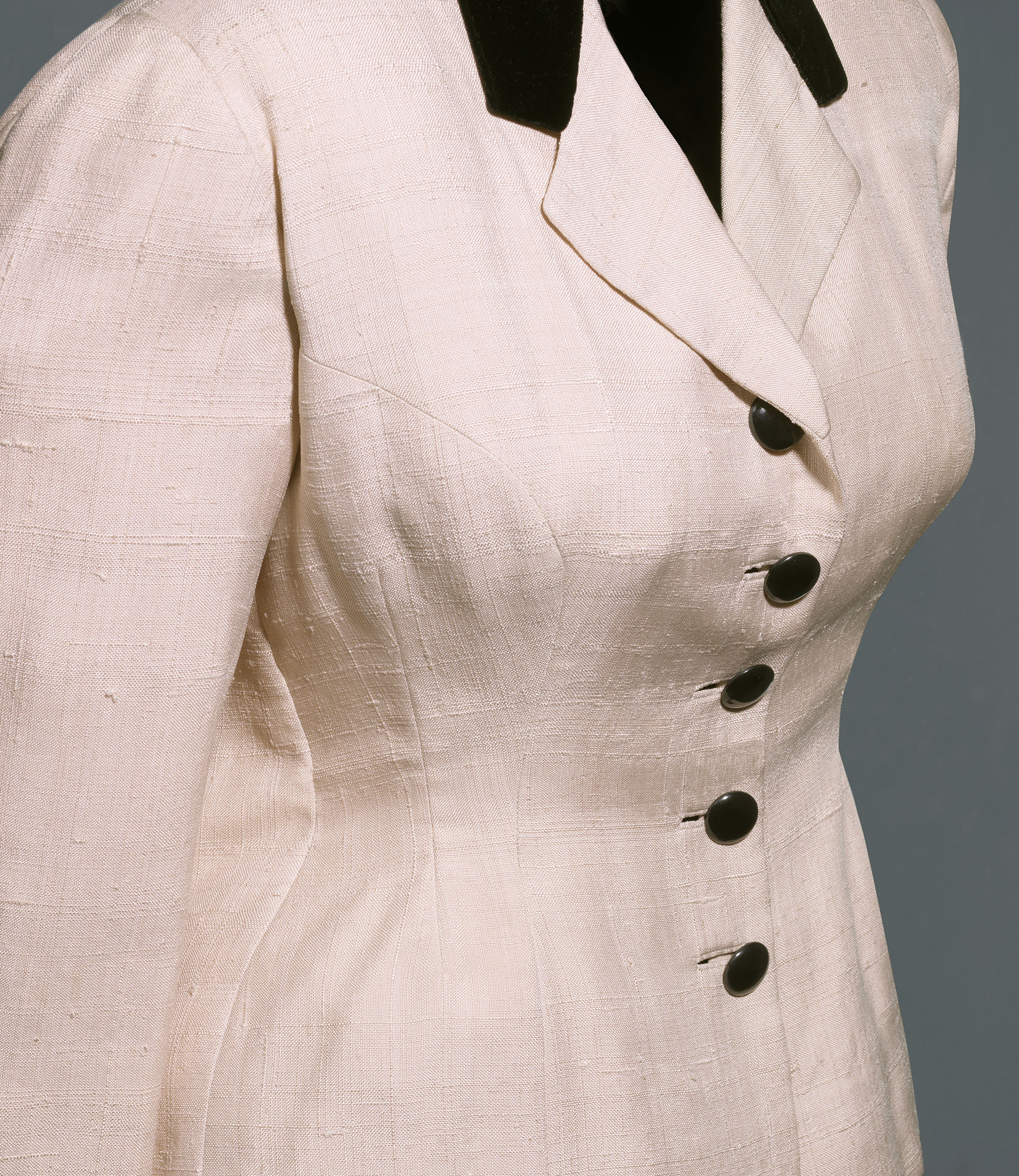
Opening up heritage: Archive and digitalización
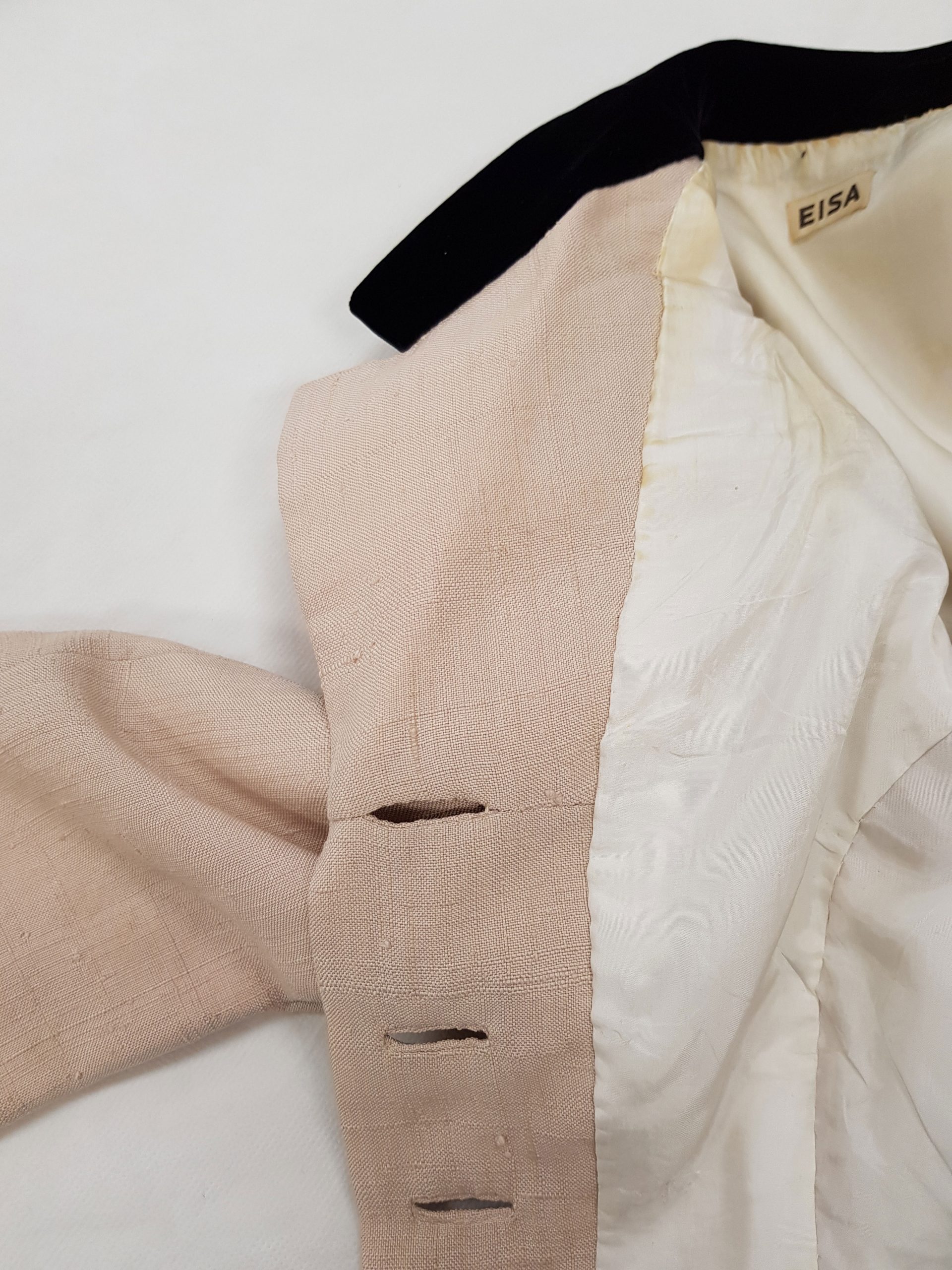
The Cristóbal Balenciaga Museum aims to house a research and creation centre where documentary, bibliographic and digital resources on fashion are centred and can be accessed by researchers, educators and professionals. To this end, in recent years, the Museum has been immersed in a process of digitising the archive of textile collections, making exact replicas – the “study collection” – and analysing the works and fabrics in order to offer another type of access to an archive which, for conservation reasons, must be restricted.

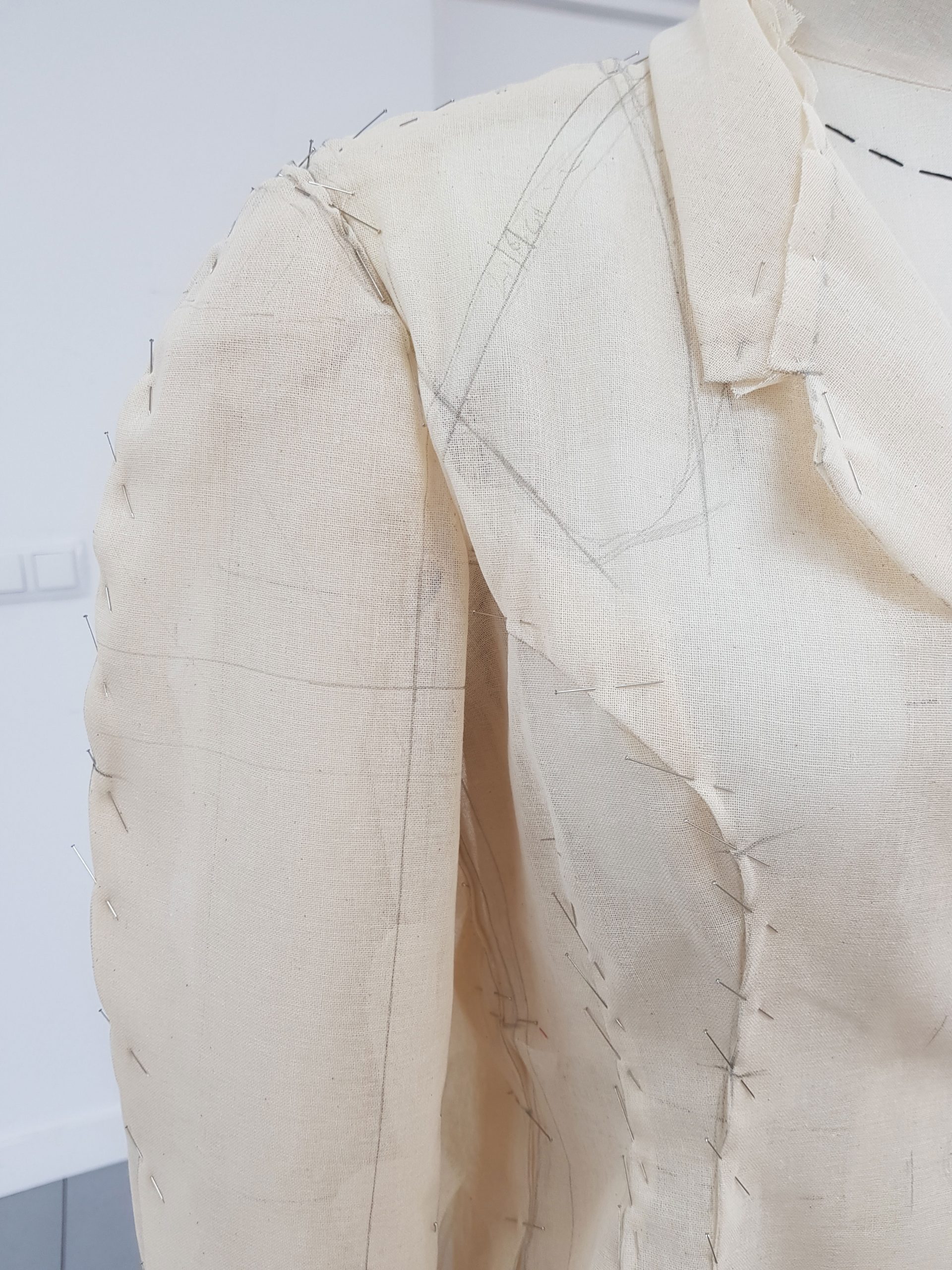
Centre visitors will be able to access the digitised archive of the textile collection and the works that make up the “study collection” for educational purposes; the library that specialises in fashion and subscriptions to international press databases and trend archives; and finally, the Museum’s textile library and cutting-edge technological tools for design and creation. The centre will also have its own programme of residencies, scholarships and training courses.
Jacket in wild pink silk taffeta, 1951
Characteristics of the semifit jacket
An interesting example among the works in the archive is this “semi-fitted” jacket from 1951 which, as one of the reference works in the collection, has been one of the first pieces selected for analysis, digitisation and exhaustive documentation.
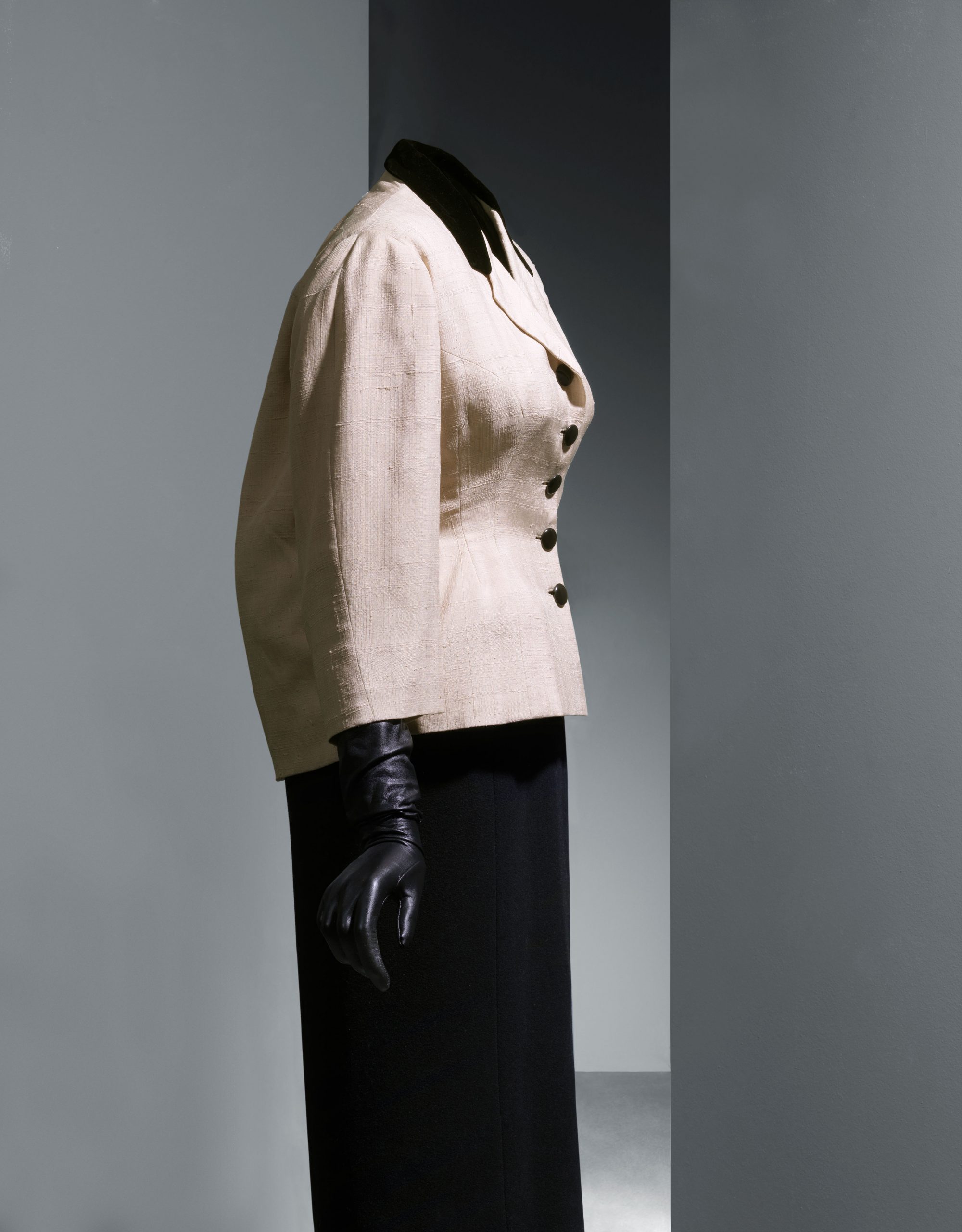
The jacket is hip-length and open at the front, with a black velvet turn-down collar and lapel. The front is fitted at the waist with pleats. The back, which is straight and loose fitting, meets the shoulder line with two pleats, while the three-quarter sleeve is made of three panels. It is lined with ivory-coloured silk taffeta and has an inner belt loop that holds the garment to the body, leaving the exterior of the jacket free and further accentuating the loose-fitting back. This magnificent design, which testifies to Balenciaga’s innovative spirit, is the semi-fitted suit, which the couturier introduced in 1951 and which constituted a revolution in the corseted silhouette of the time. The front is fitted to the torso while the back is loose, creating an arched volume that not only allows for greater movement, but also suggests a certain abstraction of the female physiognomy.
Construction of the semifit jacket
This piece is unique in its Cristóbal Balenciaga style, and also among his collection. It is a great example of the couturier‘s creative legacy. The Cristóbal Balenciaga Museum provides replicas and audiovisual material to facilitate research and study.
“Prestige remains, fame is ephemeral”.
Cristóbal Balenciaga

Cardiva was founded in Bilbao in 1989. Today it is one of the first companies dedicated to the commercialisation and manufacture of healthcare products. Its goal is to transform lives through innovative solutions that improve the health of patients and promote the sustainability of health systems. It has paved the way in its sector, and shares its core values of innovation, quality and responsibility with the Museum.





